Forums
- Forums
- Axis And Allies Forum
- General Discussion
- Aviation News
Aviation News
Post a reply
- Go to Previous topic
- Go to Next topic
- Go to Welcome
- Go to Introduce Yourself
- Go to General Discussion
- Go to Screenshots, Images and Videos
- Go to Off topic
- Go to Works in Progress
- Go to Skinning Tips / Tutorials
- Go to Skin Requests
- Go to IJAAF Library
- Go to Luftwaffe Library
- Go to RAF Library
- Go to USAAF / USN Library
- Go to Misc Library
- Go to The Ops Room
- Go to Made in Germany
- Go to Campaigns and Missions
- Go to Works in Progress
- Go to Juri's Air-Raid Shelter
- Go to Campaigns and Missions
- Go to Works in Progress
- Go to Skinpacks
- Go to External Projects Discussion
- Go to Books & Resources
-
 Main AdminA U.S. Marine Corps MV-22B Osprey with Marine Medium Tiltrotor Squadron (VMM) 162 (REIN), 26th Marine Expeditionary Unit (MEU), prepares for takeoff in support of the Defense Support to Civil Authority (DSCA) mission at Marine Corps Air Station New River, N.C., Aug. 31, 2017. VMM-162 (REIN) sent MV-22B Ospreys to join the 690 Marines from the 26th MEU embarked aboard the USS Kearsarge (LHD 3) as part of prudent measures in anticipation of future tasking to support relief in the aftermath of Hurricane Harvey. (U.S. Marine Corps photo by Lance Cpl. Jered T. Stone)
Main AdminA U.S. Marine Corps MV-22B Osprey with Marine Medium Tiltrotor Squadron (VMM) 162 (REIN), 26th Marine Expeditionary Unit (MEU), prepares for takeoff in support of the Defense Support to Civil Authority (DSCA) mission at Marine Corps Air Station New River, N.C., Aug. 31, 2017. VMM-162 (REIN) sent MV-22B Ospreys to join the 690 Marines from the 26th MEU embarked aboard the USS Kearsarge (LHD 3) as part of prudent measures in anticipation of future tasking to support relief in the aftermath of Hurricane Harvey. (U.S. Marine Corps photo by Lance Cpl. Jered T. Stone)
Airmen of the 552nd Air Control Wing prepare an E-3 Airborne Warning and Control System aircraft for a mission in support of the ongoing humanitarian efforts for Hurricane Harvey Aug. 31, 2017, Tinker Air Force Base, Oklahoma. E-3 AWACS aircraft have been flying from Tinker AFB to provide airborne radar and communication relay capability to the aircraft and controllers involved in rescue and evacuation operations in the Houston area. (U.S. Air Force photo/Greg L. Davis)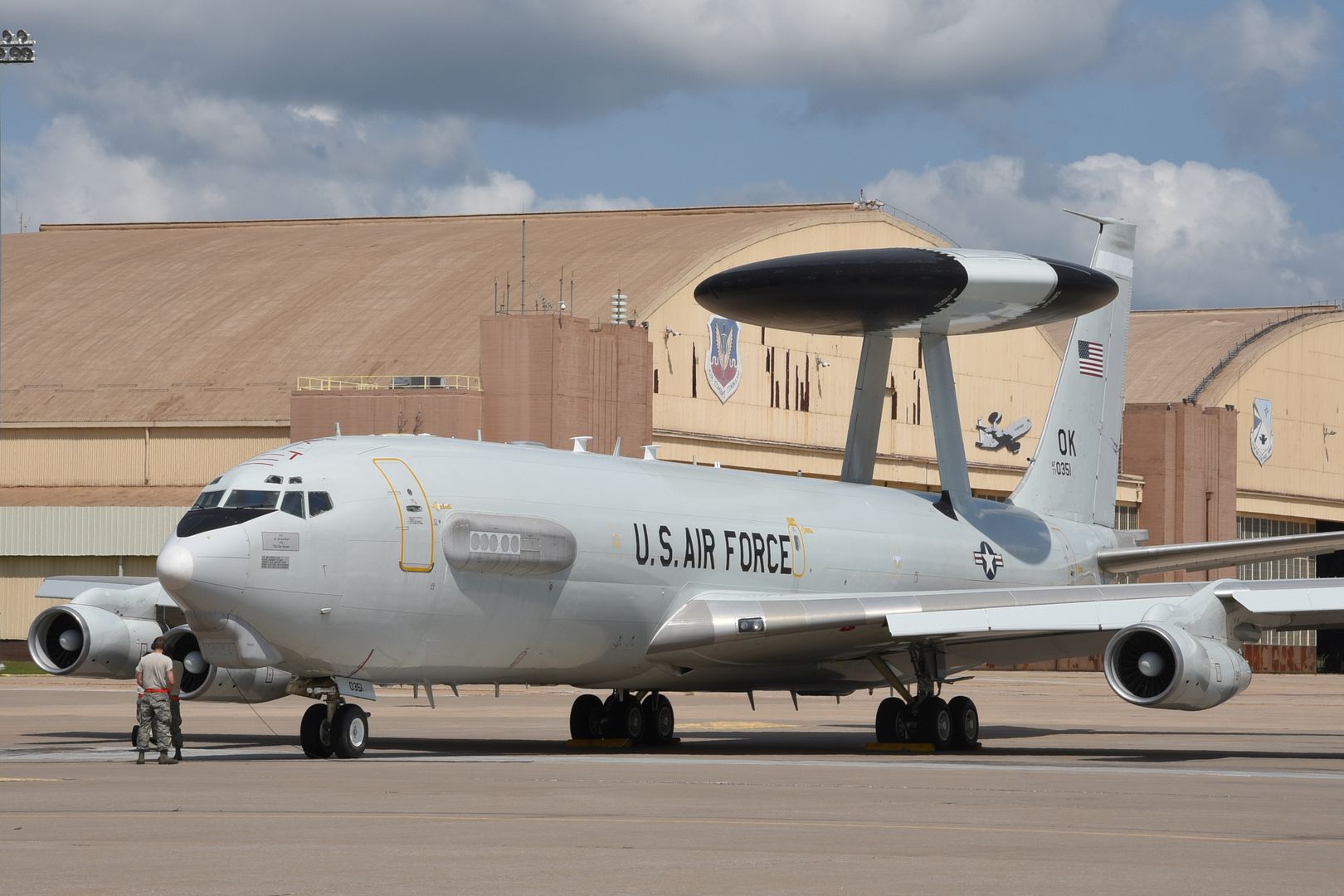
A C-17A is preparing for takeoff, Kelly Field Annex, Tx., Aug. 30, 2017. This C-17A is filled with supplies that will be delivered to those that have been affected by Hurricane Harvey. (U.S. Army photo by Ssg. Carl Greenwell)
An HH-60G Pave Hawk, assigned to the 41st Rescue Squadron waits for an evacuee onload, Aug. 30, 2017, in the Houston, Texas area. The 347th Rescue Group from Moody Air Force Base, Ga. responded with its rescue aircraft and personnel in support of FEMA after Hurricane Harvey brought flooding and destruction to parts of Texas. (U.S. Air Force photo by Tech. Sgt. Zachary Wolf)
PACIFIC OCEAN (Aug. 30, 2017) An MH-60S Seahawk, assigned to the Indians of Helicopter Sea Combat Squadron (HSC) 6, takes off the flight deck of the aircraft carrier USS Theodore Roosevelt (CVN 71). Theodore Roosevelt is underway conducting a composite training unit exercise (COMPTUEX) with the Theodore Roosevelt Carrier Strike Group in preparation for an upcoming deployment. COMPTUEX tests a carrier strike group?s mission readiness and ability to perform as an integrated unit through simulated real-world scenarios. (U.S. Navy photo by Mass Communication Specialist 3rd Class Anthony J. Rivera/Released)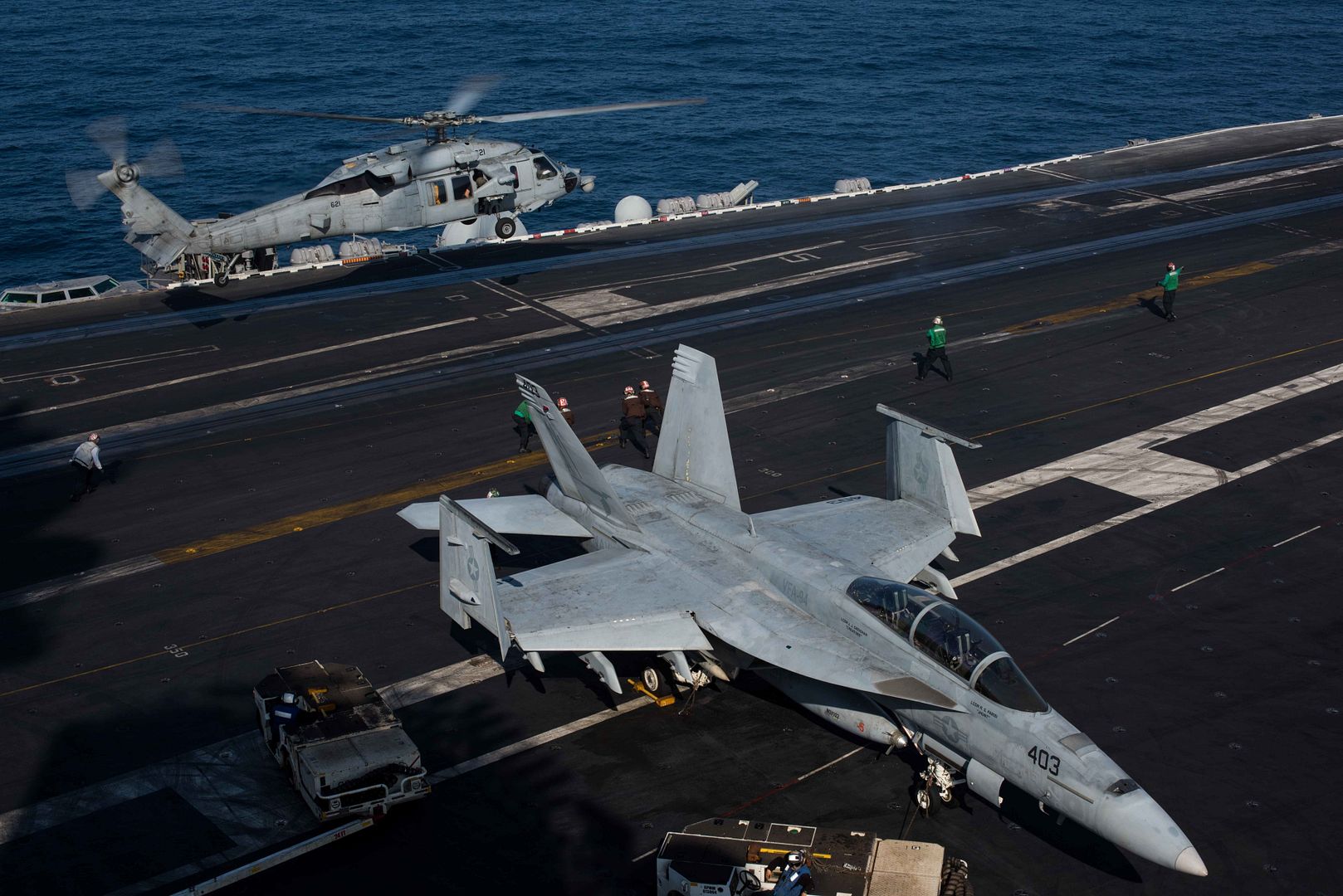
An MH-53E Sea Dragon assigned to the HM-15, Naval Station Norfolk, Va, flies near Houston, Texas, Aug. 31, 2017. Hurricane Harvey formed in the Gulf of Mexico and made landfall in southeastern Texas, bringing record flooding and destruction to the region. U.S. military assets supported FEMA as well as state and local authorities in rescue and relief efforts.
(U.S. Air Force photo by Tech. Sgt. Larry E. Reid Jr.)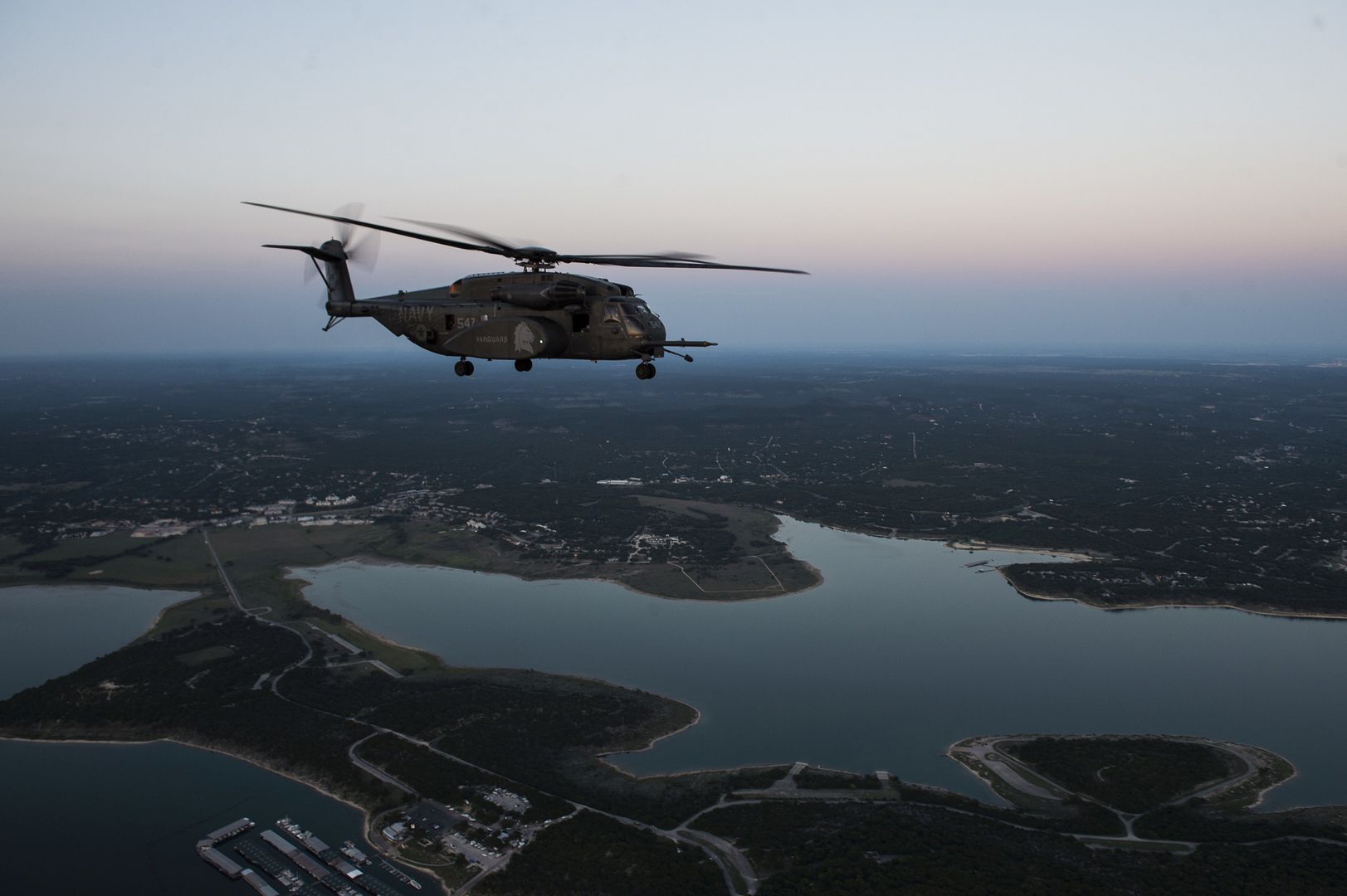
A U.S. Air Force F-16 Fighting Falcon, assigned to the 35th Fighter Wing, conducts a touch-and-go landing at Misawa Air Base, Japan, Aug. 31, 2017. Team Misawa personnel operate in the ?fight tonight? mentality, providing worldwide deployable forces, protecting U.S. allies within the Indo-Asia-Pacific region, sustaining a forward presence and providing focused mission support. If a real-world incident occurs, Misawa AB transforms into a power projection hub for contingency operations, supporting forward-deployed assets. (U.S. Air Force photo by Staff Sgt. Deana Heitzman)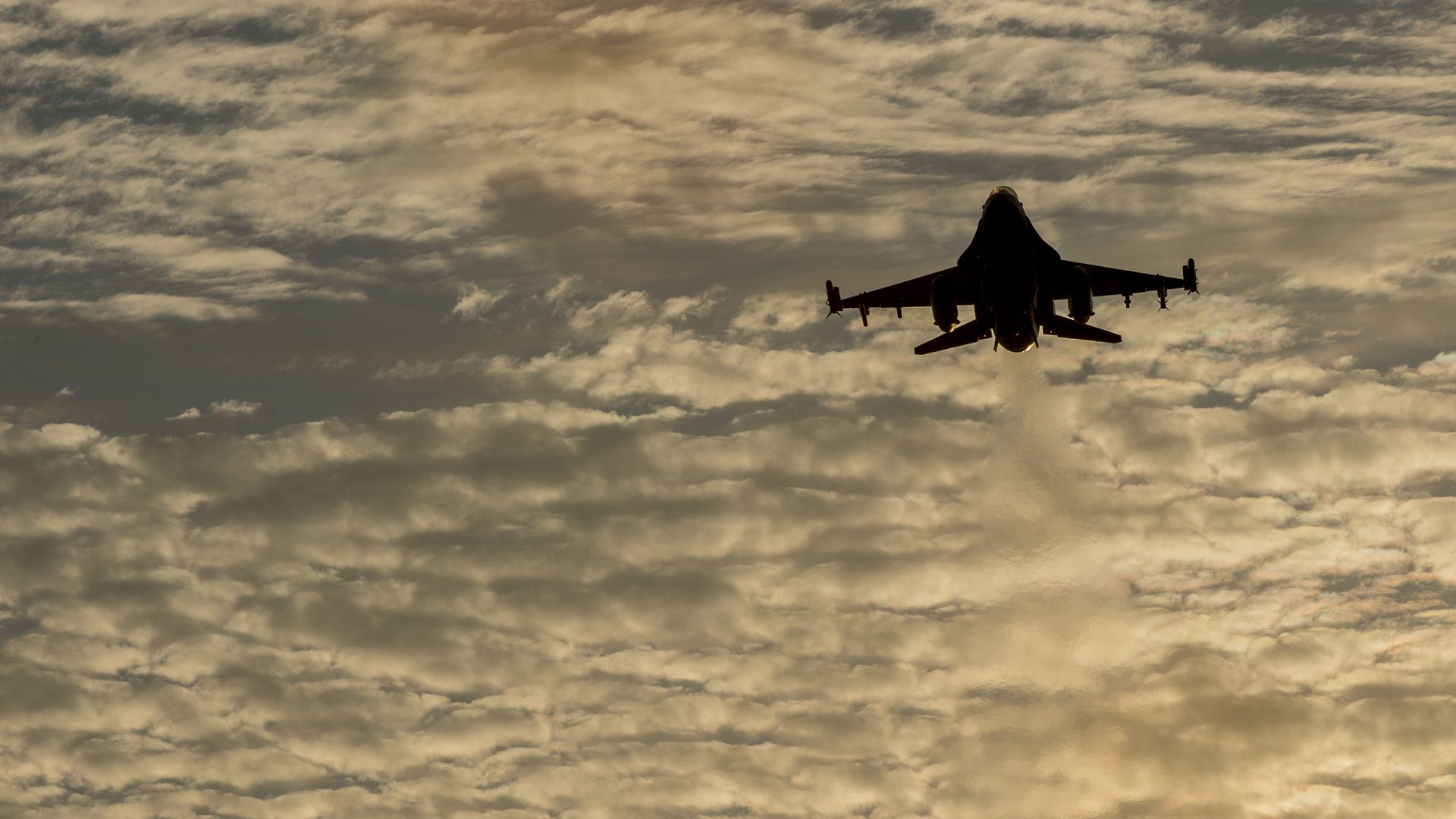
A U.S. Air Force B-52 Stratofortress receives fuel from a KC-135 Stratotanker during a flight Aug. 28, 2017. Despite being in the Air Force inventory for more than 50 years, B-52s continue to provide precision-guided weapons capabilities to Operation Inherent Resolve. The aircraft's payload capacity of 70,000 pounds can include gravity bombs, cluster bombs, precision-guided missiles and Joint Direct Attack Munitions. (U.S. Air Force photo by Staff Sgt. Michael Battles)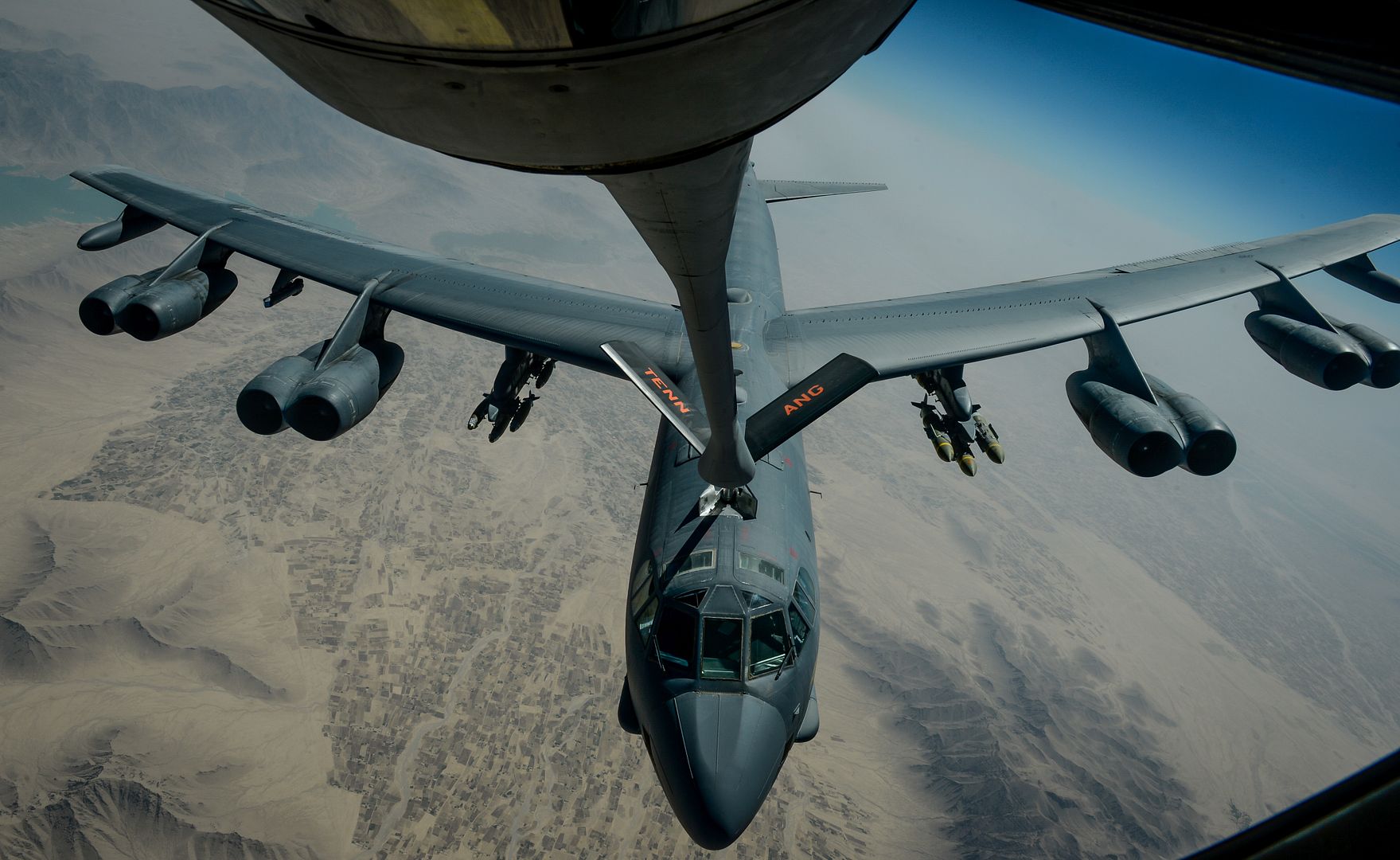
A U.S. Air Force B-52 Stratofortress departs after receiving fuel from a KC-135 Stratotanker during a flight Aug. 28, 2017. Despite being in the Air Force inventory for more than 50 years, B-52s continue to provide precision-guided weapons capabilities to Operation Inherent Resolve. The aircraft's payload capacity of 70,000 pounds can include gravity bombs, cluster bombs, precision-guided missiles and Joint Direct Attack Munitions. (U.S. Air Force photo by Staff Sgt. Michael Battles)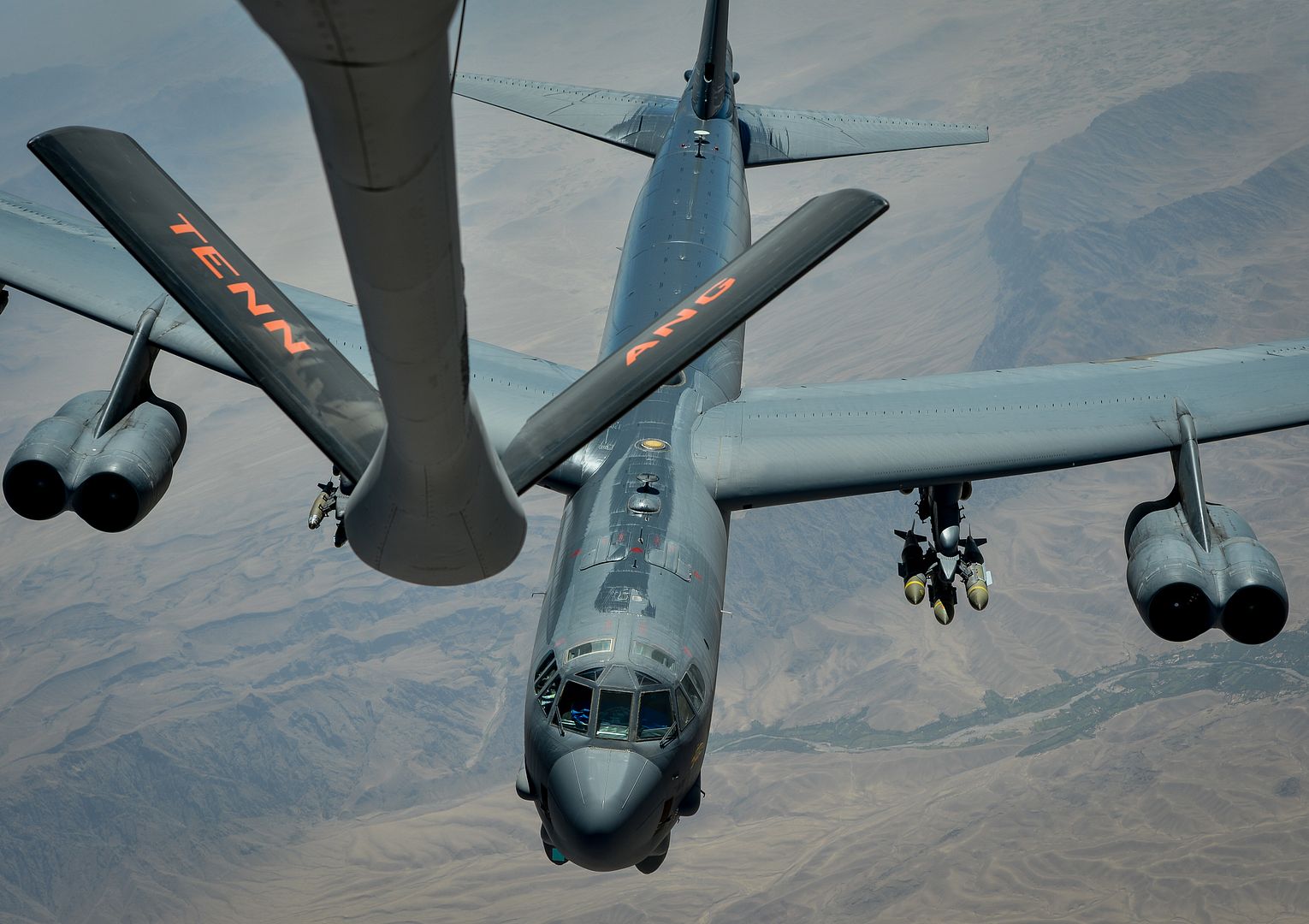
A U.S. Air Force B-52 Stratofortress flies above Southwest Asia Aug. 28, 2017. Despite being in the Air Force inventory for more than 50 years, B-52s continue to provide precision-guided weapons capabilities to Operation Inherent Resolve. The aircraft's payload capacity of 70,000 pounds can include gravity bombs, cluster bombs, precision-guided missiles and Joint Direct Attack Munitions. (U.S. Air Force photo by Staff Sgt. Michael Battles)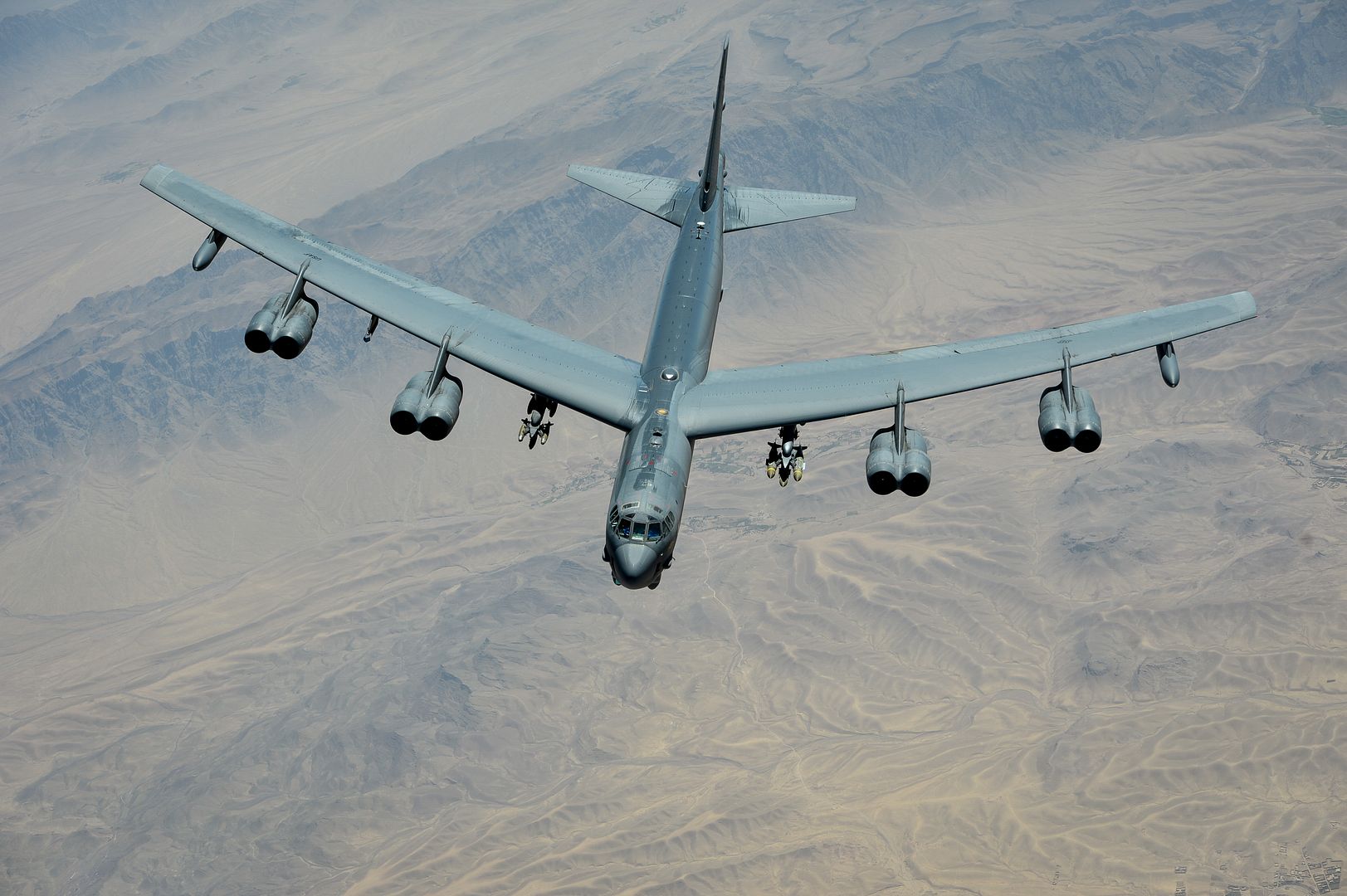
15th carrier to fly world?s newest long haul aircraft
Hong Kong Airlines has taken delivery of its first A350-900, on lease from AerCap, making the carrier the 15th airline to operate the world?s newest and most efficient twin aisle airliner. Altogether Hong Kong Airlines will acquire 21 Airbus A350 XWB, including 15 purchased directly from Airbus and six on lease from third party lessors.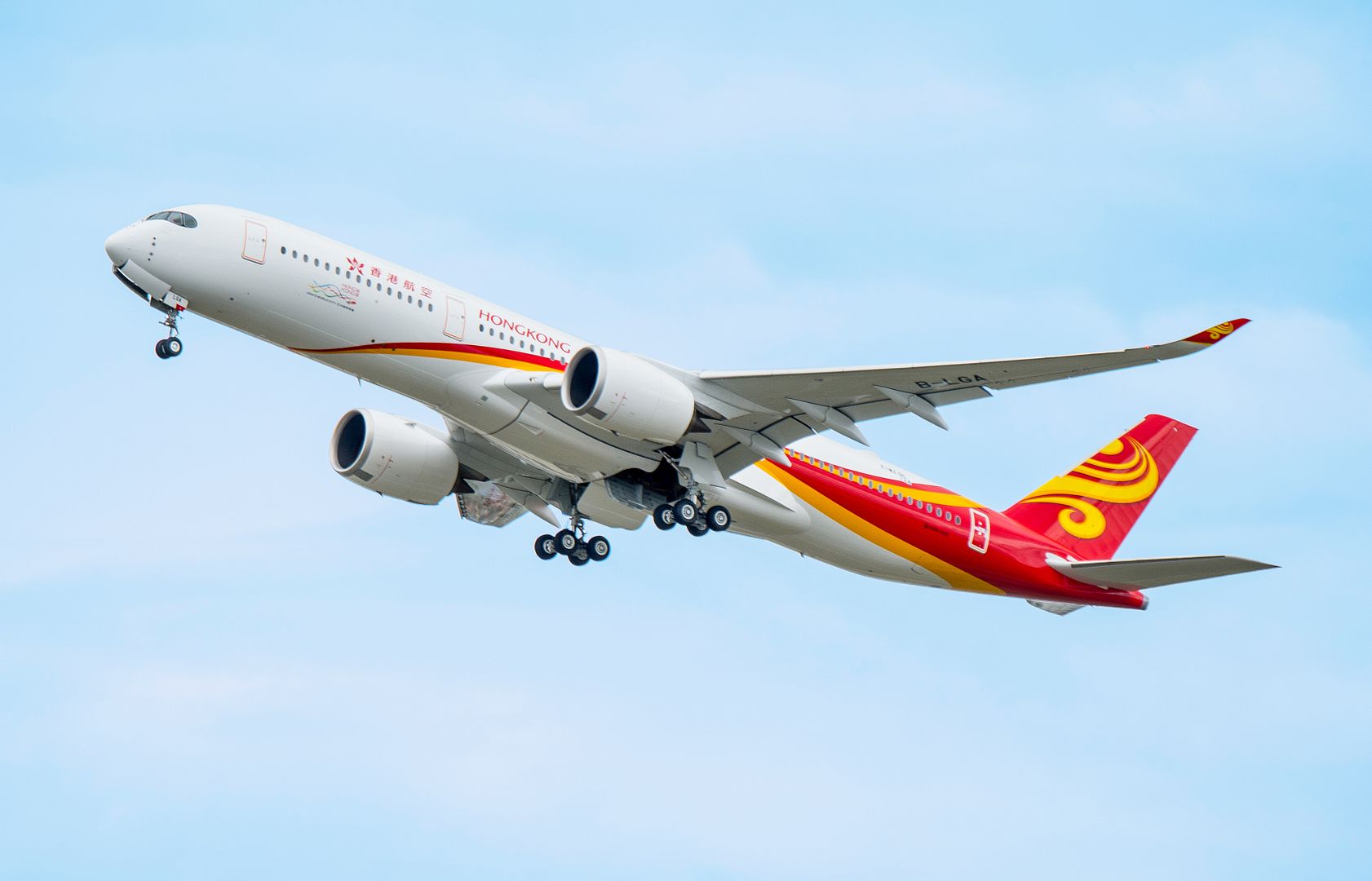
The A350 XWB will bring unrivalled eco-efficiency and a superior passenger experience to the carrier?s network. Hong Kong Airlines has configured its A350-900 with a premium three-class layout with a total of 334 seats, comprising 33 in Business Class, convertible to fully lie-flat beds, 108 in the new cabin class ?Economy Comfort? and 193 in Economy Class. The aircraft features the airline?s latest cabin products, including an all-new entertainment system and full in-flight connectivity. After an initial period flying on regional routes, Hong Kong Airlines? A350-900 will begin long haul operations in December this year, flying on the carrier?s non-stop service to Los Angeles.
The A350 XWB features the latest aerodynamic design, carbon fibre fuselage and wings, plus new fuel-efficient Rolls-Royce engines. Together, these latest technologies translate into unrivalled levels of operational efficiency, with a 25 per cent reduction in fuel burn and emissions, and significantly lower maintenance costs. As the founding member of ?Airspace by Airbus? cabin brand, the A350 XWB cabin provides passengers and crews the best in comfort, well-being and technology.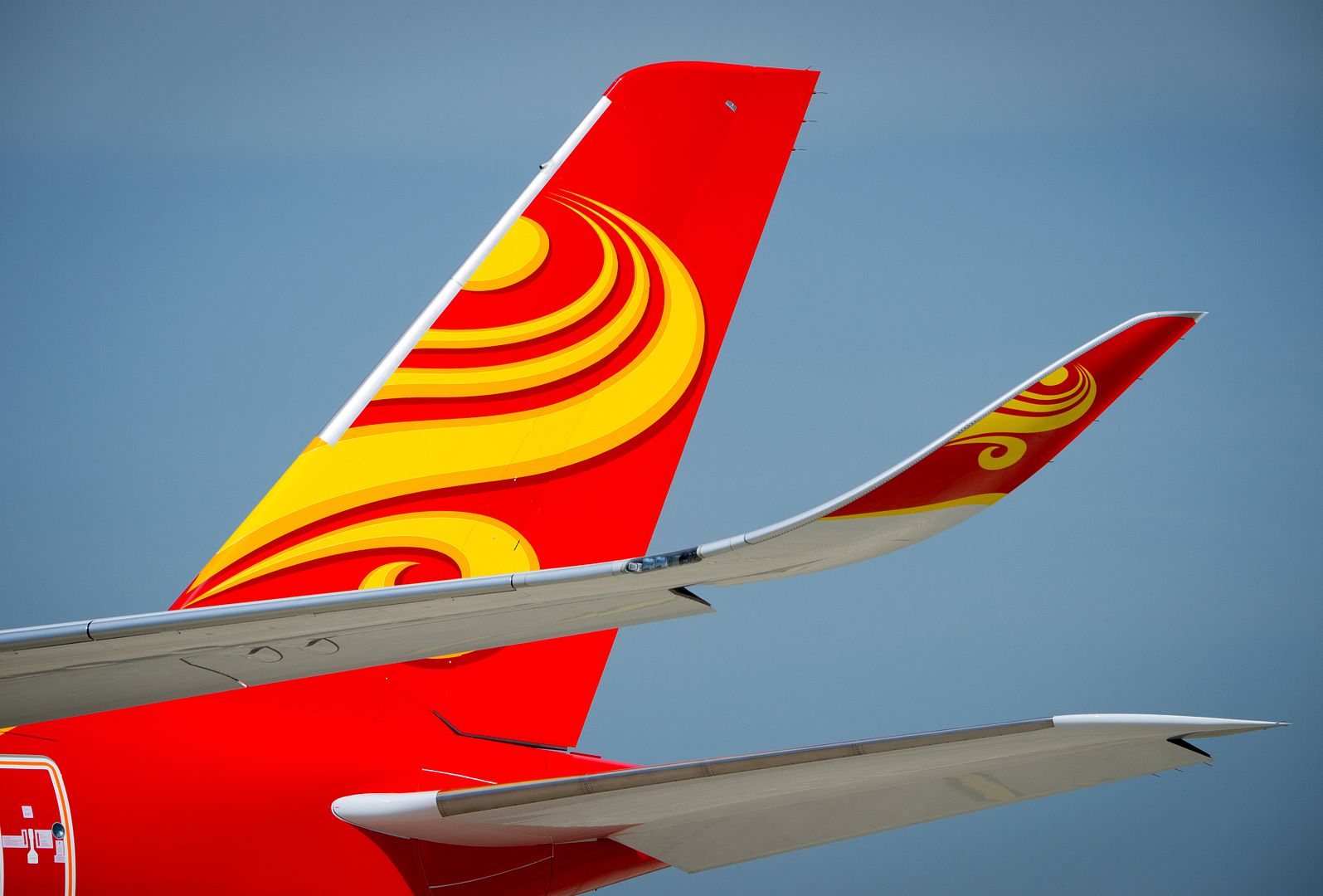
To date, Airbus has recorded a total of 848 firm orders for the A350 XWB from 45 customers worldwide, already making it one of the most successful wide-body aircraft ever. With 287 firm orders for the A350 from carriers in Asia-Pacific, the region represents over a third of total sales for the type to date.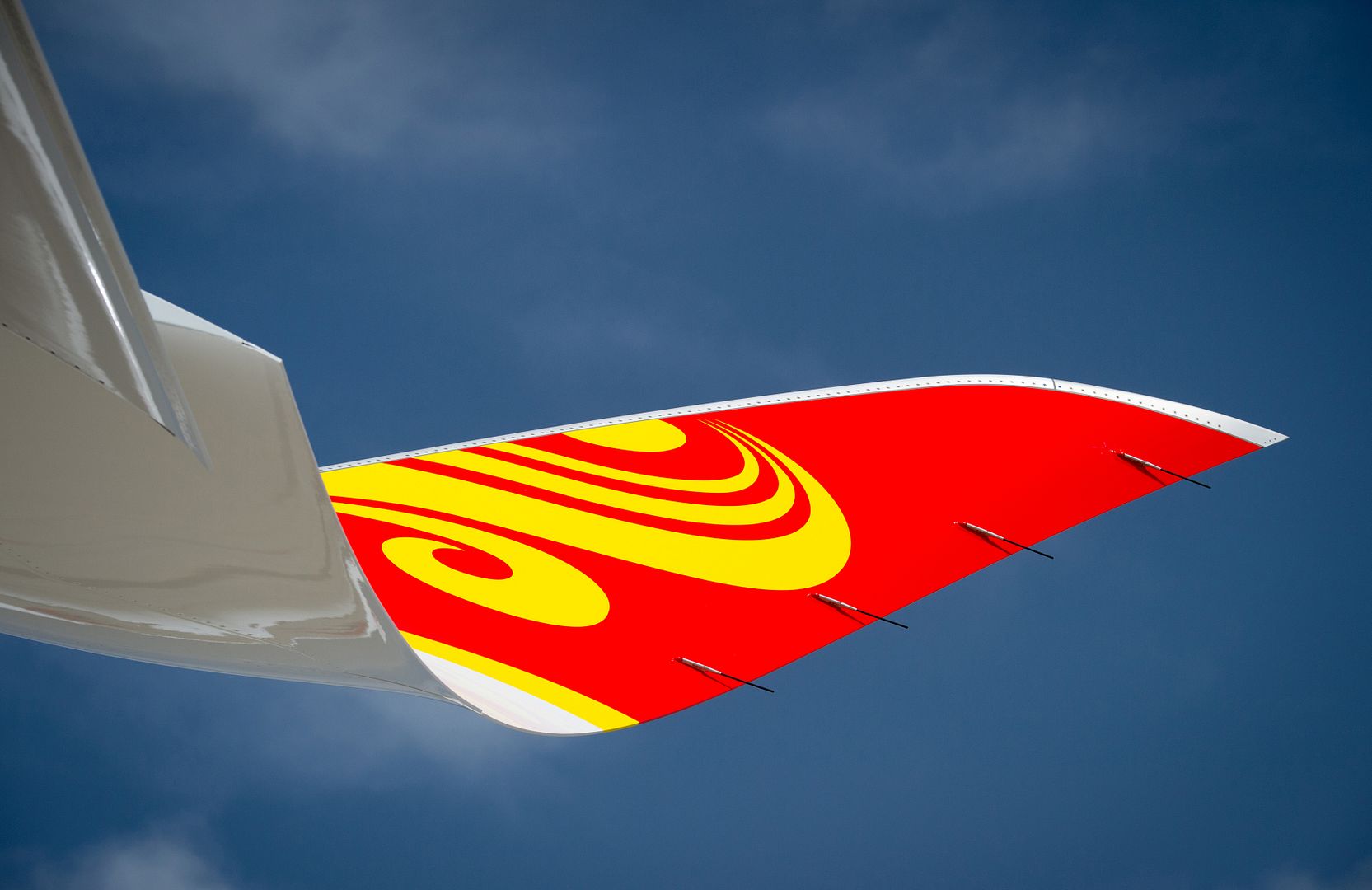
-
 Main AdminA C-17 Globemaster III from Joint Base McGuire-Dix-Lakehurst carries 375th Aeromedical Evacuation Squadron personnel and humanitarian aid cargo in support of the Hurricane Harvey relief and response efforts, Scott Air Force Base, Ill., Aug. 30, 2017. The 375th AES will be staged at Little Rock Air Force Base, where the team will pick up high-priority patients from George Bush Intercontinental Airport and transport them to one of seven hospital locations across the states of Texas, Oklahoma, Louisiana, Tennessee Mississippi, and Alabama. (U.S. Air Force photo by Tech. Sgt. Jodi Martinez)
Main AdminA C-17 Globemaster III from Joint Base McGuire-Dix-Lakehurst carries 375th Aeromedical Evacuation Squadron personnel and humanitarian aid cargo in support of the Hurricane Harvey relief and response efforts, Scott Air Force Base, Ill., Aug. 30, 2017. The 375th AES will be staged at Little Rock Air Force Base, where the team will pick up high-priority patients from George Bush Intercontinental Airport and transport them to one of seven hospital locations across the states of Texas, Oklahoma, Louisiana, Tennessee Mississippi, and Alabama. (U.S. Air Force photo by Tech. Sgt. Jodi Martinez)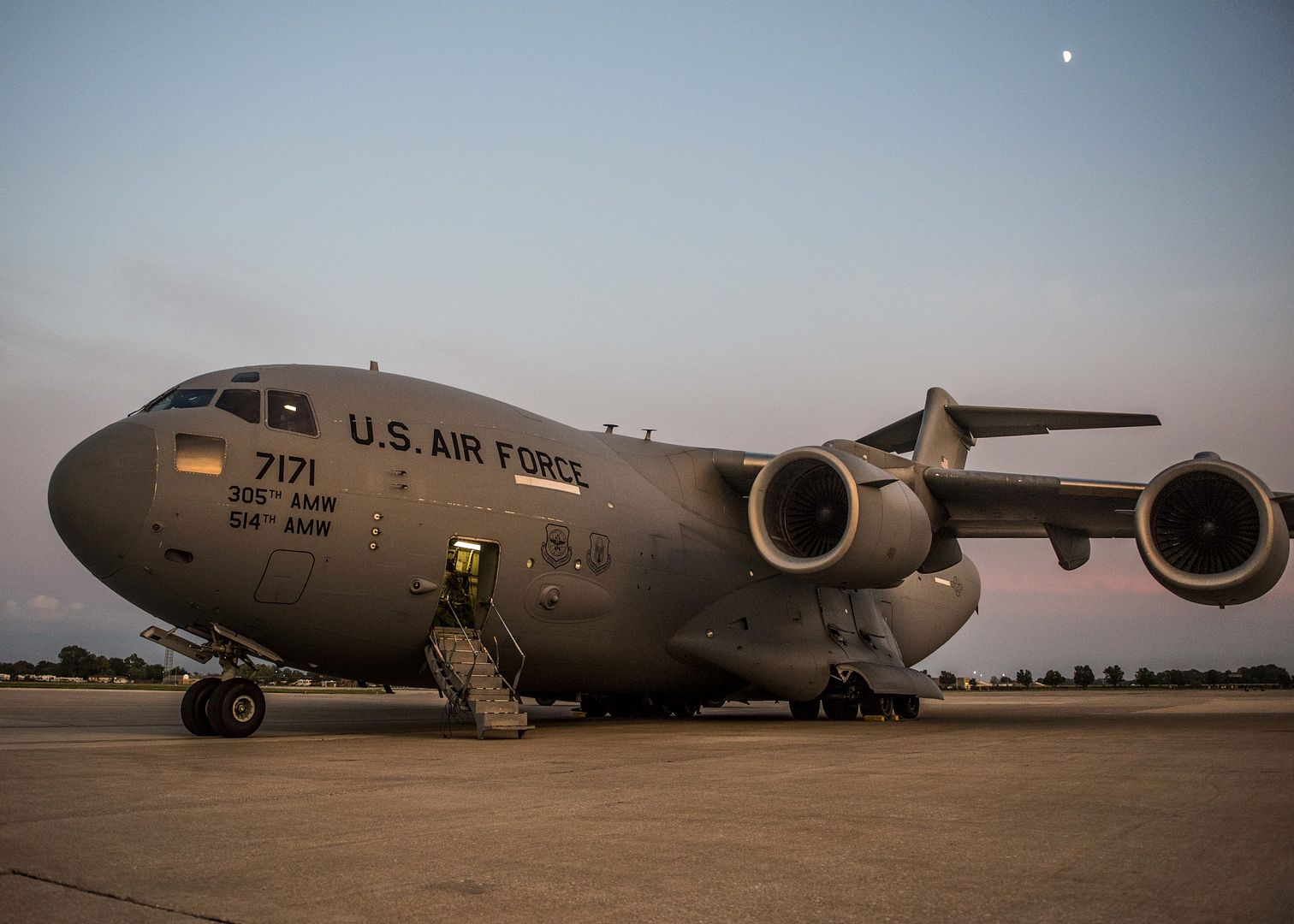
U.S. Air National Guardsmen Maj. Danny Ariza (left) Capt. Nate Southwick (right) and loadmaster Staff Sgt. Garret Gillette (center) follow a U.S. Forrest Service lead plane under a large column of smoke preparing to drop retardant on the Pier Fire southeast of Fresno California inside a C-130J aircraft from the 146th Airlift Wing, equipped with the Modular Airborne Fire Fighting System (MAFFS), August 29, 2017. Air National Guard and Air Force Reserves C-130 aircraft equipped with the MAFFS systems have been assisting United States Forrest Service wildfire suppression efforts out of Fresno Air Tanker Base since August 10, 2017. Together they have accomplished more than 200 drops and 530,000 gallons of retardant this season. (U.S. Air National Guard photo by: Tech. Sgt. Jeff Allen.)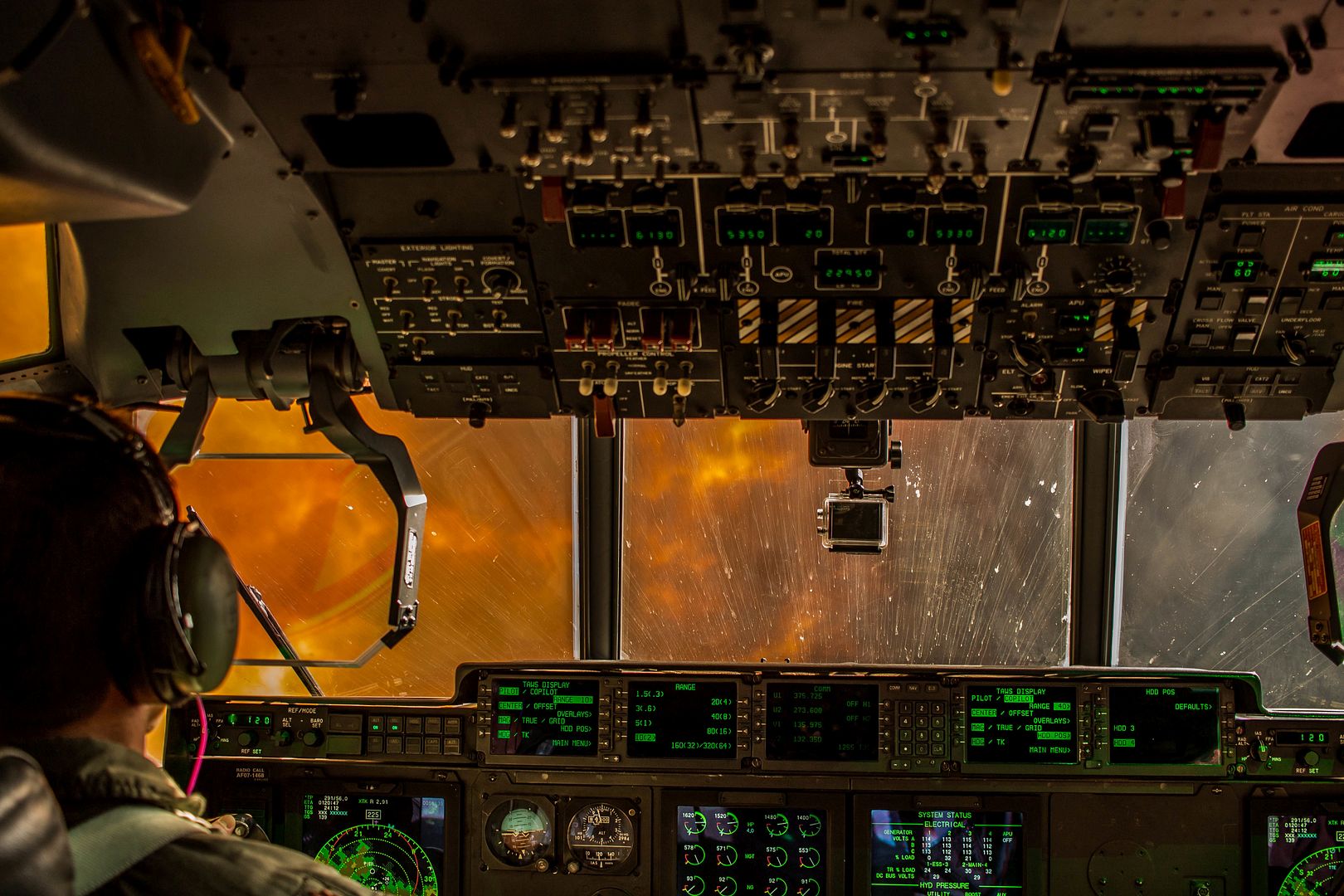
U.S Customs and Border Protectio, Air and Marine Operations along with multiple other agencies and good citizens provide support to communities impacted by Hurricane Harvey in Beaumont, Texas on August 30, 2017.
Photo by Donna Burton
An E-3 Sentry flies over southeast Texas after a mid-air refueling, Sept. 1, 2017. The Sentry was providing command and control for the airspace over Hurricane Harvey relief efforts. (U.S. Air Force photo by 2nd Lt. Faith Brodkorb)
An F-16 Fighting Falcon parks on the flightline at Bagram Airfield, Afghanistan, Aug. 31, 2017. Additional F-16s were added to Bagram?s fleet, bolstering their ability to provide close-air-support for coalition forces. (U.S. Air Force photo by Staff Sgt. Benjamin Gonsier)
MH-53E Sea Dragon pilots with Helicopter Mine Countermeasures Squadron 14 perform pre-flight checks prior Aug. 31, 2017, at Joint Base San Antonio-Lackland, Texas, for Hurricane Harvey relief missions. The unit flew in from Key West, Fla., and has already supported several logistics missions for Federal Emergency Management Agency transporting food, water and supplies. (U.S. Air Force photo by Ismael Ortega)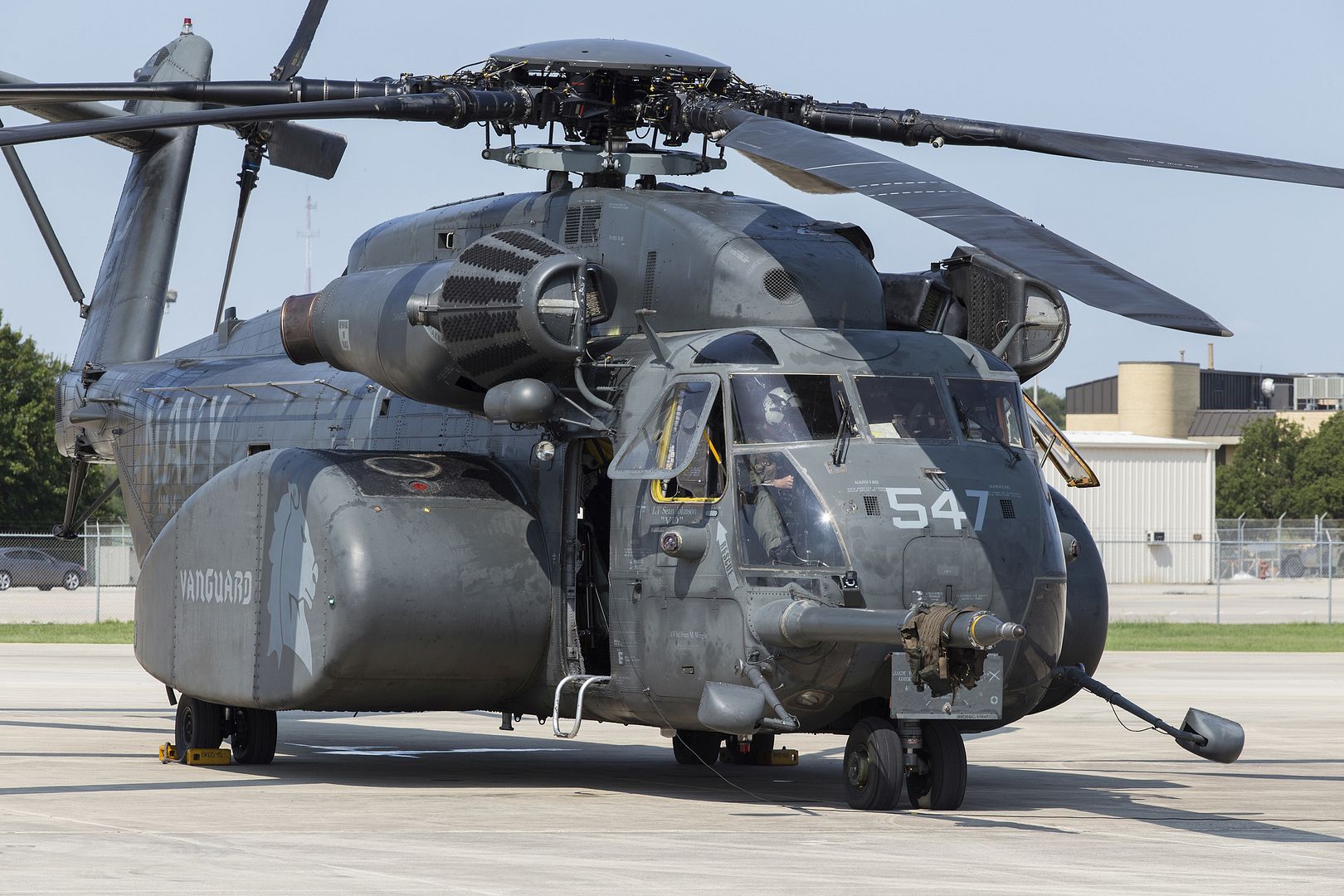
CAMP H.M. SMITH, Hawaii --
The United States? newest and most advanced fighter, the U.S. Marine Corps? F-35B Lightning II, joined U.S. Air Force B-1B Lancers for the first time in a sequenced bilateral mission with Japan and Republic of Korea air forces in Northeast Asia August 30.
Two B-1Bs from Andersen Air Force Base, Guam; four U.S. Marine F-35Bs from Marine Corps Air Station Iwakuni, Japan; two Koku Jieitai (Japan Air Self-Defense Force) F-15Js; and four Republic of Korea Air Force (ROKAF) F-15Ks executed this mission to emphasize the combined ironclad commitment to the defense of Allies and the U.S. homeland. Enhancing combined military readiness through integrated missions ensures national leaders of viable and ready military options.
This mission was conducted in direct response to North Korea?s intermediate-range ballistic missile launch, which flew directly over northern Japan on August 28 amid rising tension over North Korea?s nuclear and ballistic missile development programs.
"North Korea's actions are a threat to our allies, partners and homeland, and their destabilizing actions will be met accordingly,? said Gen. Terrence J. O?Shaughnessy, Commander, U.S. Pacific Air Forces, who just returned from an unscheduled visit to Japan to meet with his counterparts. ?This complex mission clearly demonstrates our solidarity with our allies and underscores the broadening cooperation to defend against this common regional threat. Our forward-deployed force will be the first to the fight, ready to deliver a lethal response at a moment?s notice if our nation calls."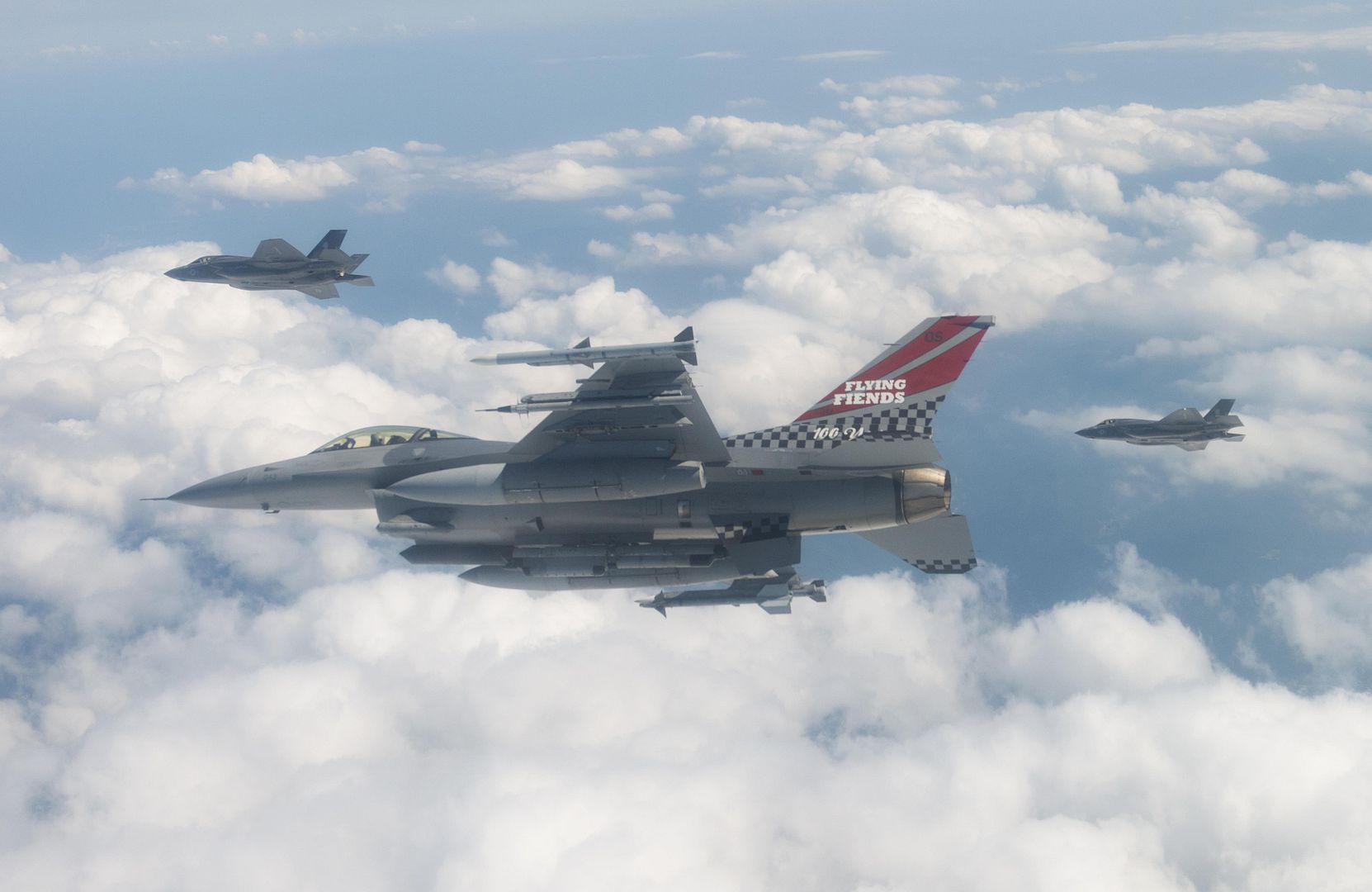
Over the course of the 10-hour mission, the F-35Bs, B-1B bombers and Koku Jieitai fighters flew together over waters near Kyushu, Japan. The U.S. and ROKAF aircraft then flew across the Korean Peninsula and practiced attack capabilities by releasing live weapons at the Pilsung Range training area before returning to their respective home stations.
"The F-35 embodies our commitment to our allies and contributes to the overall security and stability of the Indo-Asia Pacific region," said Lt. Gen. David H. Berger, commander, U.S. Marine Corps Forces Pacific. "By forward-basing the F-35, the most advanced aircraft in the world, here in the Pacific, we are enabling the Marine Corps to respond quickly during a crisis in support of Japan, the Republic of Korea, and all our regional partners."
U.S. Pacific Command maintains strategic bomber and fighter capabilities in the Indo-Asia-Pacific theater, retaining the ability to respond to any regional threat at a moment?s notice.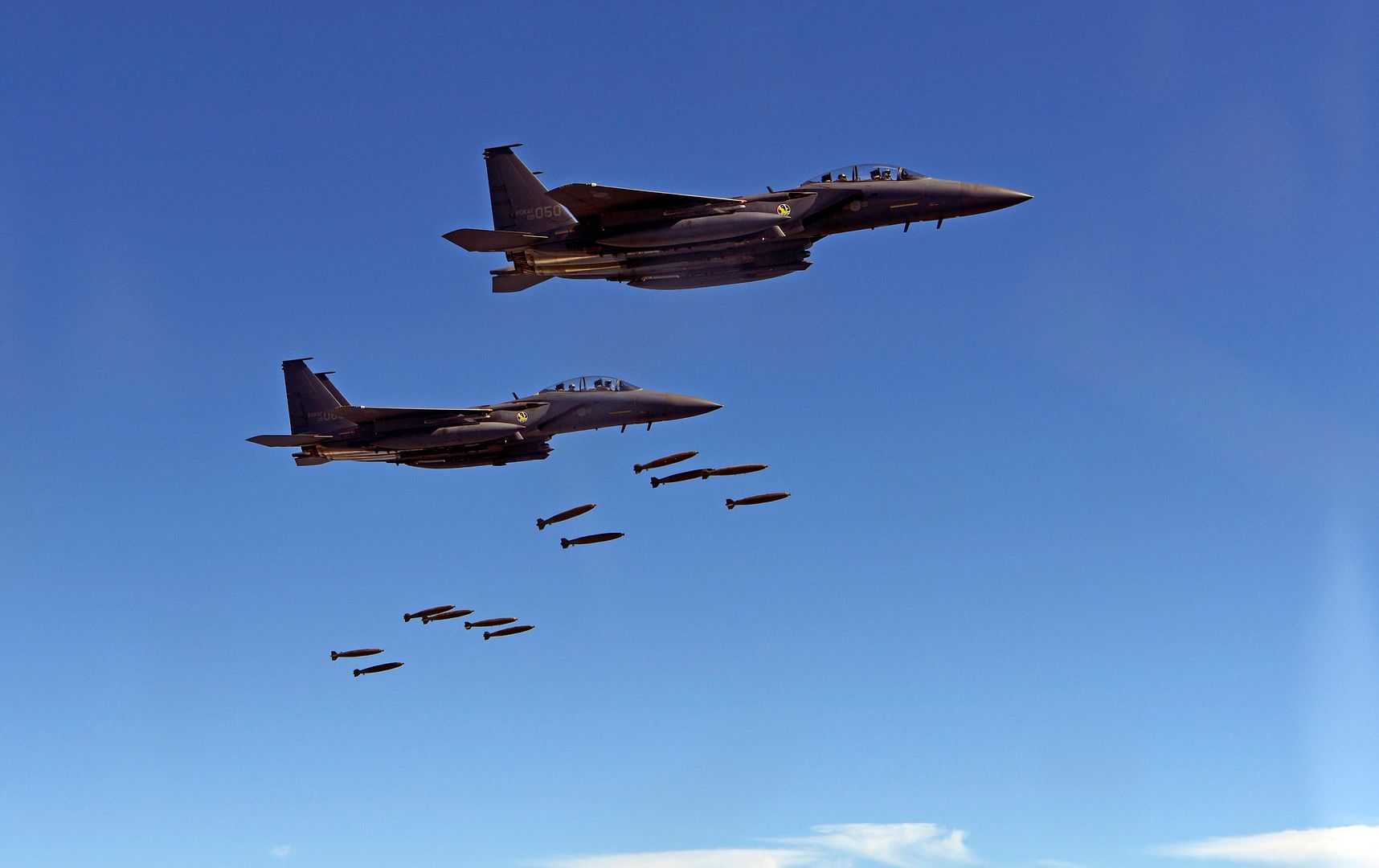
STRATFORD, Conn., Sept. 1, 2017 /PRNewswire/ -- Naval Air Systems Command, Patuxent River, Maryland, has awarded Lockheed Martin (NYSE: LMT) a Low Rate Initial Production (LRIP) Lot 1 contract to build two production CH-53K King Stallion helicopters. This contract follows the April 4, 2017, Milestone C decision by the Defense Acquisition Board (DAB) approving LRIP production.
"Gaining the U.S. Marine Corps approval to enter into production and the award of the first contract are milestones made possible by the tremendous achievements of the joint Sikorsky, Naval Air Systems Command (NAVAIR) and U.S. Marine Corps team," said Dr. Mike Torok, vice president, CH-53K programs. "This is what we have been striving for - to deliver this amazing capability to the U.S. Marine Corps."
Under the $303,974,406 million contract, Sikorsky will deliver two production aircraft to the U.S. Marine Corps in 2020 along with spares and logistical support. Aircraft assembly will take place at Sikorsky's headquarters in Stratford, Connecticut.
"We have just successfully launched the production of the most powerful helicopter our nation has ever designed. This incredible capability will revolutionize the way our nation conducts business in the battlespace by ensuring a substantial increase in logistical through put into that battlespace. I could not be prouder of our government-contractor team for making this happen," said Col Hank Vanderborght, U.S. Marine Corps program manager for the Naval Air Systems Command's Heavy Lift Helicopters program, PMA-261.
The CH-53K King Stallion provides unmatched capability with three times the lift capability of its predecessor, the CH-53E Super Stallion. The helicopter cabin, a full foot wider, gives increased payload capacity to internally load 463L cargo pallets, High Mobility Multipurpose Wheeled Vehicles (HMMWV) or a European Fenneck armored personnel carrier while still leaving the troop seats installed. The CH-53K's external hook system provides the capability to lift three independent external loads simultaneously. These true heavy lift internal and external cargo improvements give the Marine Corps tremendous mission flexibility and efficiency in delivering combat power in support of the Marine Air Ground Task Force or in delivering humanitarian assistance or disaster relief to those in need.
The King Stallion also brings enhanced safety features for the warfighter. Full authority fly-by-wire flight controls and mission management reduce pilot workload enabling the crew to focus on mission execution. Features include advanced stability augmentation, flight control modes that include attitude command-velocity hold, automated approach to a stabilized hover, position hold and precision tasks in degraded visual environments, and tactile cueing. These features permit the pilot to focus confidently on the mission at hand while operating in degraded environments.
The CH-53K's internal health monitoring systems with fault detection/fault isolation, coupled with a digital aviation logistics maintenance system that interfaces with the Fleet Common Operating Environment for fleet management, provides improved combat readiness for the Marine Corps.
The U.S. Department of Defense's Program of Record remains at 200 CH-53K aircraft. The U.S. Marine Corps intends to stand up eight active duty squadrons, one training squadron, and one reserve squadron to support operational requirements.
RCAF Public Affairs
Governor General and Commander-in-Chief of Canada David Johnston presented the Royal Canadian Air Force with new Colours during a military parade and ceremony at Nathan Phillips Square in Toronto, on Friday, September 1, 2017.
Colours are consecrated ceremonial flags carried by designated Canadian Armed Forces combatant formations and units. The RCAF carries two Colours: the Queen?s Colour, a maple leaf flag with the Sovereign?s cypher in the centre, which symbolizes loyalty to the Crown, and the Command Colour, a blue flag with the RCAF?s badge at the centre, symbolizing the RCAF?s pride, cohesion, and valour. The RCAF Colours replace the Air Command Colours that were presented 35 years ago in 1982.
?Our Colours are precious, and embody the pride, dedication, duty, and honour of all RCAF personnel, past and present,? said Lieutenant-General Michael Hood, commander of the RCAF. ?As we accept these new Colours, all members of the RCAF, regardless of rank, occupation, or experience, symbolically rededicate themselves to upholding these qualities. I am delighted that we are celebrating this historical event with the citizens of Toronto, a city rich in RCAF history and present-day connections.?
Before presenting the new Colours, Governor General Johnston reviewed the parade. This is expected to be the final time His Excellency wears an RCAF uniform during his time as Governor General.
Coinciding with the parade, the RCAF, with civilian partners from Vintage Wings of Canada and the Canadian Warplane Heritage Museum, conducted a "parade of aircraft" in the sky above Nathan Phillips Square. The flypast included vintage aircraft from the Second World War and aircraft from current RCAF fleets. The Canadian Forces Snowbirds and the CF-18 Demonstration Hornet, which are in Toronto for the Canadian International Air Show, September 2-4, participated.
As the RCAF grows, it is important that Canadians have the opportunity to learn more about this technologically advanced and innovative force, both for its essential role in the defence of Canada, and for potential employment. Toronto has significant ties to the RCAF, including Wing Commander William Barker, a First World War fighter ace who served as first president of the Toronto Maple Leafs; the development of the G-suit by University of Toronto researcher Wilbur Franks; and Malton, the birthplace of the Avro Arrow.
?The Royal Canadian Air Force, as the guarantor of Canadian sovereignty, has a long and proud history of defending Canada and its allies,? said Defence Minister Harjit S. Sajjan. ?The RCAF members of today can take pride in the past and all that these Colours represent as they look to an innovative and proud future.?
The RCAF was the first of the Commonwealth air forces to be granted, as a service, the privilege of carrying the King?s Colour, which it received in 1950 together with the RCAF Colour. Both were presented in the name of King George VI on Parliament Hill, Ottawa, on the King?s birthday, June 5, 1950, by the Governor-General, Viscount Alexander of Tunis. These were replaced by the Air Command Colours in 1982.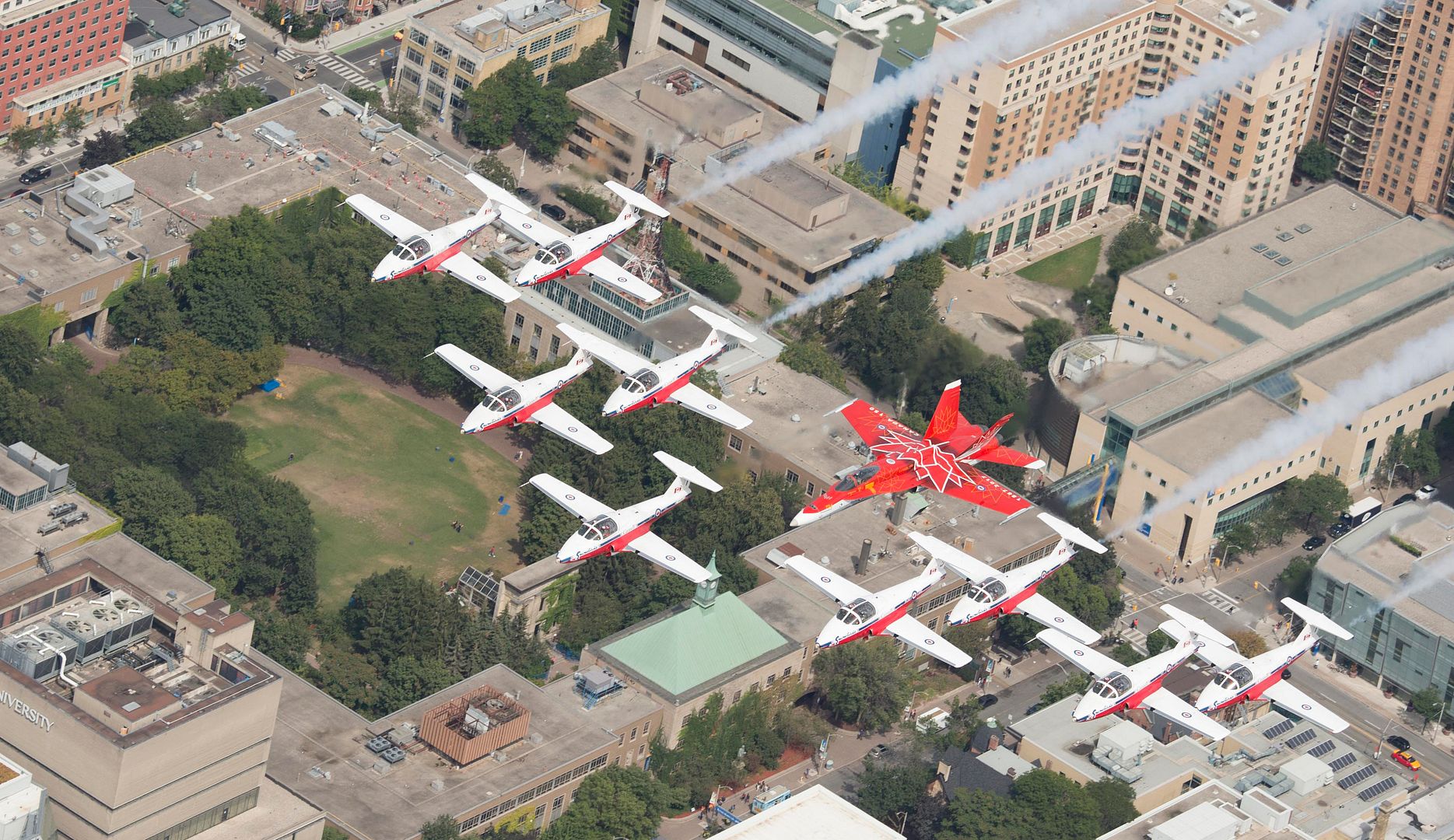
The 1982 Command Colour carried the badge of Air Command. The new Command Colour reflects the new RCAF badge that was created following the restoration of the RCAF?s historic name in 2011, and includes the RCAF?s motto Sic itur ad astra: "Such is the pathway to the stars." The new Queen?s Colour carries the Royal Canadian Air Force?s restored name.
The RCAF is honoured that the Mayor of Toronto has declared September 1, 2017, as Royal Canadian Air Force Day. City Hall lights, the TORONTO sign in Nathan Phillips Square, and the CN Tower are all being illuminated in the colour of RCAF blue to mark the special occasion.
-
 Main AdminA Royal Canadian Air Force CC-130J Hercules arrives at Joint Base San Antonio-Lackland, Texas carrying humanitarian supplies from the government of Canada to aid in Hurricane Harvey relief efforts Sept. 3, 2017. The supplies included pediatric necessities like baby formula, blankets, cribs and other similar items. The RCAF airlift flew in from 8 Wing Trenton, Ontario. (U.S. Air Force photo by Andrew C. Patterson)
Main AdminA Royal Canadian Air Force CC-130J Hercules arrives at Joint Base San Antonio-Lackland, Texas carrying humanitarian supplies from the government of Canada to aid in Hurricane Harvey relief efforts Sept. 3, 2017. The supplies included pediatric necessities like baby formula, blankets, cribs and other similar items. The RCAF airlift flew in from 8 Wing Trenton, Ontario. (U.S. Air Force photo by Andrew C. Patterson)
A U.S. Air Force E-3 Sentry flies above Southwest Asia in support of Operation Inherent Resolve Aug. 30, 2017. The E-3 Sentry is an airborne warning and control system aircraft with an integrated command and control battle management, surveillance, target detection, and tracking platform. (U.S. Air Force photo by Staff Sgt. Michael Battles)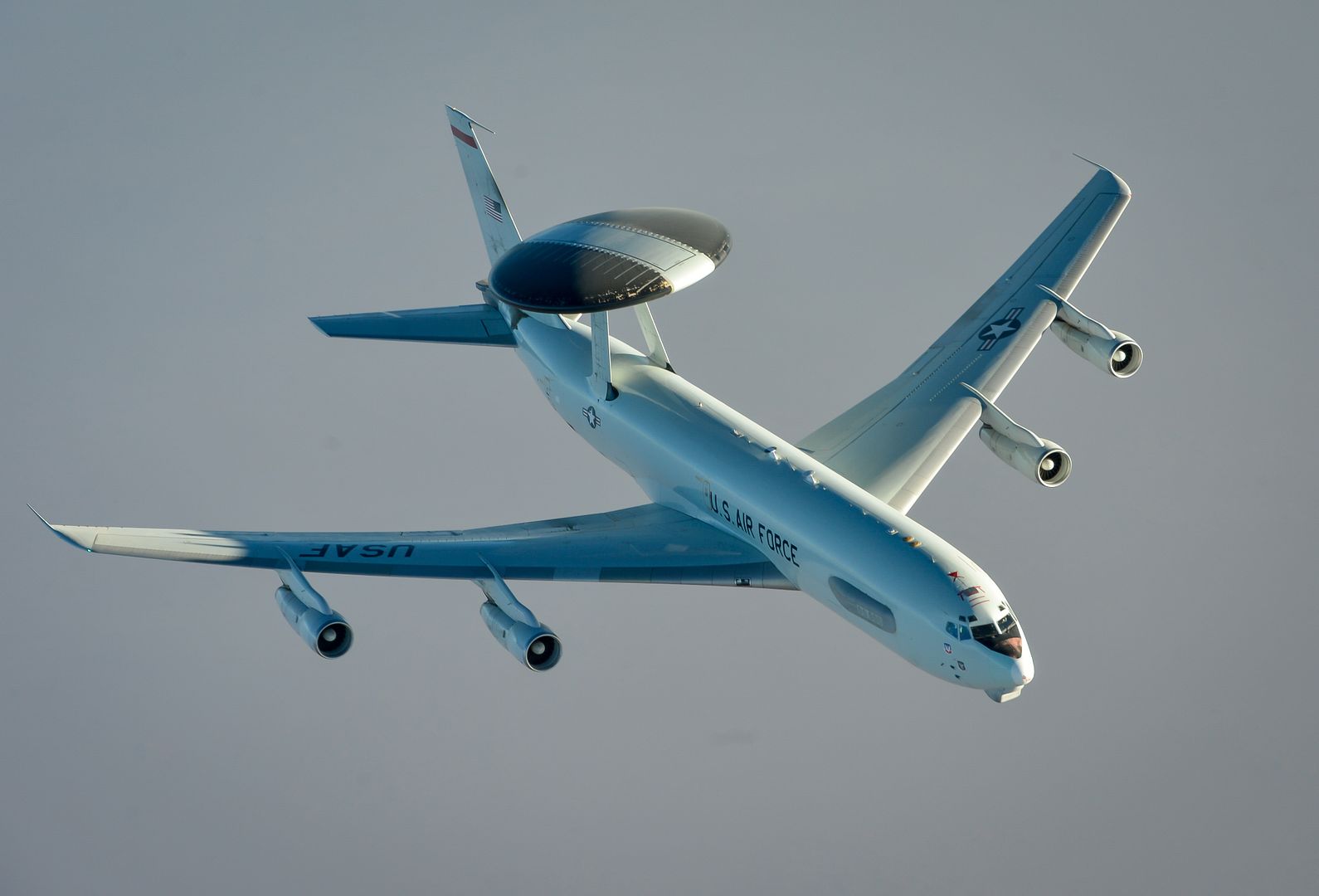
El Calafate, Argentina, September 4, 2017 ? Airbus Perlan Mission II, the world?s first initiative to send an engineless aircraft to the edge of space, made history yesterday in the Patagonia region of Argentina by soaring to over 52,000 feet and setting a new world altitude record for gliding.
?We are celebrating an amazing victory for aerospace innovation and scientific discovery today, and we?re so thankful to all the volunteers and sponsors whose years of tireless dedication have made this achievement possible,? said Ed Warnock, CEO of The Perlan Project. ?We will continue to strive for even higher altitudes, and to continue our scientific experiments to explore the mysteries of the stratosphere. We?ve made history, but the learning has just begun.?
?With every Airbus Perlan Mission II milestone, we continue to learn more about how we can fly higher, faster and cleaner. But we also learn that aviation still has the power to surprise us, thrill us, and motivate us to find new frontiers of endeavor,? ?said Tom Enders, Airbus CEO. "Perlan's outstanding aviation success is the result of bold thinking. It's this kind of thinking that is the cornerstone of our vision for the future of Airbus, which we hope will inspire a new generation of aerospace explorers and innovators."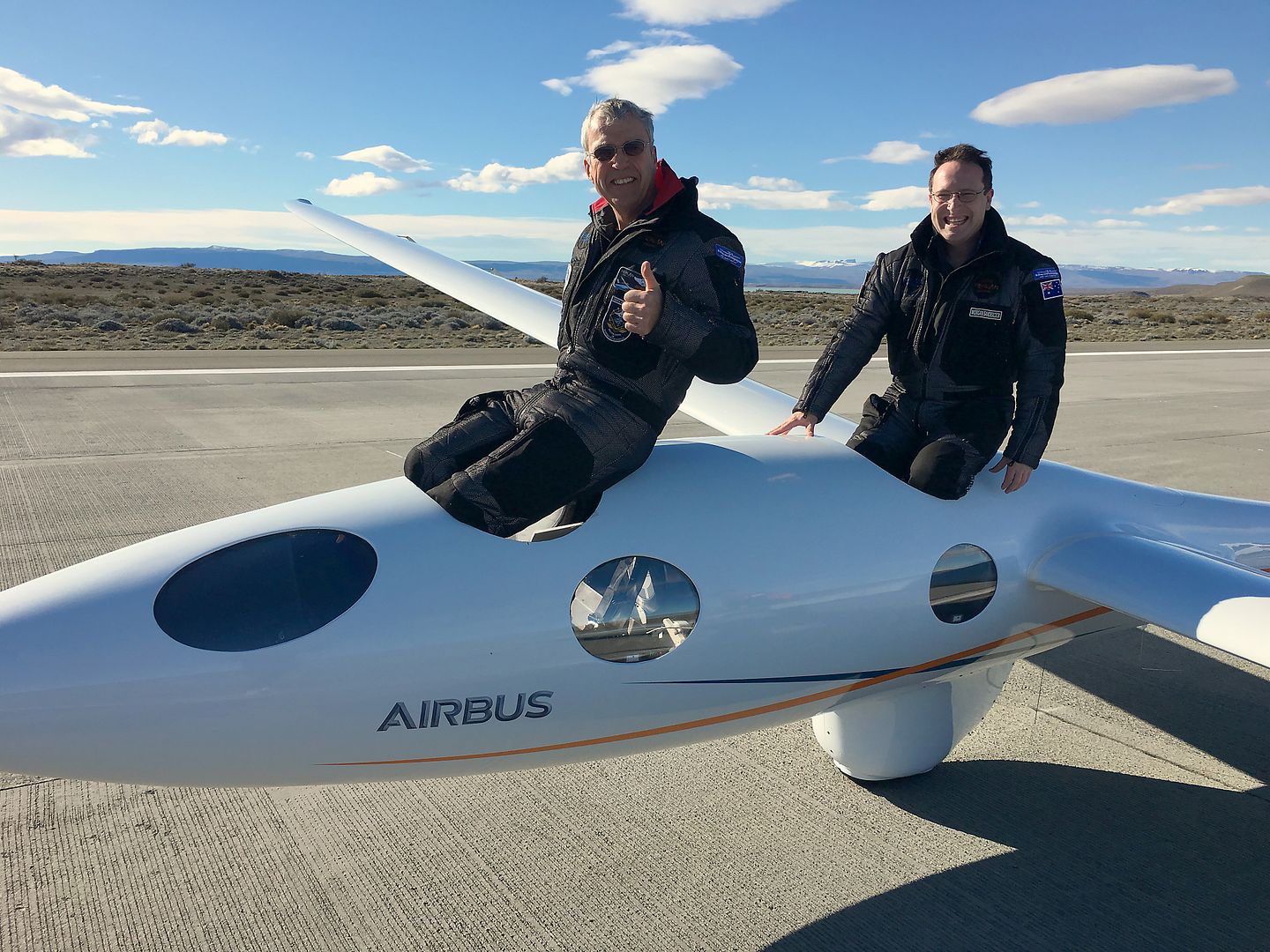
Chief pilot Jim Payne and co-pilot Morgan Sandercock completed this historic Perlan 2 flight from Comandante Armando Tola International Airport in El Calafate, Argentina, surpassing the previous 50,727-foot world record for glider altitude that was set in the unpressurized Perlan 1 by The Perlan Project founder Einar Enevoldson and lead project sponsor Steve Fossett in 2006.
Airbus Perlan Mission II is an initiative to fly an engineless glider to the edge of space using weather phenomena called stratospheric mountain waves, rising air currents that are significantly heightened a few times a year in only a couple places on earth by the polar vortex. The area around El Calafate, nestled within the Andes Mountains in Argentina, is one of those rare locations where these rising air currents can reach the stratosphere.
Because of its engineless design, the Perlan 2 glider is a unique platform for scientific discovery, and is carrying aloft on every flight experiments ranging in focus from factors influencing climate change to radiation effects on pilots and aircraft at high altitudes.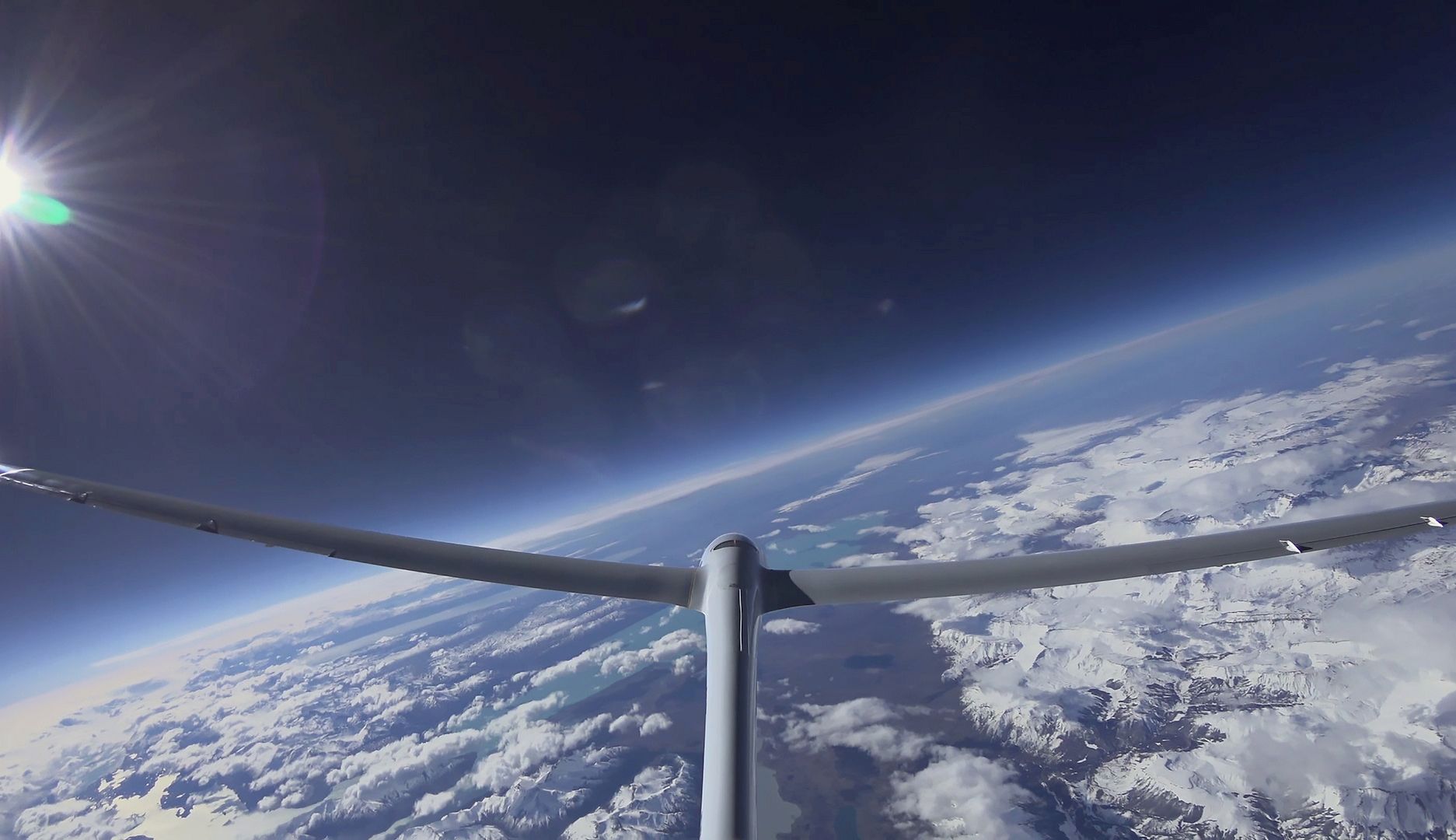
Following the completion of the mountain-wave gliding season in Argentina, Airbus Perlan Mission II will return to Minden, Nevada, where the all-volunteer team will modify and enhance the Perlan 2 glider based on information acquired in this year?s test flights. Ultimately, the Perlan Project will attempt to reach 90,000 feet, a world altitude record for any wing-supported flight, with or without an engine.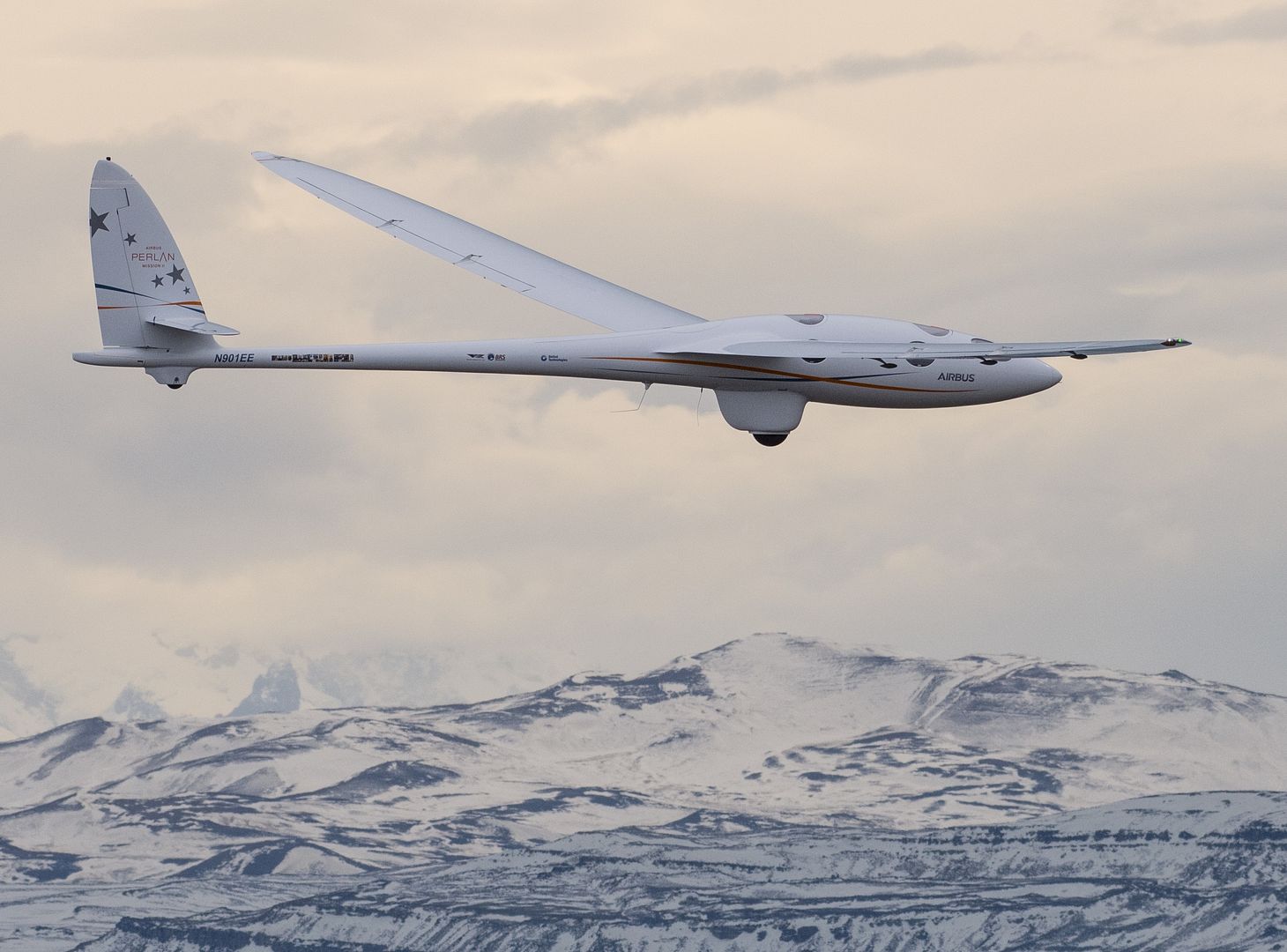
Donauw?rth, ? The Norwegian air ambulance operator Norsk Luftambulanse AS (NOLAS) is the first civil customer to receive an H135 equipped with Helionix. Six additional H135s with Helionix will be delivered to NOLAS in 2017 and 2018. In December 2016, the UK MoD was the first military customer to receive the new H135 with Helionix.
NOLAS won a national HEMS (Helicopter Emergency Medical Services) tender in Norway in 2016, and a total of 12 bases and 17 new helicopters will be operated from June 1, 2018. All helicopters are equipped for 24/7 operations with state-of-the-art configuration for Single Pilot IFR/Night Vision Imaging System (NVIS) operation, Aerolite interiors and the latest medical equipment. With a specially trained anesthesiologist, a pilot and a HEMS crew member, and a specially configured helicopter, NOLAS do on-scene missions as well as advanced intensive care transportation in the demanding environment of Norway.
The H135 obtained EASA certification for the Helionix avionics suite in November 2016. The Helionix avionics system designed by Airbus offers operators with increased mission flexibility and safety. Helionix is a family concept with standardized features and is already available on the H175 and H145.
On top of the 4-axis autopilot, Helionix offers an innovative cockpit layout which helps to increase situational awareness. Designed with three large electronic displays on the H135, the cockpit is Night Vision Goggle compatible and includes a First Limit Indicator which highlights the appropriate engine instrument data for the pilot in one indicator.
The H135 is a helicopter of reference for air ambulance operators worldwide. It combines a wide, unobstructed cabin with excellent performance, range and payload capacity ? along with low-noise operations. The oversized sliding side doors and rear clamshell doors enable fast loading/unloading of patients, with additional safety during ground operations provided by Airbus? signature shrouded Fenestron tail rotor.
?In demanding environments and under almost all kind of weather challenges, it is great to have the support of the new technological developments that the Helionix version can offer?, said NOLAS CEO Rune Midtgaard. ?It reduces the pilot workload, increases the safety of the operation and in the end the ability to reach the patients in need of the advanced medical support the service can offer.?
?We are proud that NOLAS trusts our helicopter and the Helionix suite for their challenging missions? said Martin Schneider, head of the H135 programme. ?The H135 is the unbeaten market leader in light twin-engine, multi-purpose helicopters. Traditional missions for this class of helicopters include emergency medical services, law enforcement, VIP and business passenger transport, maintenance of industrial wind parks and military training.?
Airbus has delivered more than 1,250 H135s to customers around the globe who have logged a total of more than four million flight hours.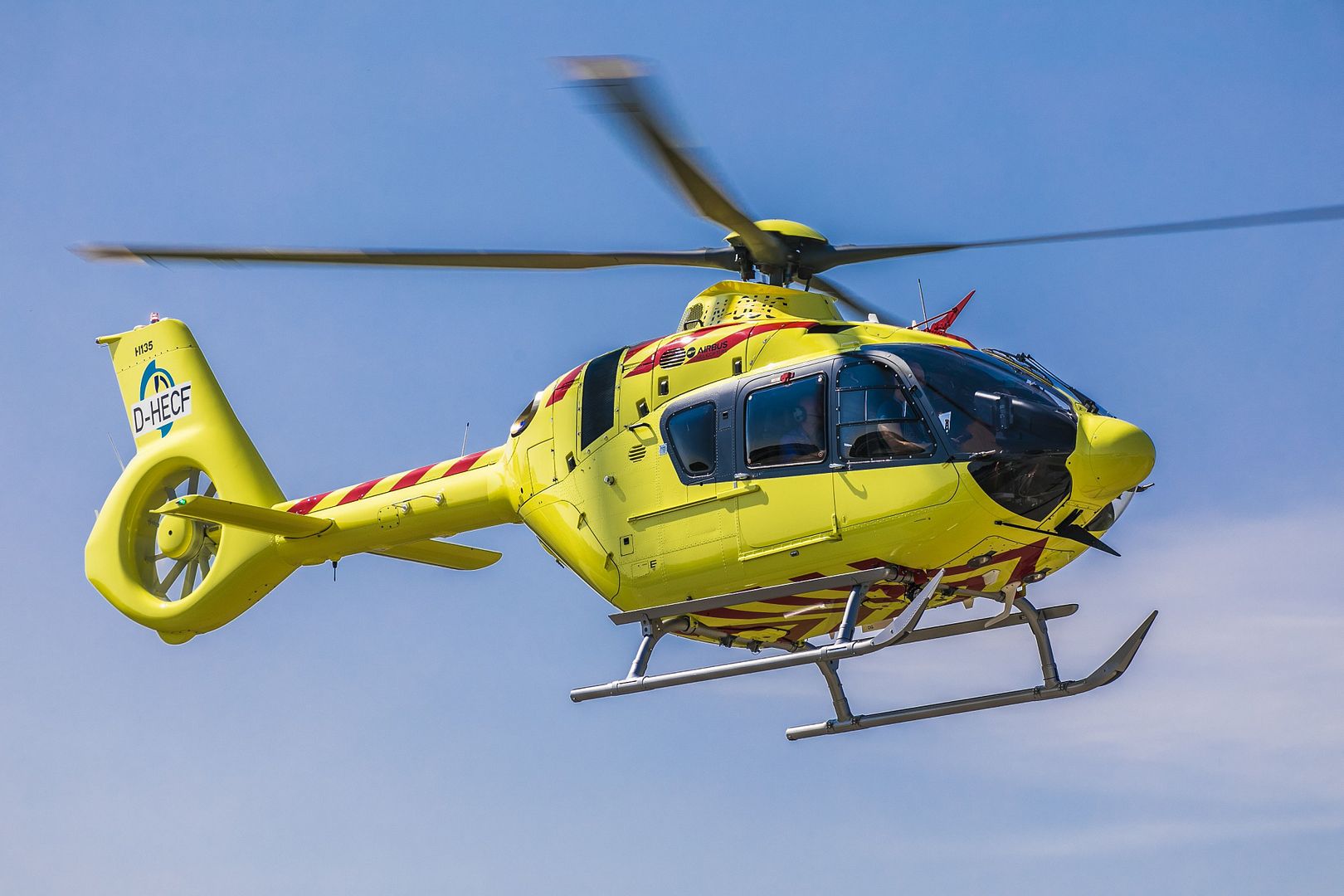
-
 Main AdminA T-6 Texan II sits in its parking spot Sept. 5, 2017, at Vance Air Force Base, Oklahoma. The T-6 is a single-engine, two-seat primary trainer designed to train pilot students in basic flying skills. New pilot students start out in the T-6 and then move on to more specialized aircraft. (U.S. Air Force photo by Senior Airman Corey Pettis)
Main AdminA T-6 Texan II sits in its parking spot Sept. 5, 2017, at Vance Air Force Base, Oklahoma. The T-6 is a single-engine, two-seat primary trainer designed to train pilot students in basic flying skills. New pilot students start out in the T-6 and then move on to more specialized aircraft. (U.S. Air Force photo by Senior Airman Corey Pettis)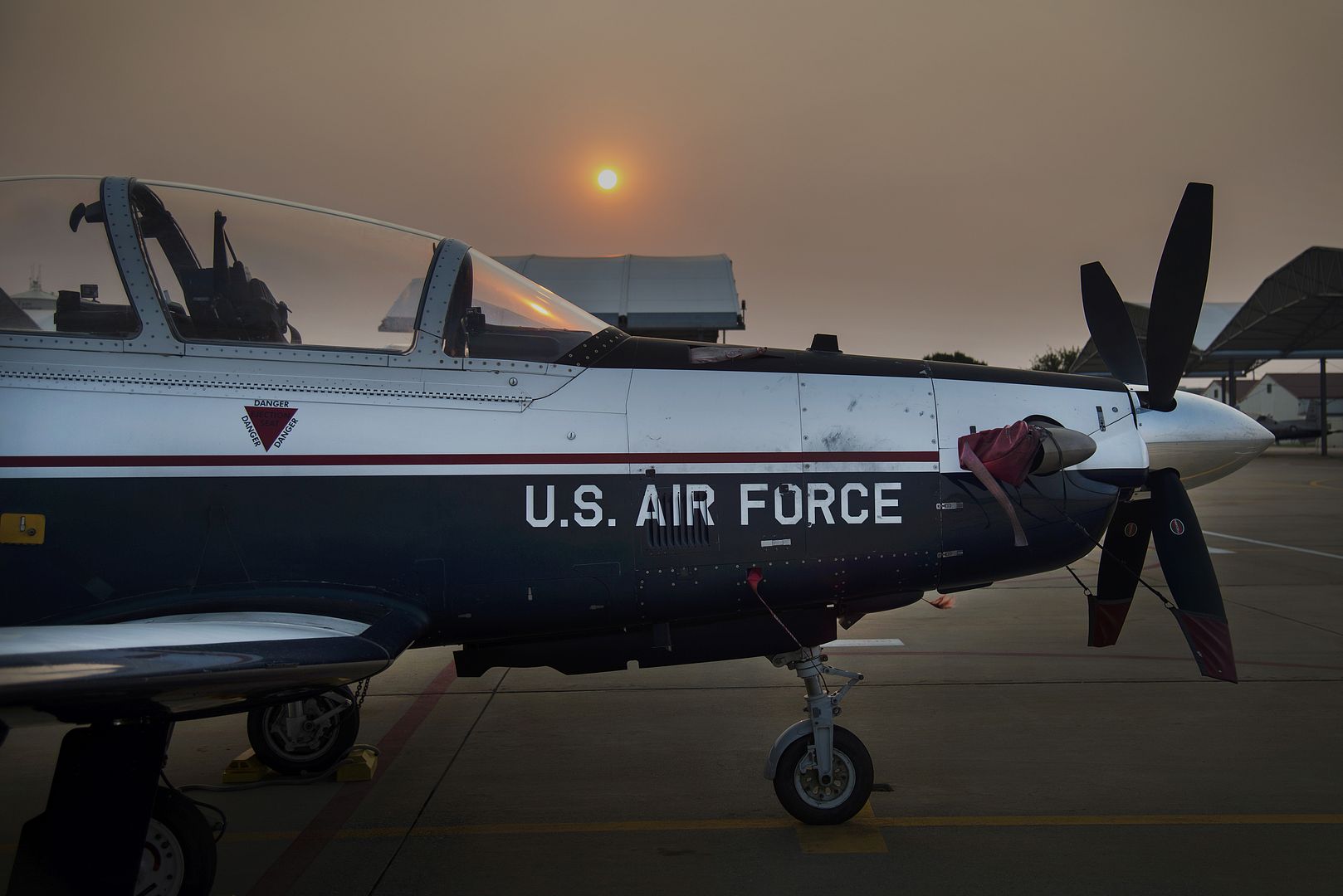
An E-8C Joint STARS takes off from Robins Air Force Base, Ga., on a mission in support of Hurricane Harvey relief efforts, Sept. 1, 2017. Team JSTARS aircrews provided radio relay and aircraft communications deconfliction and procedural control for Hurricane Harvey search and rescue operations. (U.S. Air National Guard photo by Airman 1st Class Amanda Bodony).
OAK HARBOR, Wash. (September 5, 2017) An EA-18G Growler aircraft assigned to the "Vikings" of Electronic Attack Squadron (VAQ-129) taxis down the airstrip at Naval Air Station Whidbey Island (NASWI) as part of the F/A-18 Hornet 10 million flight-hour anniversary. The F/A-18 10 million flight hour anniversary celebrates 10 million hours flown across the F/A-18 Hornet, F/A-18E/F Super Hornet and EA-18G Growler classes of aircraft. (U.S. Navy photo by Mass Communication Specialist 2nd Class Scott Wood/Released)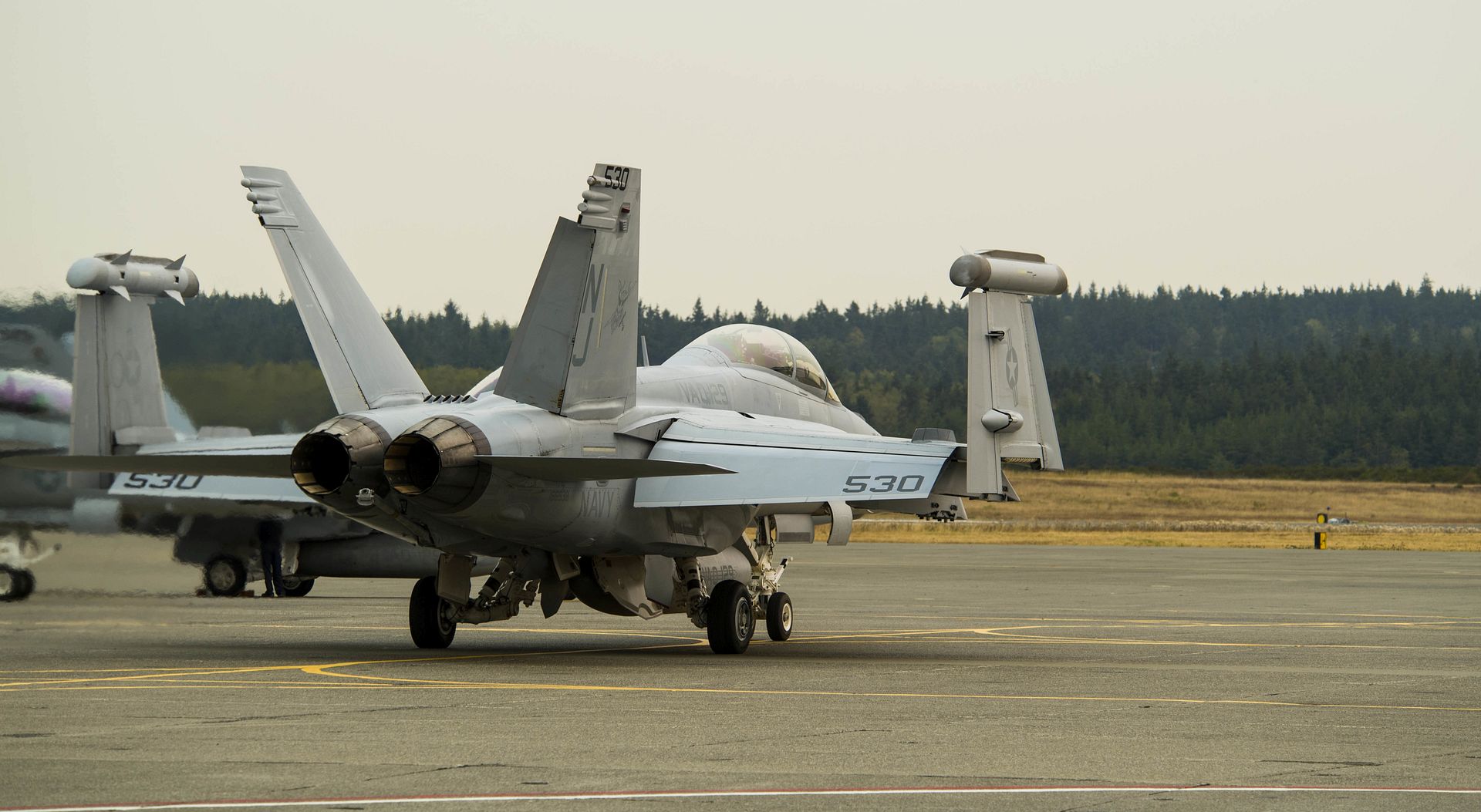
One of three CH-47 Chinook helicopters, 2d Battalion 501st Aviation Regiment, lands on JBSA Randolph Auxiliary Airfield, Seguin, Texas, Sept. 5, 2017. The Chinooks transported 20 pallets of MREs to support the relief efforts for Hurricane Harvey. The category-4 hurricane, with wind speeds of up to 130 miles per hour, made landfall Aug. 25, 2017. Days after the hurricane reached Texas, more than 50 inches of rain flooded the coastal region. (U.S. Air Force Photo by Tech. Sgt. Chad Chisholm/Released)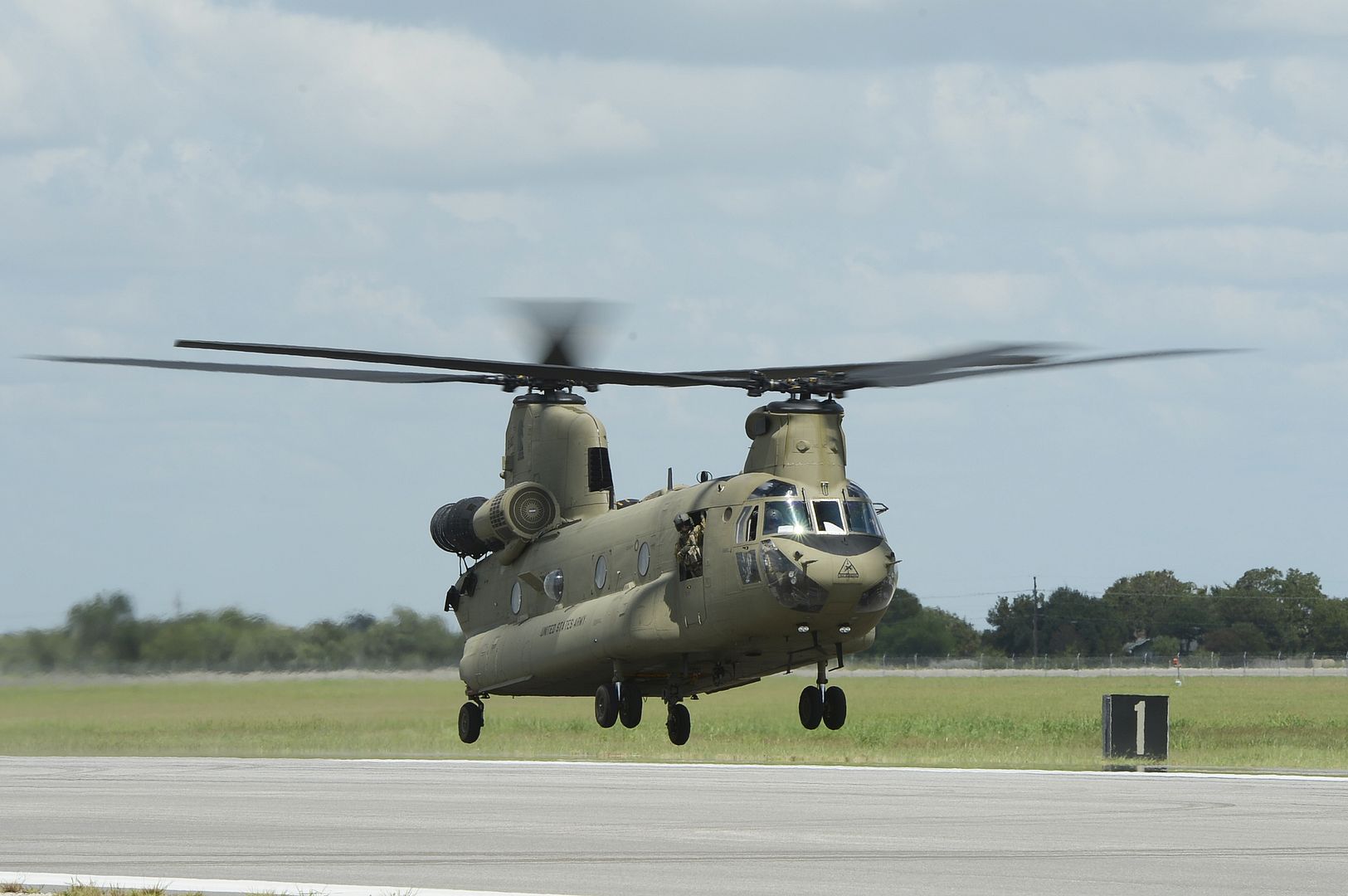
CV-22 Osprey's from the 352d Special Operations Wing and HH-60 Pave Hawks from the 48th Fighter Wing flew together in a joint formation around southern England Aug. 31, 2017. This flight gave pilots of both units the ability to practice working together in different formations and to hone how they would act and react as a team.
Photo by Staff Sgt. Philip Steiner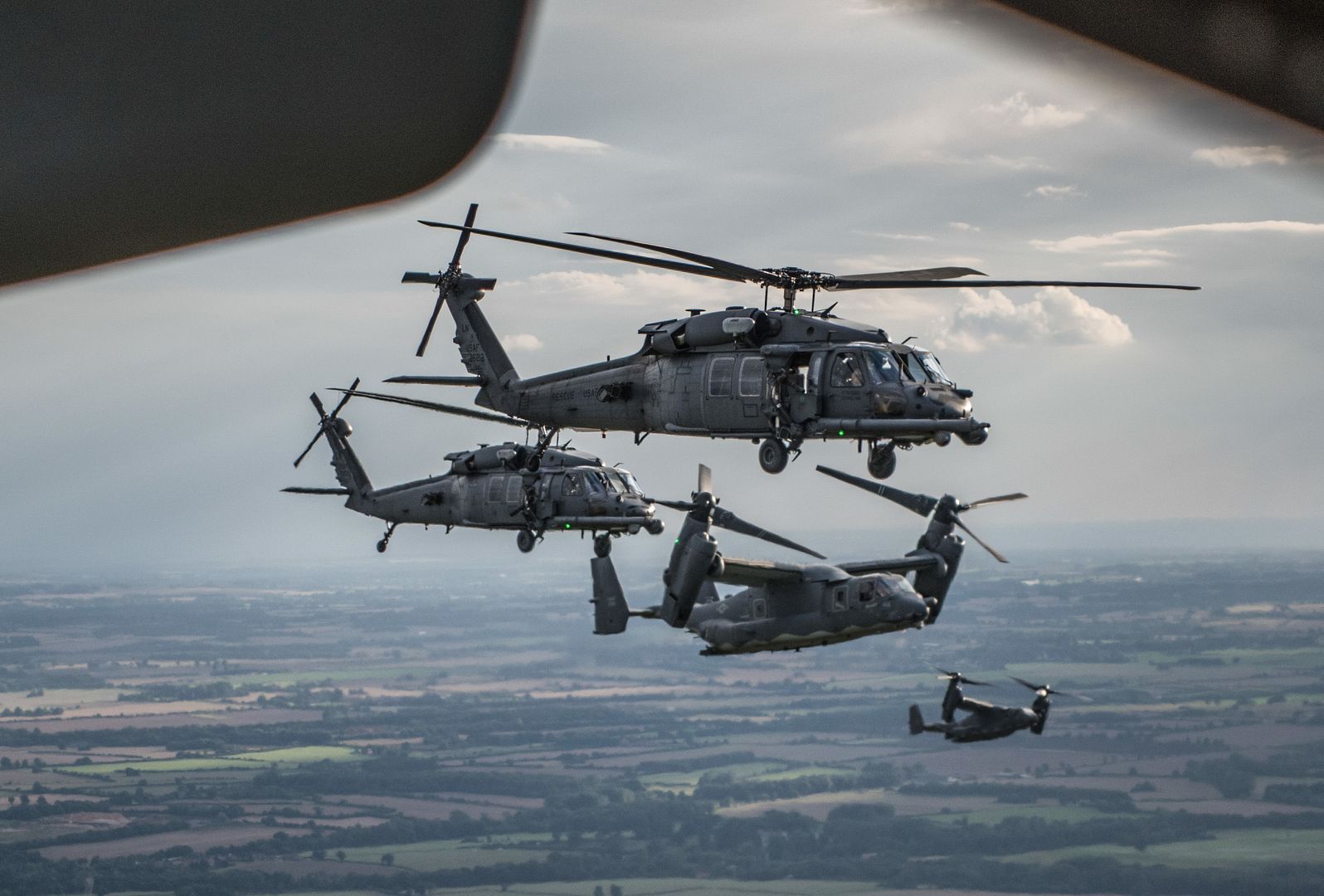
EDWARDS AIR FORCE BASE, Calif. --
Who better to try out new aircraft than flight testers from Edwards Air Force Base.
The 416th Flight Test Squadron recently sent three test pilots and two flight test engineers to Holloman Air Force Base in New Mexico to participate in the Air Force?s Light Attack Experiment. The five testers were also accompanied by two Edwards photographers. Additionally, an Edwards-based program manager remotely accomplished significant amounts of behind-the-scenes work from Edwards AFB.
Earlier this year, the Air Force established vendor parameters in the initial invitation-to-participate in its Light Attack Experiment. Private industry members were asked to propose aircraft that could potentially meet an Air Force need for a low-cost attack capability that is supportable and sustainable.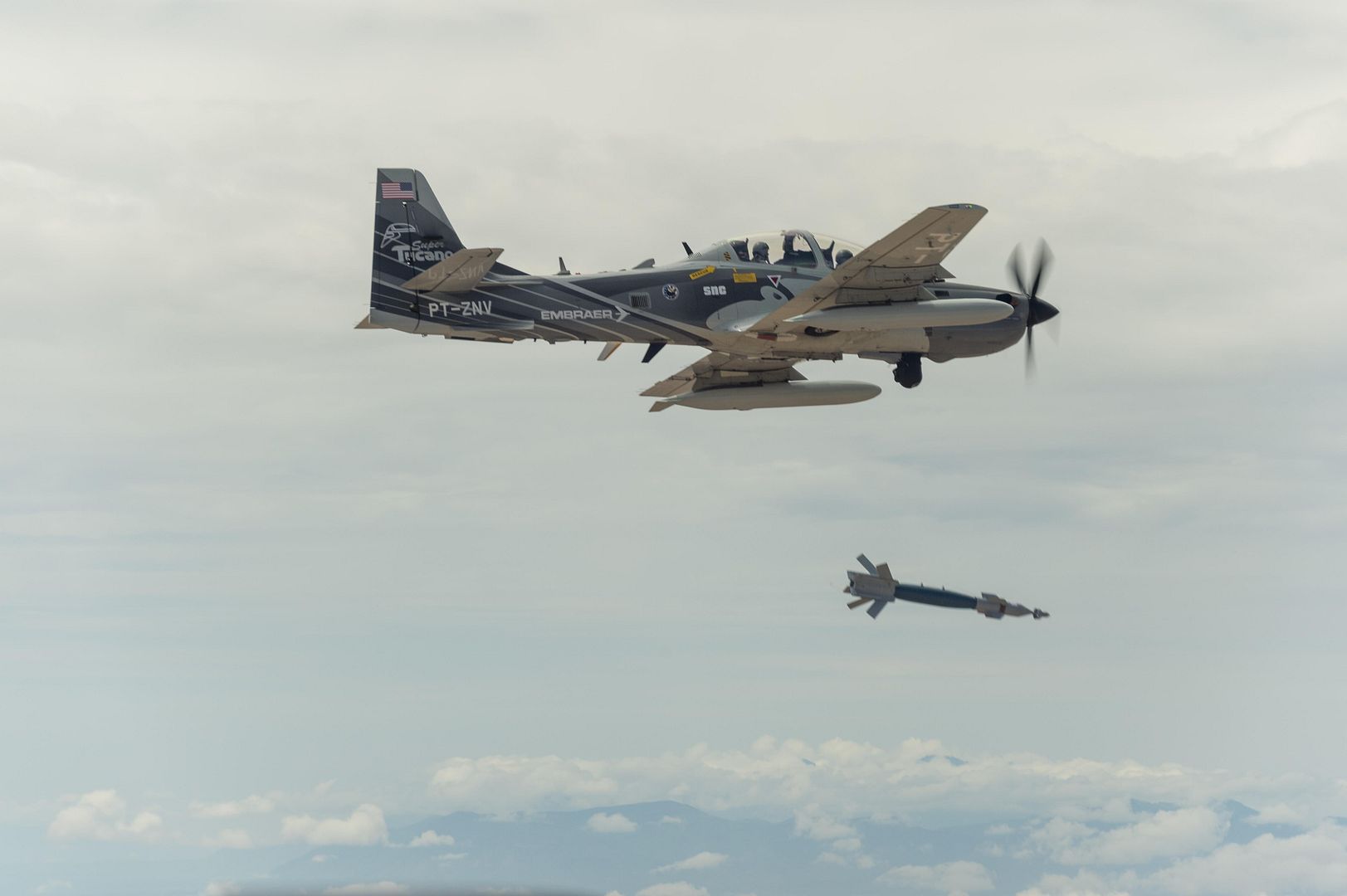
During the first week of the experimental flights in August, Air Force pilots flew basic surface attack missions in Textron Aviation?s AT-6 Wolverine turboprop, as well as in Sierra Nevada Corp. and Embraer?s A-29 Super Tucano.
Scenarios during the experiment were designed to highlight aspects of various combat missions such as close air support, air interdiction, combat search and rescue and strike coordination and reconnaissance, according to the Air Force. The experiment included the use of weapons generally used on fighter and attack aircraft to evaluate the participating aircraft?s ability to execute traditional counter-land missions.
Two Edwards pilots got to fly the AT-6, which included one experimental flight each where rockets, .50 caliber machine gun and BDU-33 practice bombs were employed.
?416th pilots were selected based on the desire to have test pilots evaluate handling qualities, performance, and pilot-vehicle interface characteristics of the experiment aircraft,? said Maj. Ryan Fancher, 416th FLTS assistant director of operations. ?This evaluation was completed in conjunction with separate flights by operational test pilots to get a fairly comprehensive look at the aircrafts' capabilities and mission suitability.?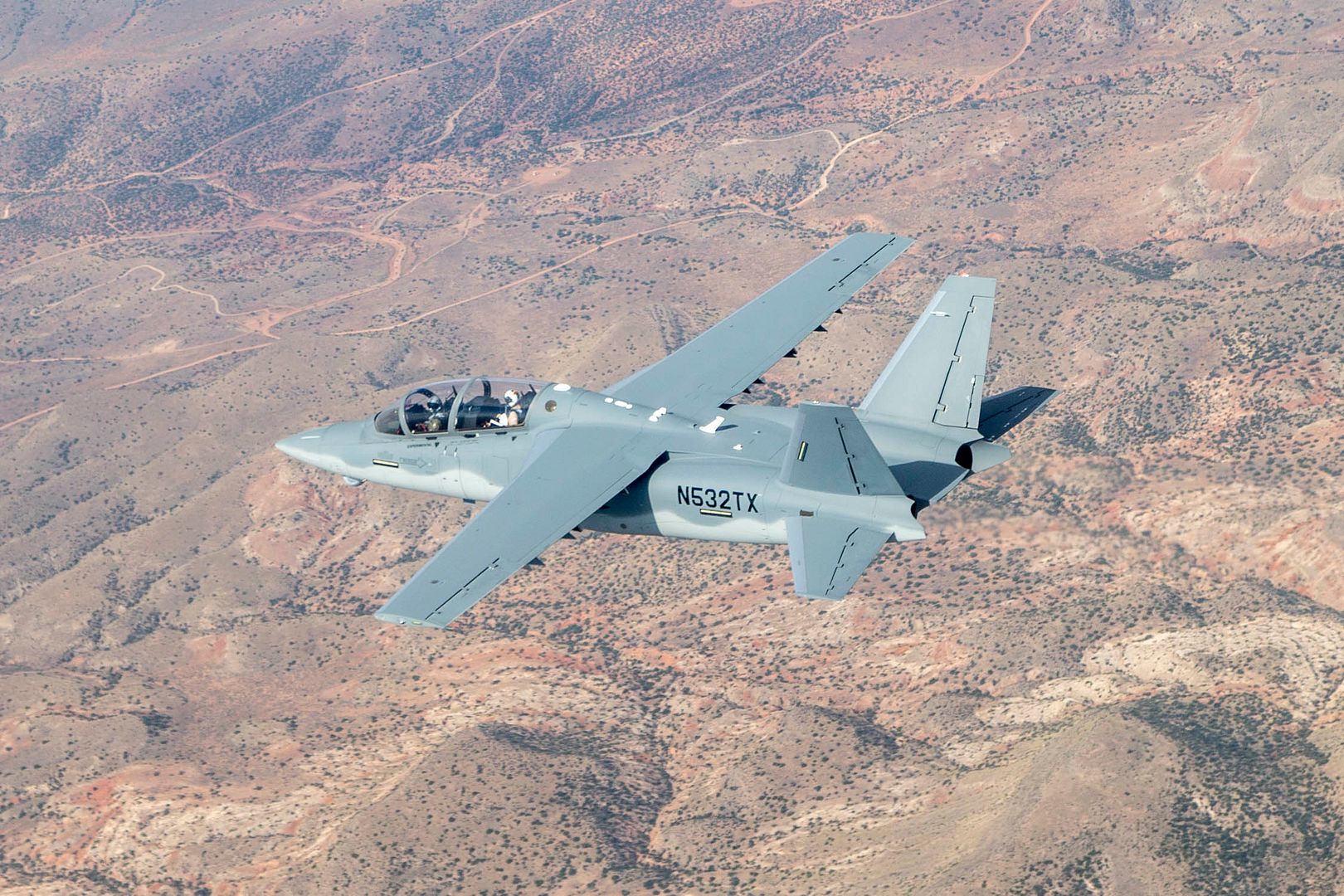
A third test pilot from the 416th FLTS also flew an Air Tractor Inc. and L3 Platform Integration Division AT-802L Longsword at Holloman.
?After the experiment sortie, each pilot submitted a pilot report and a separate survey in order to capture pertinent handling qualities, performance and (pilot-vehicle interface) aspects of the aircraft,? Fancher said.
Other Air Force pilots also completed familiarization flights in Textron Aviation?s Scorpion twin-engine jet.
The 416th FLTS? participation is part of the Air Force Test Center?s larger involvement in the experiment.
"AFTC, through the lead of the 586th Flight Test Squardron, 704th Test Group, Holloman AFB, New Mexico, performed the technical, safety, and operational planning, execution and reporting for the CSAF-directed Light Attack Experiment,? said Maj. Robert Waller, AFTC executive officer to the commander and experimental test pilot. ?The 412th and 96th Test Wings augmented the 586th FLTS with test pilots and systems operators, and provided test safety, flying and handling qualities, human factors, and weapons system employment support. Additionally, Air Education and Training Command, Air Combat Command and Air Force Special Operations Command provided pilots, systems operators, (Joint Terminal Attack Controllers) and training support for the experiment. Initial planning began in September 2016 with and expected close out in December 2017."
Fancher said prior to travelling to Holloman, the 416th FLTS team conducted pre-arrival studies. Once at Holloman, one day of academics was accomplished prior to a familiarization sortie, which covered local area procedures and basic operation of the aircraft and its avionics. During the familiarization sortie the test pilot flew from the front seat with an instructor pilot from the aircraft manufacturer in the back seat. The test pilots would later fly the experimentation flight conducting test points and weapon deliveries with the company instructor pilot in the back seat to assist with flight duties.
?It was enjoyable to take part in the opportunity to fly and assess a new aircraft, particularly when it has the potential to positively enhance future warfighting capabilities,? said Fancher.
Pilots will continue to fly the four aircraft through a range of combat mission scenarios during the live-fly experiment to evaluate each platform?s military utility. The live-fly experiment is part of a broader Air Force effort to explore cost-effective attack platform options under the Light Attack Experimentation Campaign run by the Air Force Strategic Development Planning and Experimentation Office at Wright-Patterson Air Force Base, Ohio.
AL UDEID AIR BASE, Qatar (AFNS) -- This year alone, coalition air refuelers have already flown more than 5,000 separate in-flight refueling sorties, supplying more than 28,000 aircraft with fuel while providing air support to Operation Inherent Resolve.
The Republic of Singapore Air Force recently completed a three month deployment in which an RSAF KC-135R contributed to the coalition's ability to support increased aerial refueling demands during the summer months, including the fights for Mosul, Iraq and Raqqah, Syria.
Despite its small fleet of four air refuelers, Singapore has repeatedly deployed its KC-135Rs in support of coalition efforts since 2015. Most recently, an RSAF KC-135R Stratotanker and support team joined dozens of U.S. refuelers at Al Udeid Air Base, Qatar, from May to August, marking the RSAF?s third annual deployment.
As coalition partners, their mission is to integrate and synchronize with in-flight refueling missions, supplying fuel to U.S. and coalition aircraft in the U.S. Air Forces Central area of responsibility.
"This was a tremendous opportunity for us to put our skills to use in support of the coalition," said an RSAF KC-135R pilot who participated in the 2017 deployment. "We are happy that we can work together with the U.S. Air Force and other partner nations in this joint fight against ISIS and threats in the region."
Throughout its deployment, the RSAF performed more than 50 missions in support of Operation Inherent Resolve, refueling an average of four to six aircraft per sortie.
"Singapore is a small country, but we recognize the importance of contributing to this global cause,? said the RSAF contingent commander. ?I am glad that we are able to contribute meaningfully to the Operation Inherent Resolve campaign. Our partnership with the United States and coalition nations is strong and will strengthen further as we improve our interoperability and contribute to each other?s mission success."
"We appreciate the contributions of coalition partners like Singapore and what they bring to the fight,? said Lt. Gen. Jeffrey Harrigian, the Air Forces Central Command commander and Combined Forces Air Component Commander. ?Singapore?s KC-135R helped fuel the fight and strengthen the blows we directed at ISIS over this summer. I am thankful for their continued commitment to support the fight to defeat a global threat like ISIS and bring stability to the region.?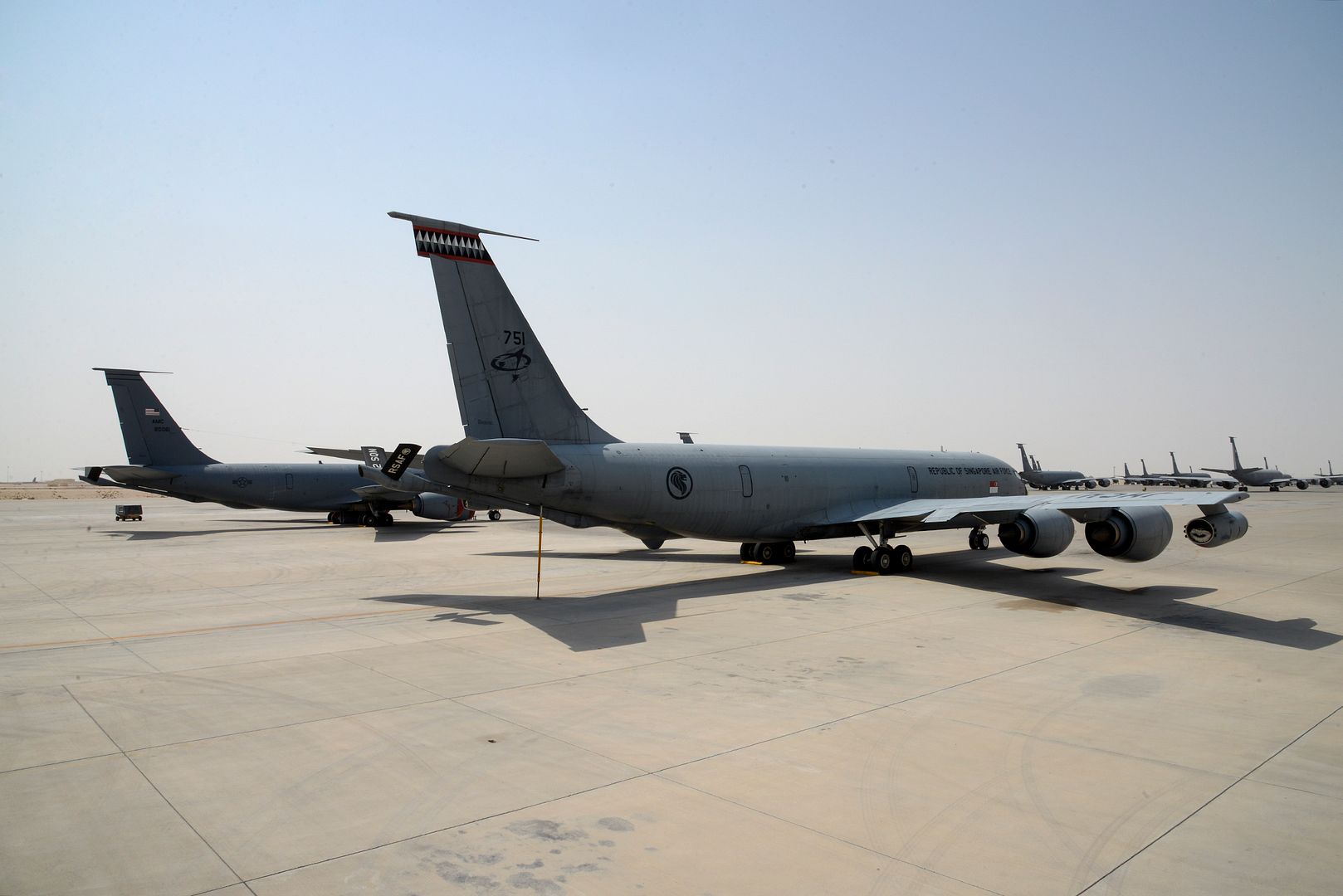
-
 Main AdminU.S. Air Force C-17 Globemaster III pilots from the 14th Airlift Squadron take off and fly toward Puerto Rico during a hurricane relief mission to prepare for Hurricane Irma at Richmond, VA, September 6, 2017. Hurricane Irma is currently a category 5 hurricane and is capable of inflicting catastrophic damage. (U.S. Air Force photo by Staff Sgt Douglas Ellis)
Main AdminU.S. Air Force C-17 Globemaster III pilots from the 14th Airlift Squadron take off and fly toward Puerto Rico during a hurricane relief mission to prepare for Hurricane Irma at Richmond, VA, September 6, 2017. Hurricane Irma is currently a category 5 hurricane and is capable of inflicting catastrophic damage. (U.S. Air Force photo by Staff Sgt Douglas Ellis)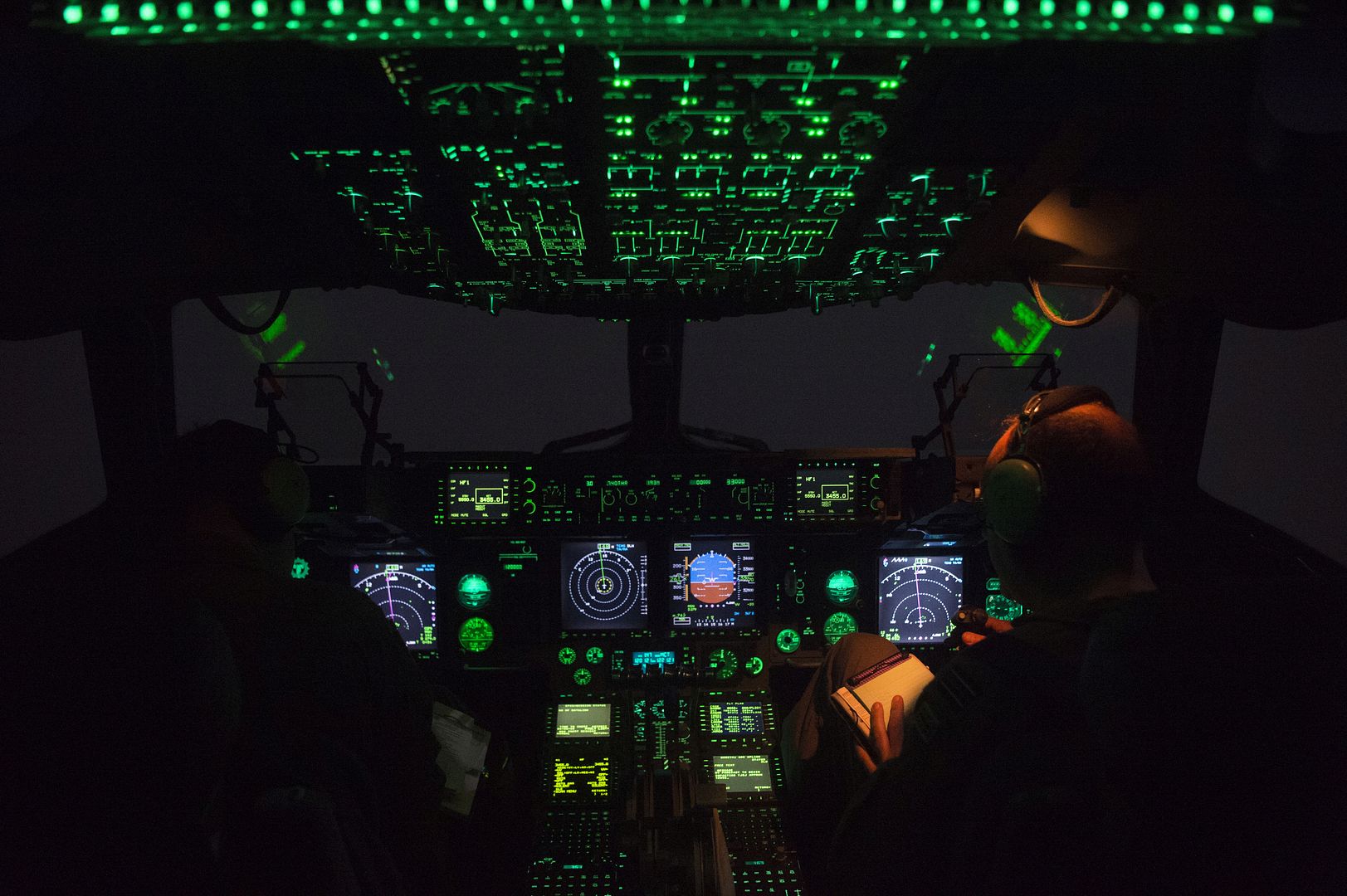
An F-16 Fighting Falcon from Homestead Air Reserve Base, Fla., taxis Sept. 6, 2017, at Naval Air Station Fort Worth Joint Reserve Base, Texas. The base serves as a safe haven for 14 military aircraft that relocated here due to Hurricane Irma's anticipated landfall in south Florida. (U.S. Air Force photo by Tech. Sgt. Charles Taylor)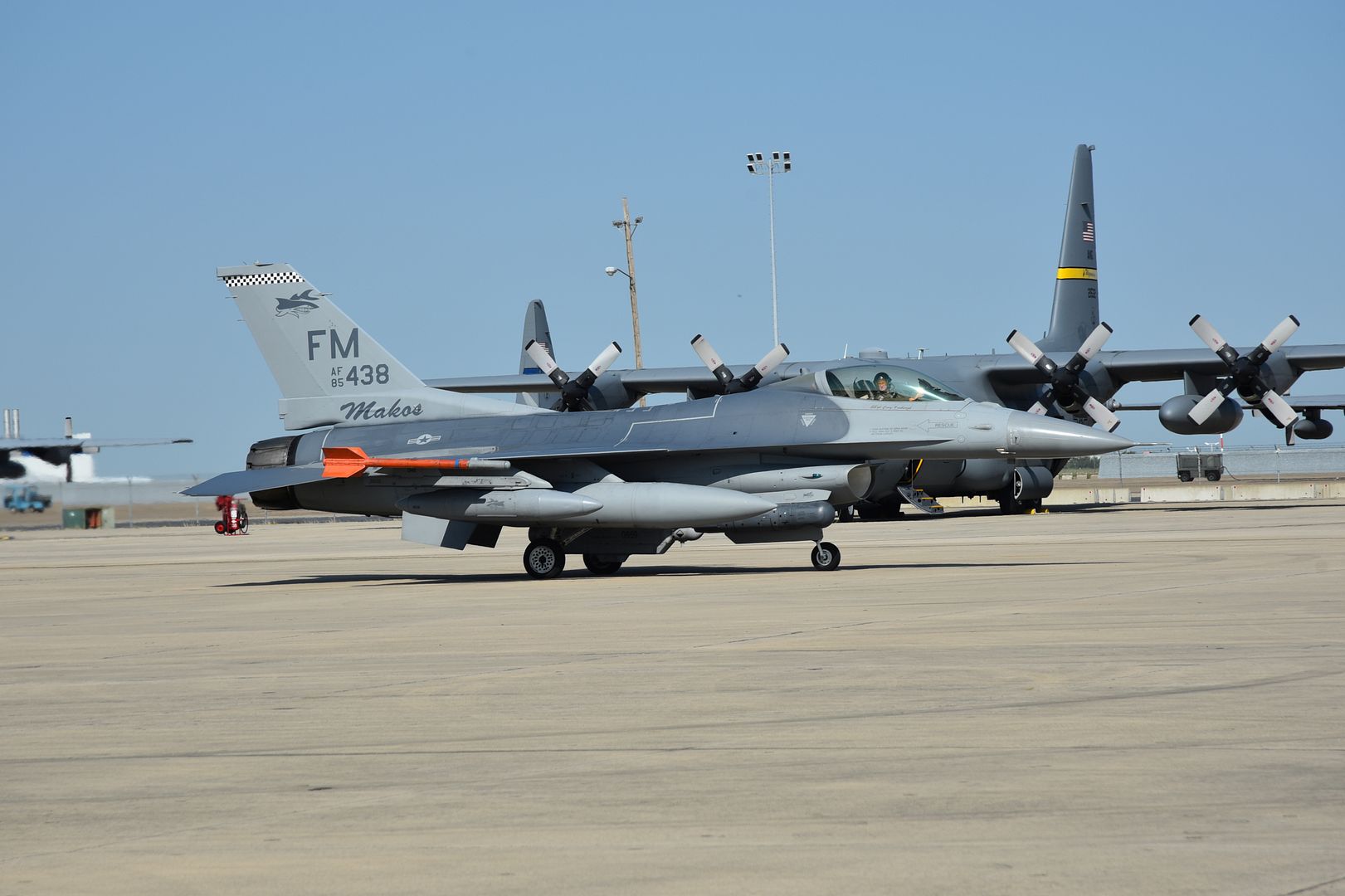
U.S. Airmen of the 36th Contingency Response Group, Andersen Air Force Base, Guam secure a 67th Fighter Squadron F-15 Eagle for refueling during exercise Tropic ACE Aug. 31, 2017, at Kadena Air Base, Japan. Tropic ACE was designed to exercise components of Pacific Air Forces? Agile Combat Employment (ACE) concept of operations (CONOPS), a warfighting concept the command is operationalizing to ensure airpower resiliency. (U.S. Air Force photo/ Airman 1st Class Greg Erwin)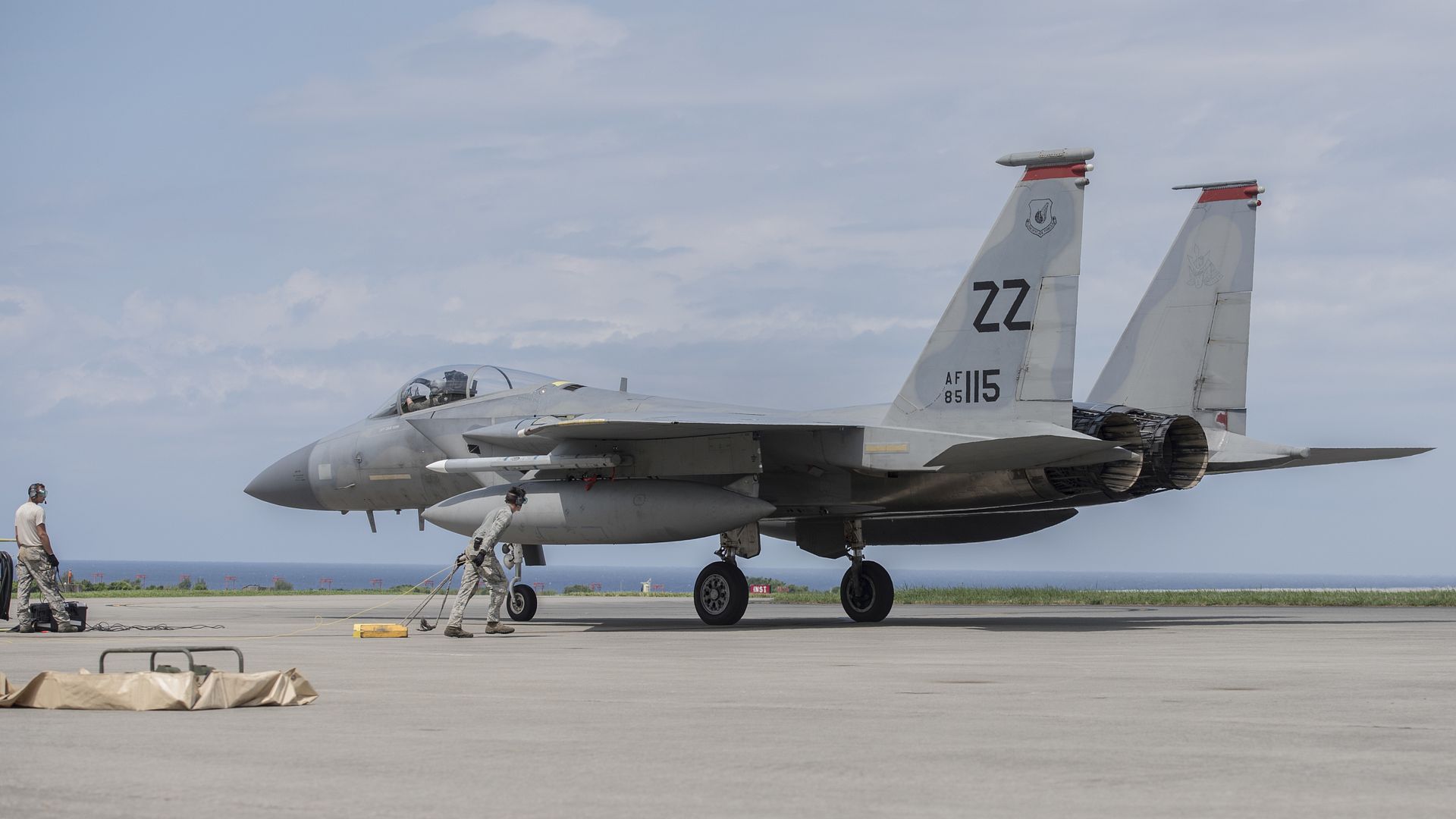
ARABIAN GULF (Sept. 5, 2017) An F/A-18F Super Hornet assigned to the Black Knights of Strike Fighter Squadron (VFA) 154 lands on the flight deck of the aircraft carrier USS Nimitz (CVN 68). Nimitz is deployed in the U.S. 5th Fleet area of operations in support of Operation Inherent Resolve. While in the region, the ship and strike group are conducting maritime security operations to reassure allies and partners, preserve freedom of navigation, and maintain the free flow of commerce. (U.S. Navy photo by Mass Communication Specialist 2nd Class Elesia K. Patten/Released)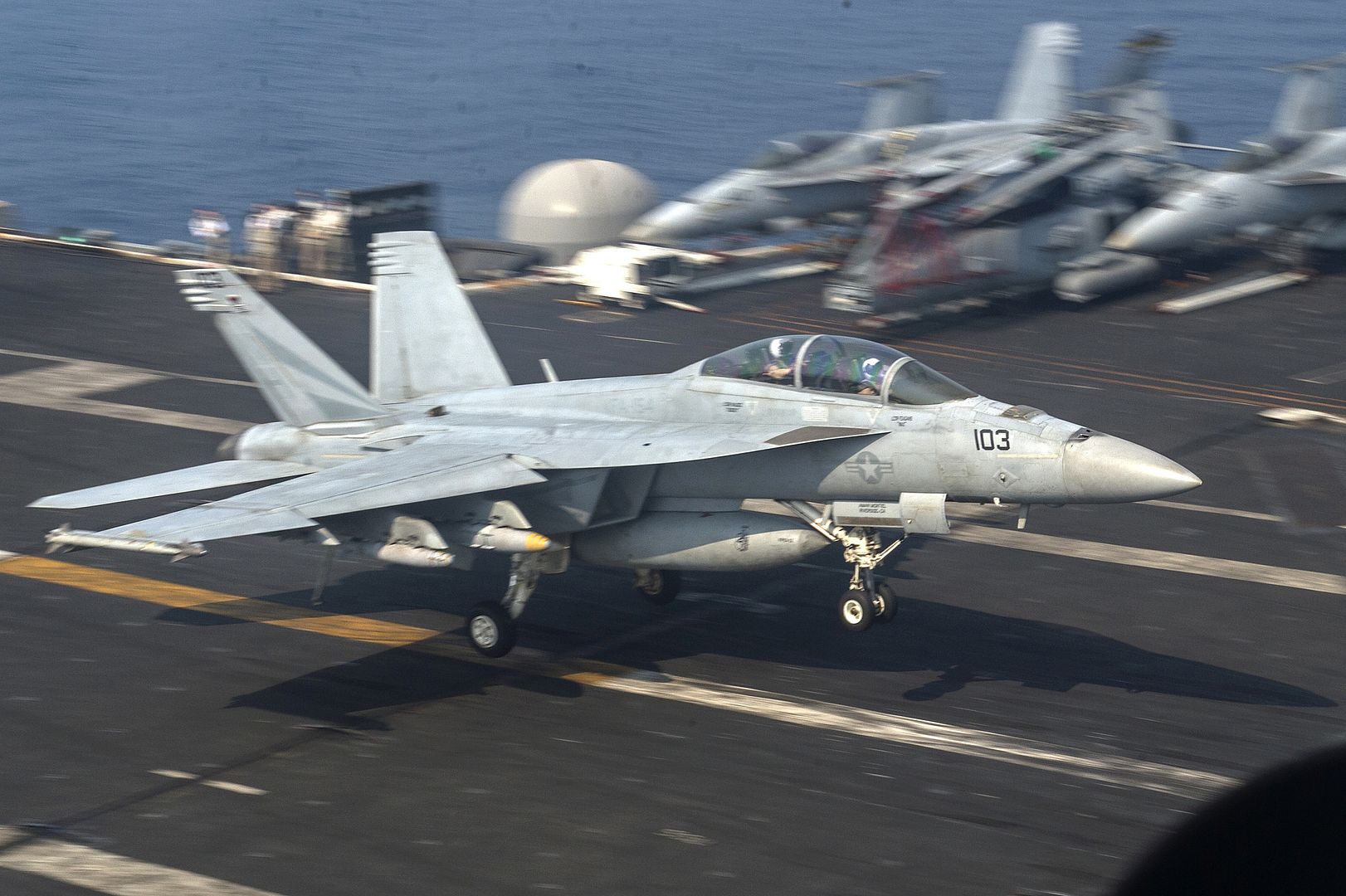
A U.S. Air Force F-15 Eagle from the 44th Fighter Squadron sits in a bay Sept. 6, 2017, at Kadena Air Base, Japan. Because of the changing nature of warfare, Airmen of the 18th Wing can fight from anywhere, at any time, and exercises, like this, ensure they are ready to execute the mission. (U.S. Air Force photo/Senior Airman Quay Drawdy)
U.S. Air Force Tech. Sgt. Zed Harbort, 44th Aircraft Maintenance Unit cell boss, inspects work done during a readiness exercise Sept. 6, 2017, at Kadena Air Base, Japan. The 18th Wing and partner units on Kadena are an air operations epicenter in the Indo-Asia power production platform. (U.S. Air Force photo/Senior Airman Quay Drawdy)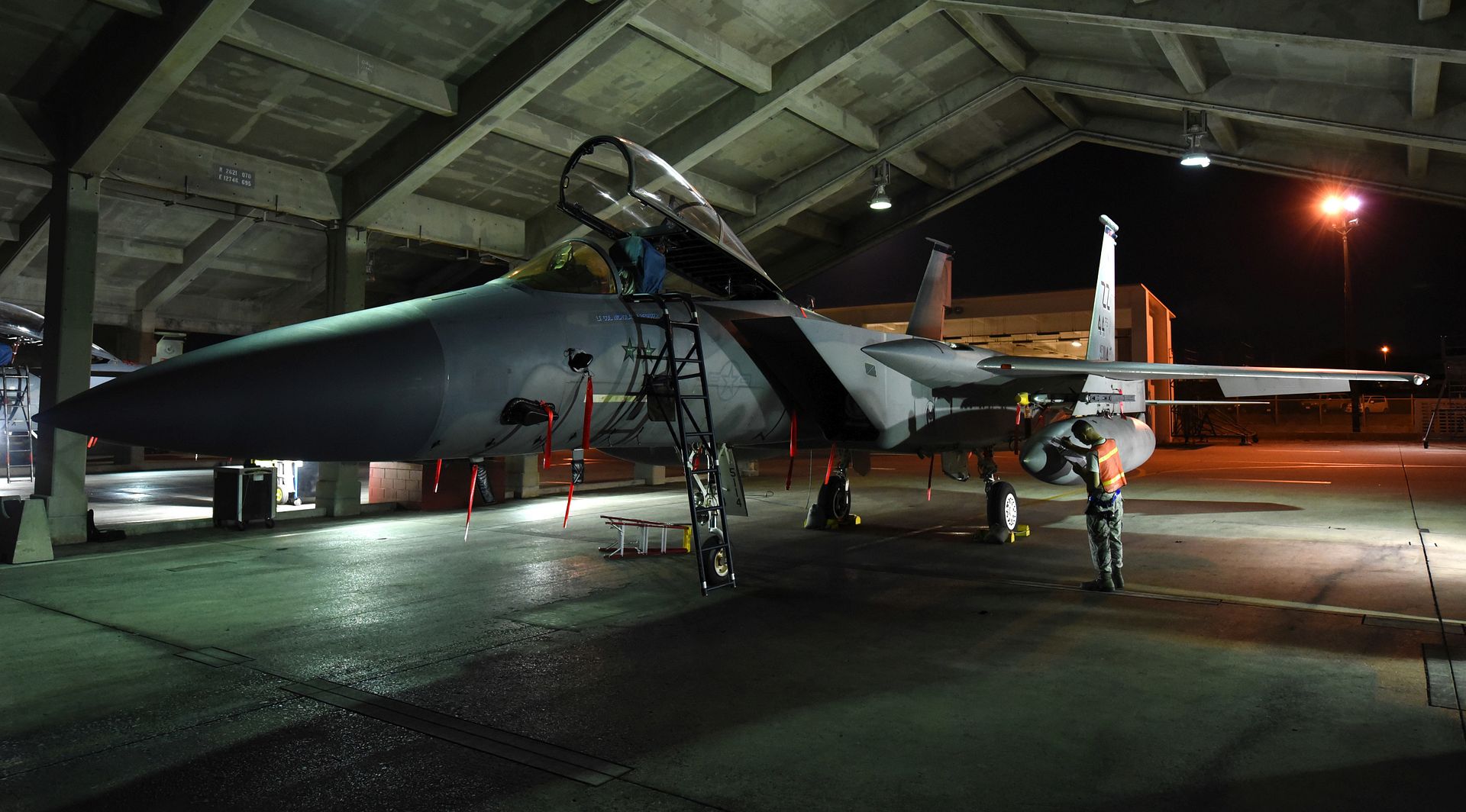
United Airlines has increased the number of A350 XWB aircraft it will bring into its fleet, updating and expanding its previously existing order for 35 A350-1000 to 45 A350-900 widebody aircraft to replace older, less efficient aircraft, supporting future growth at the airline.
The A350-900 is the cornerstone member of the A350XWB (Xtra Wide-Body) family, which is shaping the future of air travel. The aircraft typically seats 325 passengers in a standard three-class configuration and features state-of-the-art comfort and amenities, offering an exclusive flight experience to passengers on board with the new Airspace by Airbus cabin. The A350-900?s unique combination of payload and true long-range range capabilities makes it an ideal aircraft for United Airlines? international route system. These aircraft will be the first Airbus widebodies to join United?s global fleet.
?For the past year, United has done a complete review to ensure that we have the right long-term fleet strategy, and it was clear that the A350 aligns with our replacement needs and our network,? said Andrew Levy, Chief Financial Officer of United Airlines. ?The combination of the range performance and efficiencies make the A350 an attractive aircraft for United.?
?This updated and expanded order is a strong reaffirmation of the A350 XWB Family,? said John Leahy, Chief Operating Officer ? Customers. ?United and Airbus have had a long and strong partnership for many years, and we?ve worked together to ensure their requirements for the future are met, if not exceeded. The airline?s decision to grow its widebody fleet with, for the first time, a widebody model from Airbus, shows they know that the A350 will meet their financial and performance demands, while pleasing their customers who will enjoy the quietest and most comfortable cabin in its class.?
The A350 XWB is the world?s newest and most efficient twin-aisle airliner, featuring the latest aerodynamic design, carbon fiber fuselage and wings, plus new fuel-efficient Rolls-Royce engines. Together, these latest technologies translate into unrivalled levels of operational efficiency, with a 25 percent reduction in fuel burn and emissions, and significantly lower maintenance costs.
The 100th A350 was delivered at the end of July 2017, just some 30 months after the first delivery of the world?s most modern widebody aircraft in December 2014. To date*, Airbus has recorded a total of 848 firm orders for the A350 XWB from 45 customers worldwide.
Japan?s All Nippon Airways (ANA) had taken delivery of its first A321neo, becoming the launch operator of the version of the aircraft powered by Pratt & Whitney PW1100G-JM geared turbofan engines.
ANA?s A321neo is configured for 194 passengers with 8 premium class seats and 186 economy class seats. ANA will start scheduled commercial services on domestic routes from October. The aircraft is the first for the airline to be used on domestic routes equipped with in-flight entertainment system for all seats.
ANA currently operates 16 A320 Family aircraft, with another 29 on order for future delivery. Parent company ANA HOLDINGS (ANA HD) also has three A380s on order.
The A321 is the largest member of the A320 Family and seats between 185 and 240 passengers, depending on cabin configuration. Incorporating the latest engines, aerodynamic advances and cabin innovations, the A321neo offers a reduction in fuel consumption of 15 per cent per seat from day one and 20 per cent by 2020 and can fly up to 4,000 nautical miles (7,400 kilometres) non-stop ? further than any other single-aisle airliner.
The A320 Family is the world?s best-selling single-aisle product line and comprises four models (A318, A319, A320, A321) seating from 100 to 240 seats. To date, the Family has won over 13,200 orders and more than 7,700 aircraft have been delivered to some 400 customers and operators worldwide.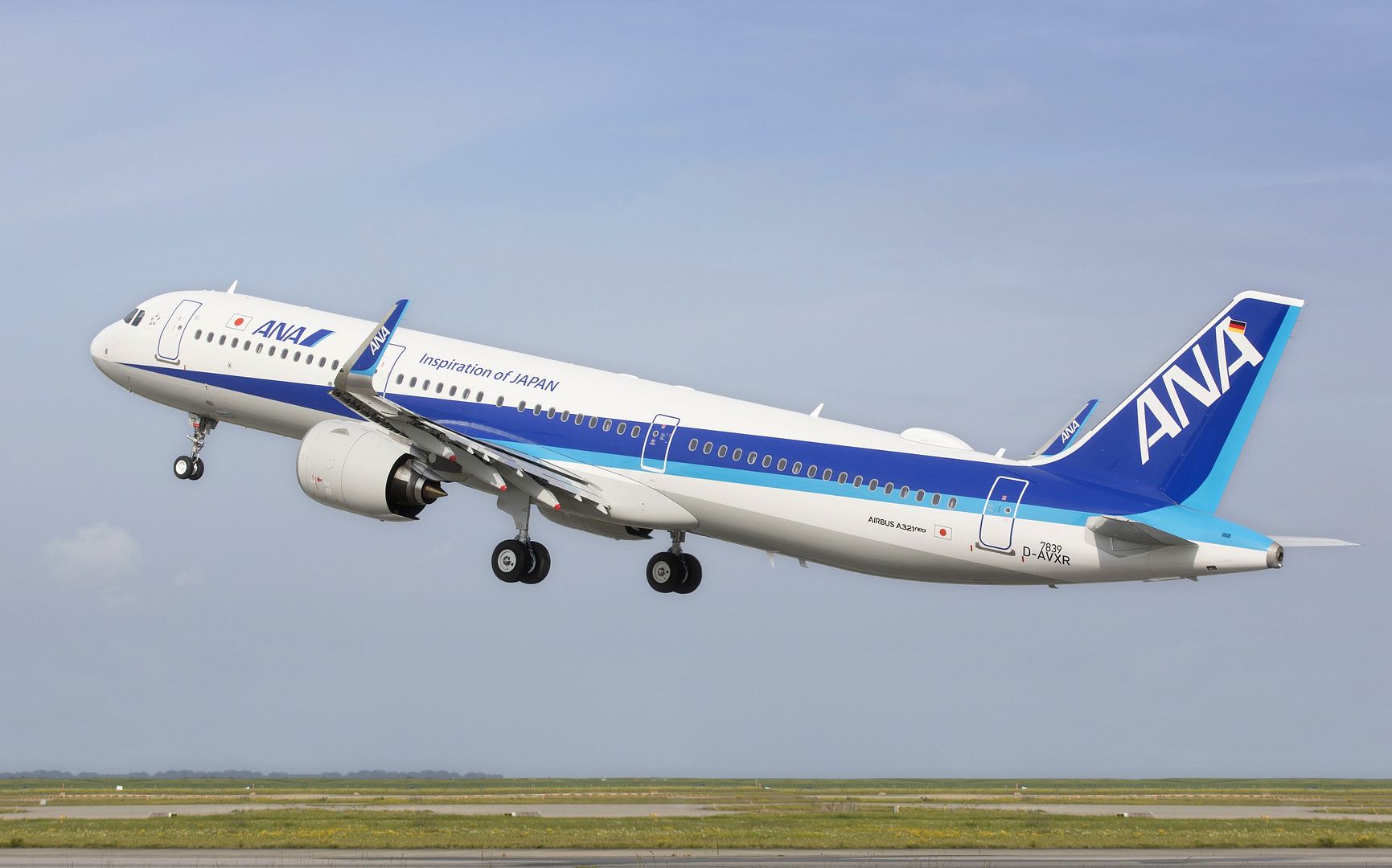
-
 Main AdminThe U.S. Air Force's last C-5A Galaxy lands at Davis-Monthan Air Force Base, Ariz., to be retired to the 309th Aerospace Maintenance and Regeneration Group Sept. 7, 2017. The 309th AMARG preserves more than 4,400 aircraft and 13 aerospace vehicles from the Air Force, Navy-Marine Corps, Army, Coast Guard, and several federal agencies to include NASA. (U.S. Air Force photo by Senior Airman Ashley N. Steffen)
Main AdminThe U.S. Air Force's last C-5A Galaxy lands at Davis-Monthan Air Force Base, Ariz., to be retired to the 309th Aerospace Maintenance and Regeneration Group Sept. 7, 2017. The 309th AMARG preserves more than 4,400 aircraft and 13 aerospace vehicles from the Air Force, Navy-Marine Corps, Army, Coast Guard, and several federal agencies to include NASA. (U.S. Air Force photo by Senior Airman Ashley N. Steffen)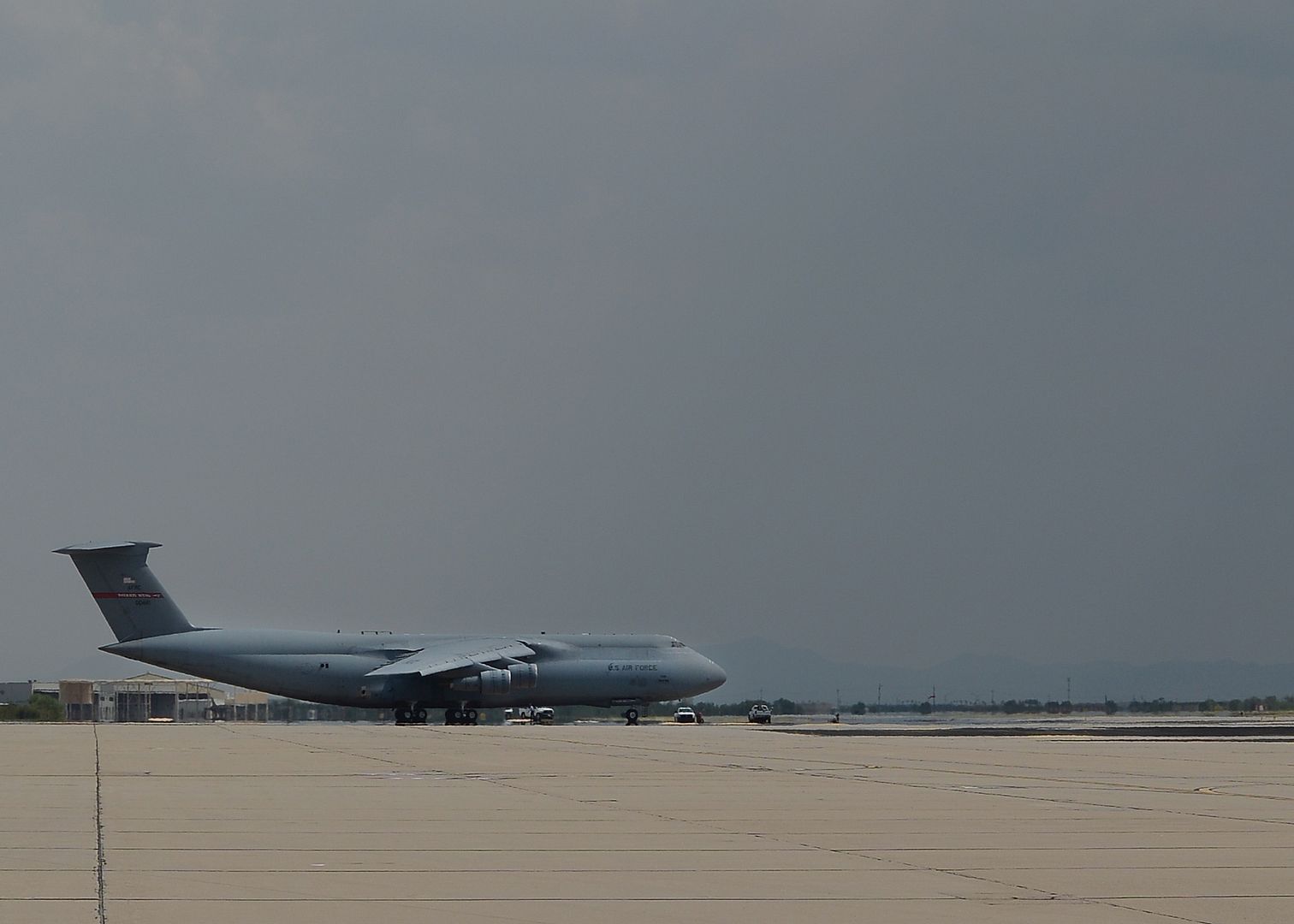
The U.S. Air Force?s last C-5A Galaxy rests before being retired to the 309th Aerospace Maintenance and Regeneration Group at Davis-Monthan Air Force Base, Ariz., Sept. 7, 2017. The C-5A has been in operation for over 44 years and has over 22,500 flight hours and more than 5,470 full-stop landings. (U.S. Air Force photo by Airman 1st Class Frankie D. Moore)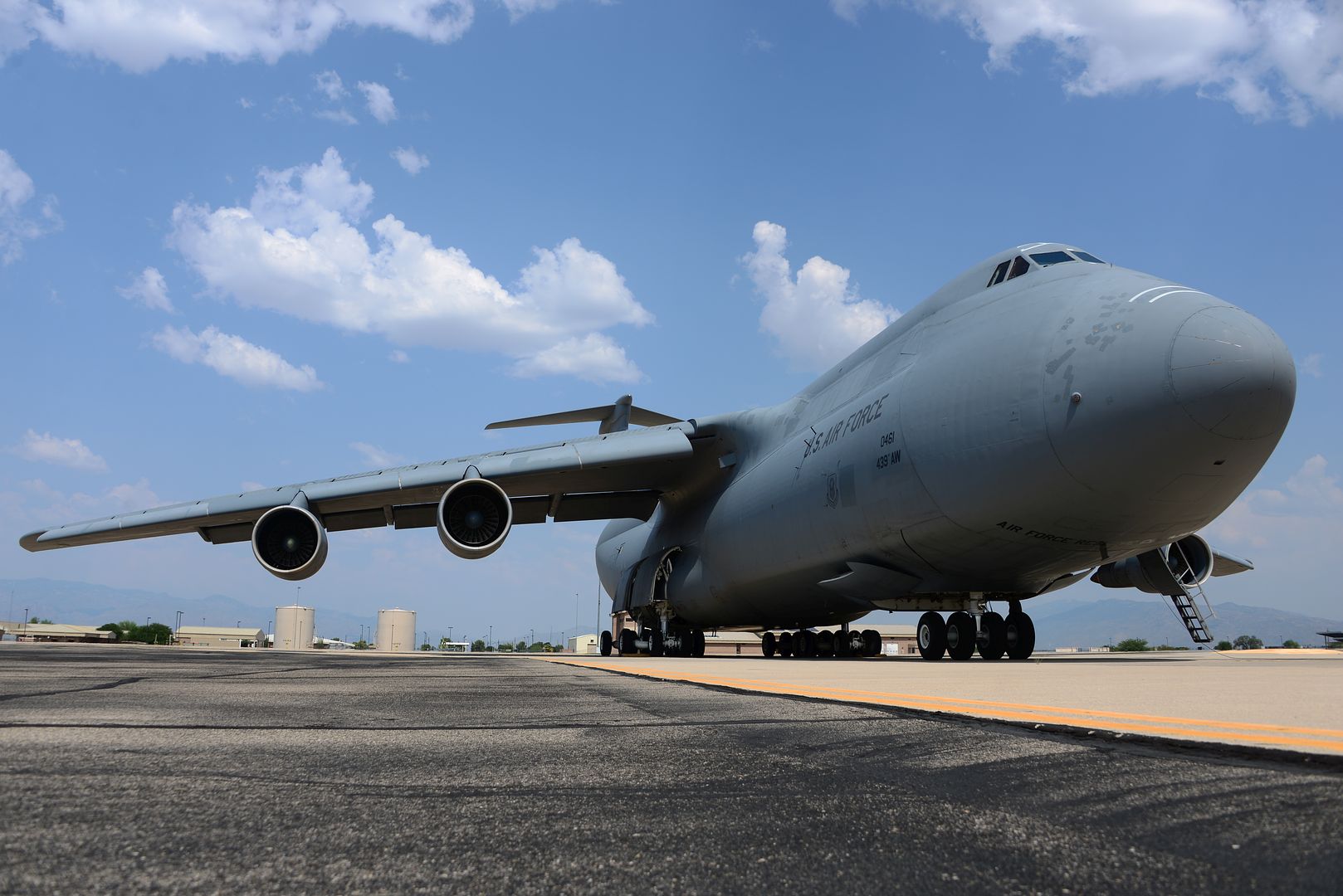
A 44th Fighter Squadron F-15 Eagle goes through a pre-flight inspection during a readiness exercise Sept. 7, 2017, at Kadena Air Base, Japan. The 18th Wing is capable of rapidly generating combat ready aircraft and support at a moment?s notice. Exercises keep members of Team Kadena ready around-the-clock. (U.S. Air Force photo/Airman 1st Class Greg Erwin)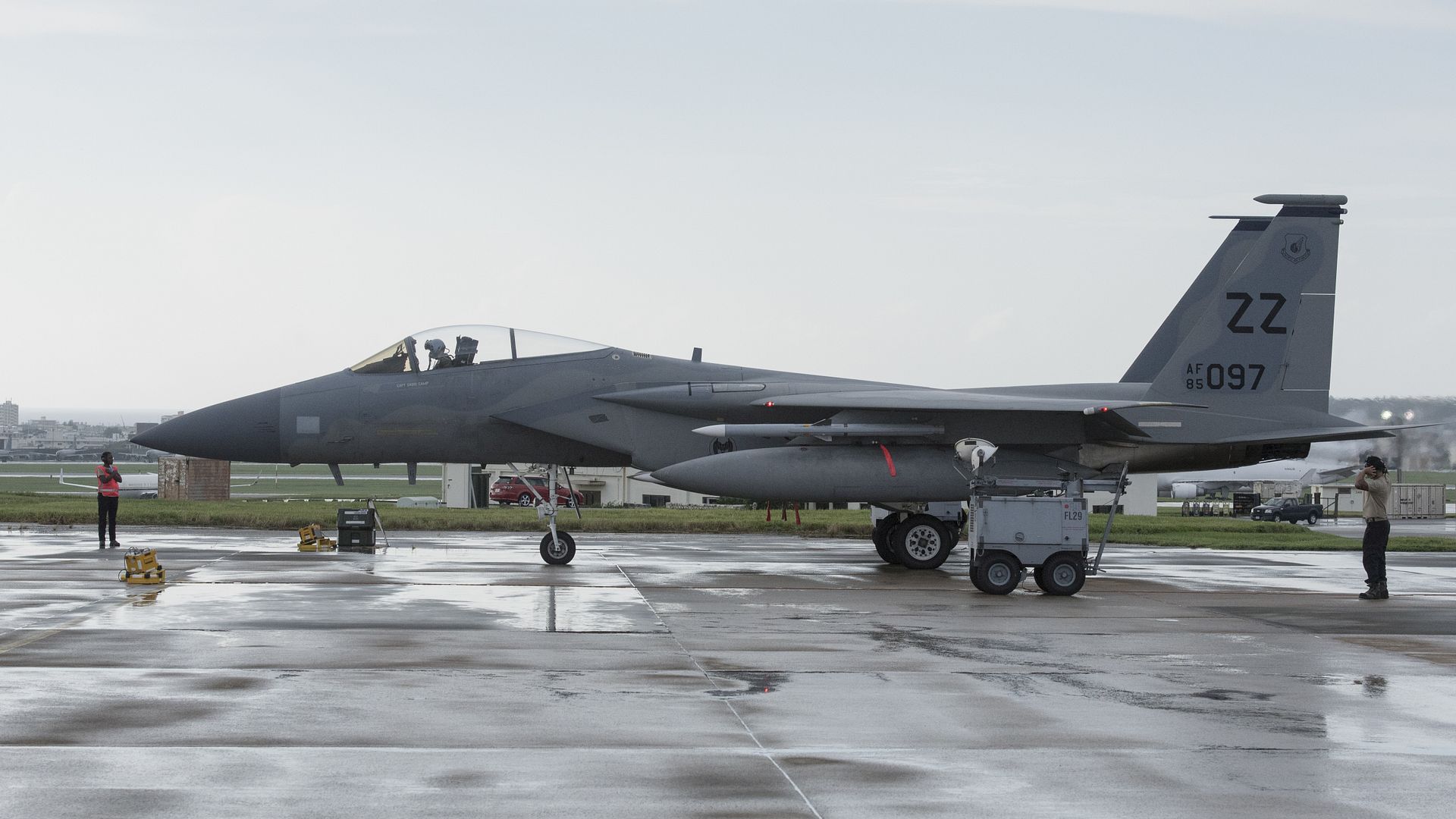
U.S. 5TH FLEET AREA OF RESPONSIBILITY (Sept. 6, 2017) An AV-8B Harrier assigned to Marine Medium Tiltrotor Squadron (VMM) 161 (Reinforced) launches from the flight deck of the amphibious assault ship USS America (LHA 6) in support of exercise Alligator Dagger 2017. Alligator Dagger is a dedicated, unilateral combat rehearsal led by Naval Amphibious Force, Task Force 51/5th Marine Expeditionary Brigade, in which combined Navy and Marine Corps units of the America Amphibious Ready Group and embarked 15th Marine Expeditionary Unit are to practice, rehearse and exercise integrated capabilities that are available to U.S. Central Command both afloat and ashore. (U.S. Navy photo by Mass Communication Specialist Seaman Apprentice Chad Swysgood/Released)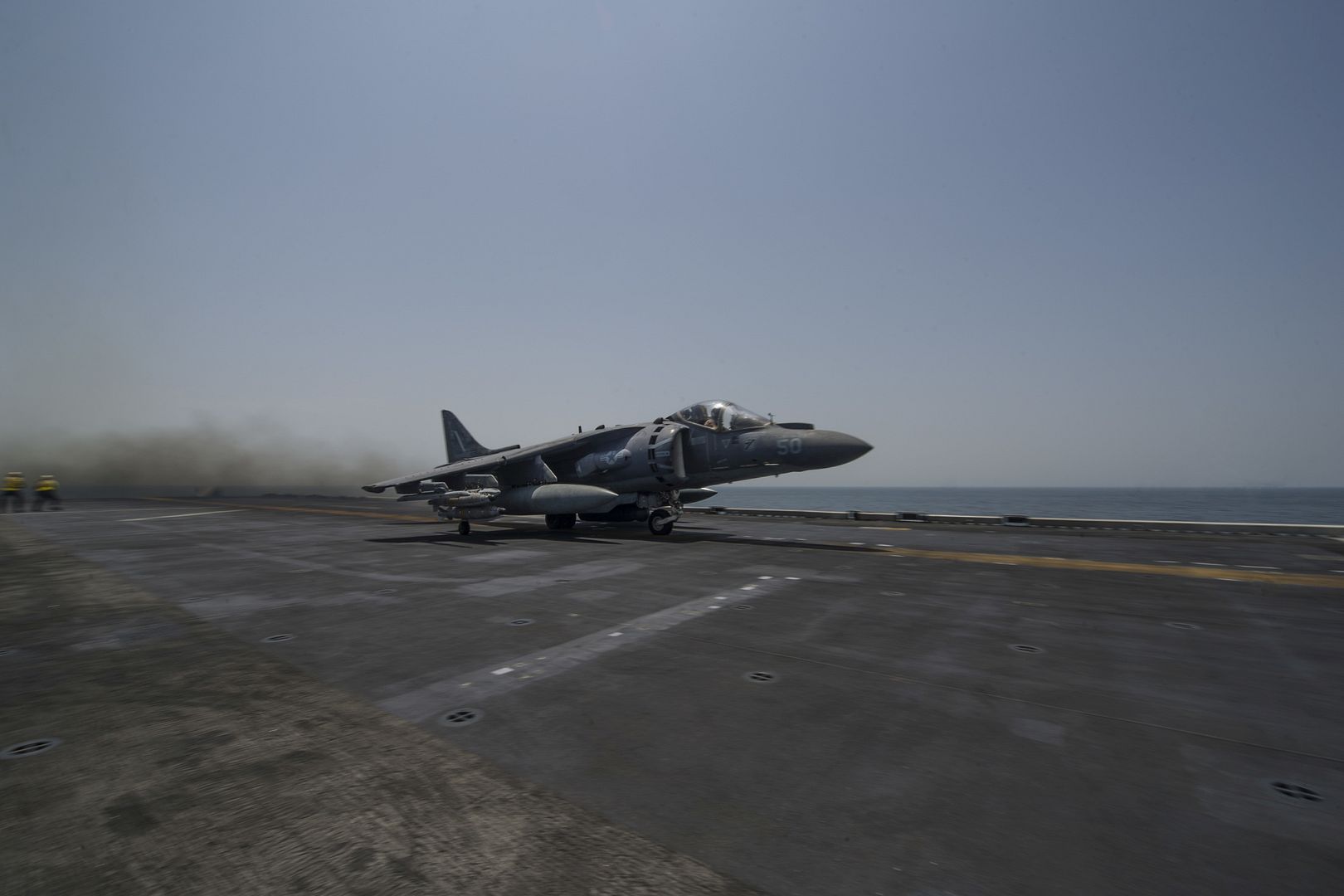
ATLANTIC OCEAN (Sept. 4, 2017) An F-35C Lightning II assigned to the Grim Reapers of Strike Fighter Squadron (VFA) 101 lands on the flight deck of the Nimitz-class aircraft carrier USS Abraham Lincoln (CVN 72). Abraham Lincoln is underway conducting training after successful completion of carrier incremental availability. (U.S. Navy photo by Mass Communication Specialist 1st Class Josue Escobosa/Released)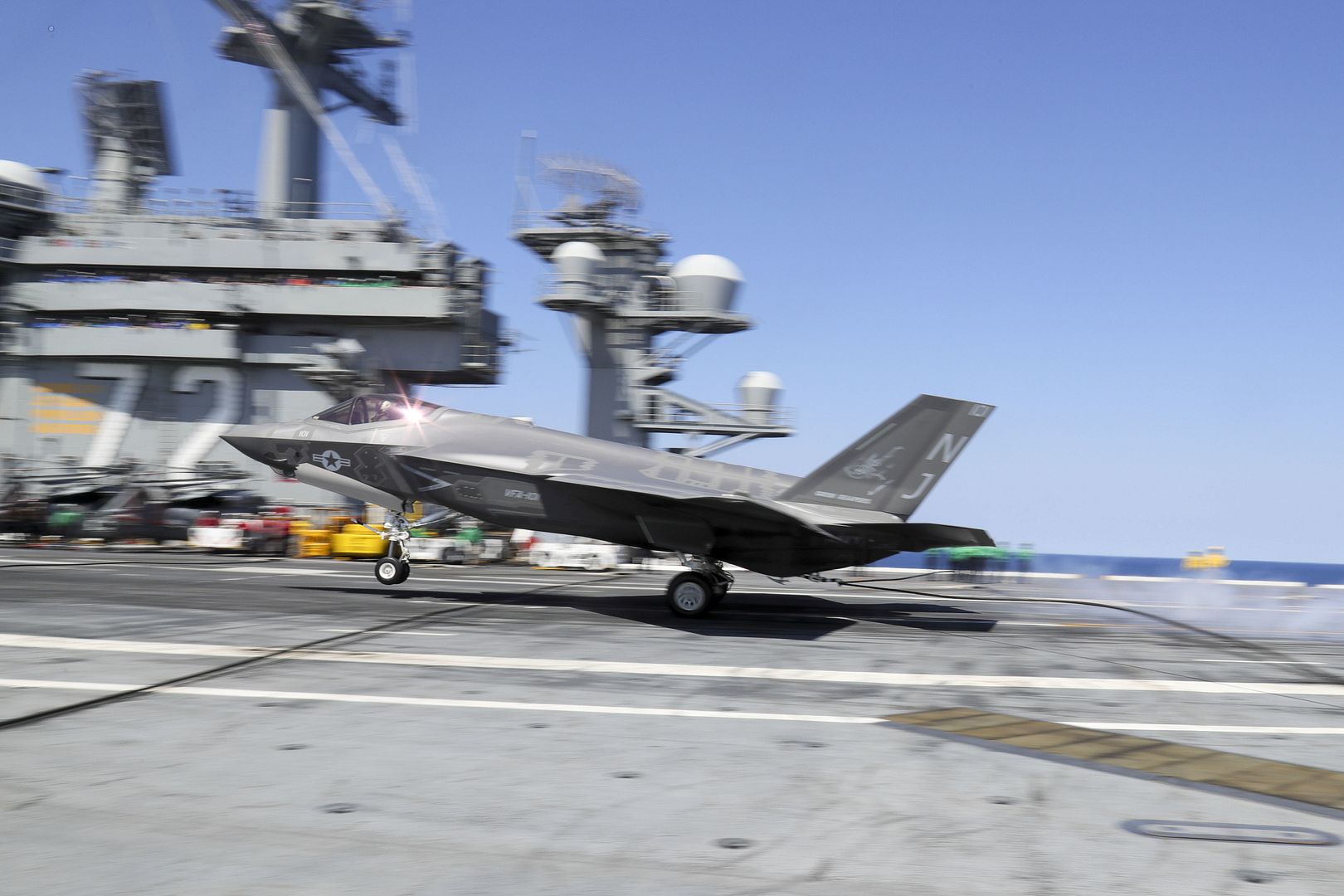
ATLANTIC OCEAN (Sept. 4, 2017) An F-35C Lightning II, from the ?Grim Reapers? of Strike Fighter Squadron (VFA) 101, sits on the flight deck of the Nimitz-class aircraft carrier USS Abraham Lincoln (CVN 72). Abraham Lincoln is underway conducting training after successful completion of carrier incremental availability. (U.S. Navy photo by Mass Communication Specialist 1st Class Josue Escobosa/Released)
STRATFORD, Conn., Sept. 7, 2017 /PRNewswire/ -- Sikorsky, a Lockheed Martin (NYSE: LMT) company, received a contract from the County of Los Angeles for two S-70i? Black Hawk helicopters in a baseline configuration. Sikorsky is assembling the two new S-70i Black Hawk helicopters for delivery to L.A. County in December 2017.
Compared to the S-70A model, the S-70i aircraft will feature wide chord rotor blades for enhanced lift, a stronger airframe, a digital glass cockpit with flight management system for enhanced situation awareness, and a cockpit voice and flight data recorder. An Integrated Vehicle Health Management system will monitor the aircraft's operational health.
In addition to aerial firefighting, a Firehawk helicopter also performs command and control of other firefighting aircraft, EMS transport, search and rescue, and logistic support. Thomas Ewald, assistant fire chief of L.A. County's Air and Wildland Division, said "nothing close compares with the Firehawk. No other aircraft does all five missions as well."
Ewald added: "The Firehawk has repeatedly proven its reliability and ruggedness. The stresses we place on the aircraft when we take on and then aggressively release 8,000 pounds of water multiple times a day are far more than what its military variant might do in normal operations at maximum gross weight. Like a good pick-up truck, we beat it up and it keeps coming back for more."
"The new and more capable S-70i Black Hawk helicopters will provide L.A. County and the fire department with the most effective firefighting and multi-mission aircraft available, said Dan Schultz, president of Sikorsky. "We thank L.A. County for its continued confidence in Sikorsky and the Black Hawk helicopter, and for our close collaboration that has resulted in advances in aerial firefighting. We offer our congratulations to the courageous firefighters, aircrews and maintainers who employ this unique capability for the highest ideal of public service."
Once modified by a specialist outfitter in 2018 with a 1,000-gallon (3,785-liter) water tank, extended landing gear, single pilot cockpit layout and a medically-equipped interior, the new aircraft will increase to five the L.A. County Fire Department's fleet of Firehawk? multi-role helicopters.
"This acquisition supplements our county's potent aerial firefighting arsenal and our ability to knock down wildfires to protect life and property," said LA County Supervisor Kathryn Barger. "The Firehawk provides a very effective initial attack platform to battle fires along with multi-mission capability for alternate needs including EMS and search and rescue."
Sikorsky supports the critical mission of the L.A. Country fire department with an all new airframe of the S-70i Black Hawk aircraft, which are available direct from Sikorsky in the U.S. Customers can order aircraft with mission sets and features customized to specific preferences. The Los Angeles County Fire Department was the first municipal organization to purchase the Firehawk in December 2000.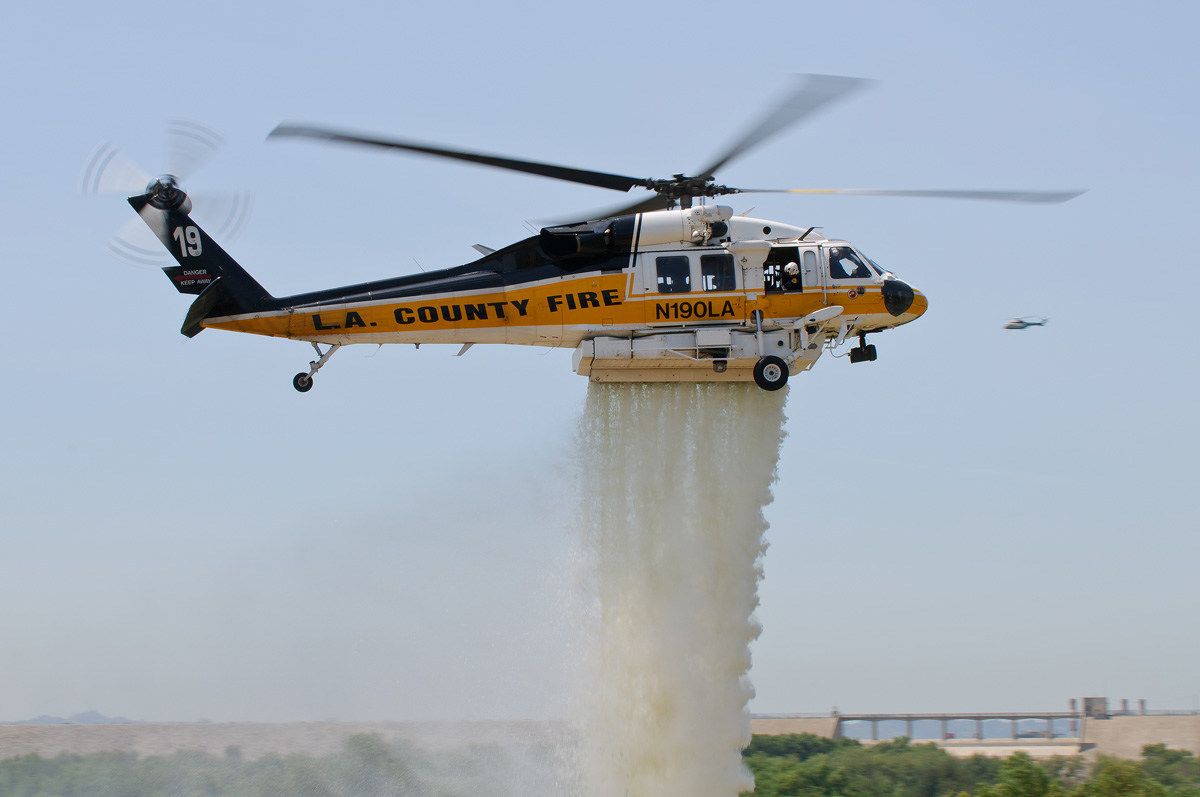
Madrid, 7 September 2017 - Airbus Defence and Space has today successfully completed the maiden flight of the first A330 MRTT Multi Role Tanker Transport for France. The aircraft, which will be known in French service as Ph?nix, is the first of nine ordered by the French Defence Procurement Agency DGA, plus another three expected to be confirmed. It is the second new standard A330 MRTT to fly, featuring structural modifications, aerodynamic improvements giving a fuel-burn reduction of up to 1%, upgraded avionics computers and enhanced military systems. The aircraft was converted in Getafe from a standard A330 assembled in Toulouse. The crew reported that the aircraft performed in line with expectations during the 3h 25min flight. The Ph?nix fleet will be equipped with a combination of the Airbus Aerial Refuelling Boom System (ARBS) and underwing hose-and-drogue refuelling pods, and can carry 272 passengers or be configured for medical evacuation. First delivery is due in 2018. Fifty-one A330 MRTTs have been ordered by eight nations of which 28 have been delivered. Photo: Pablo Cabellos / Airbus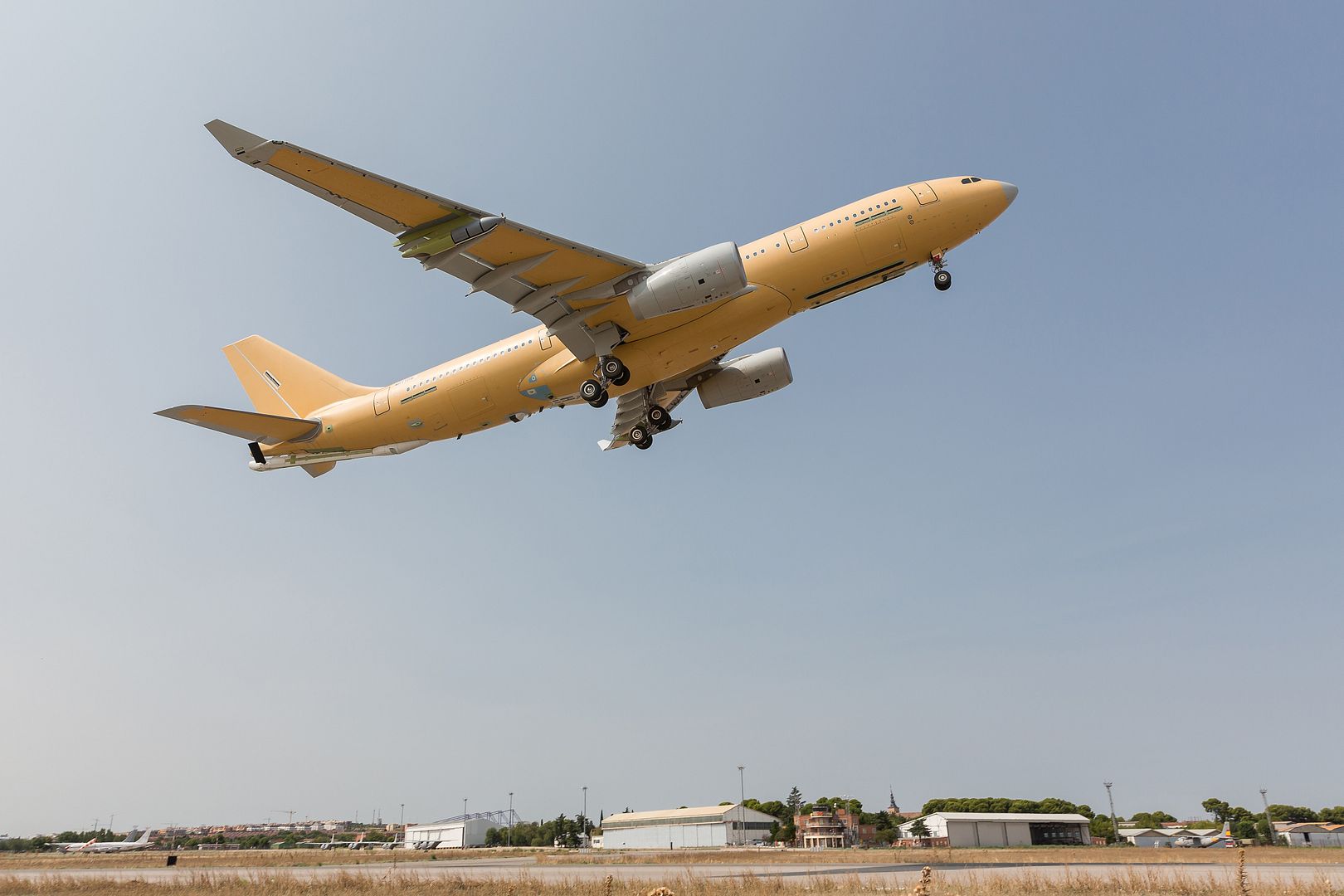
V-280 Valor Achieves 100% Completion
The Bell V-280 Valor has achieved 100% build completion and moved one step closer to its first flight this fall. The V-280 is the newest revolutionary aircraft in the tiltrotor family. The V-280 Valor was selected in August 2014 to advance, build and fly an aircraft within the JMR-TD program.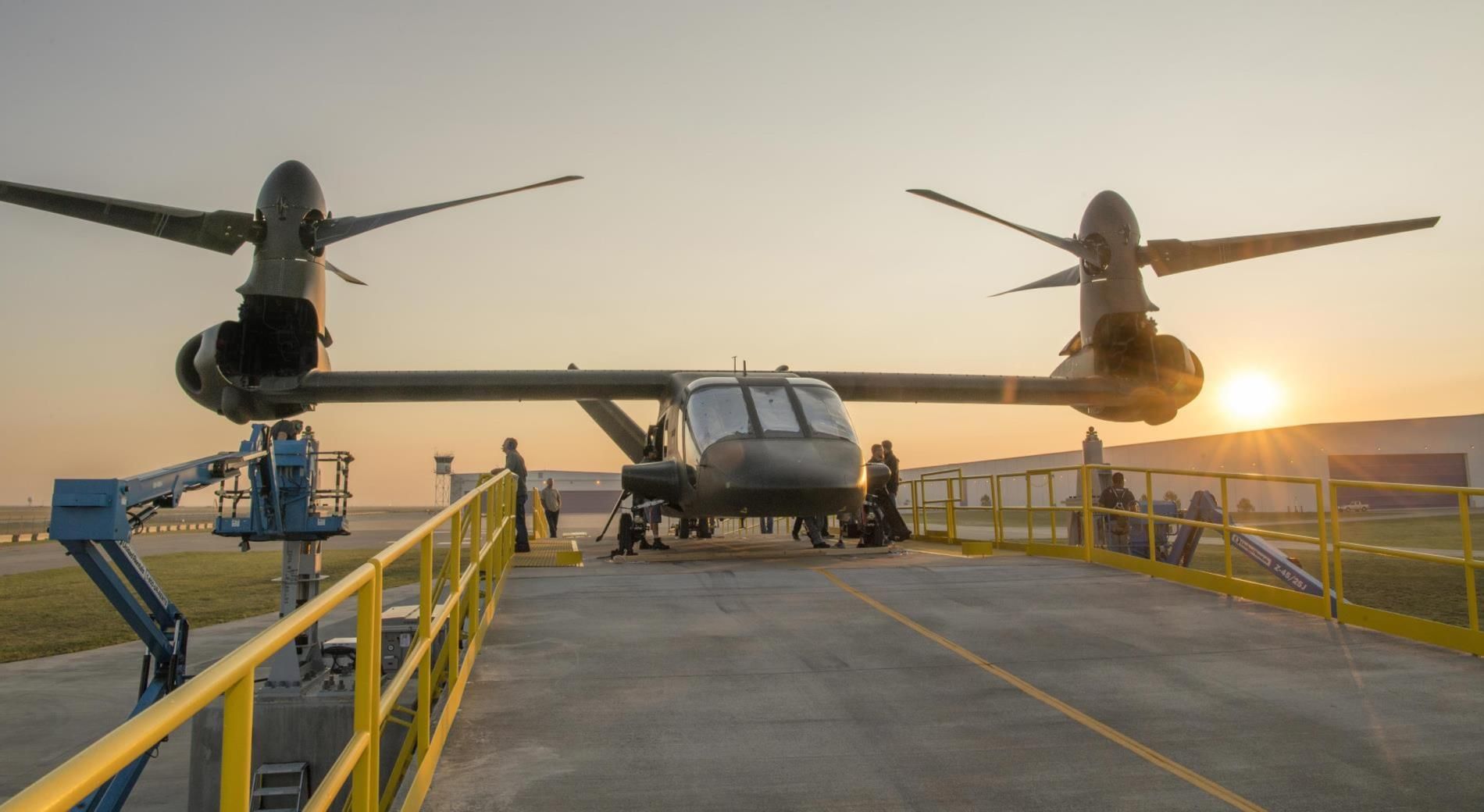
The V-280 has been designed to provide our military with the speed, range and operational productivity needed to complete any mission successfully and outmatch every opponent. New innovations incorporated in the V-280 include stationary nacelles, which increases the ease of aircraft maintenance and safety of the ingress and egress. The newest tiltrotor offers fixed-wing high speed performance and low speed agility, giving soldiers and operators the option to select the best pace and maneuverability for their mission.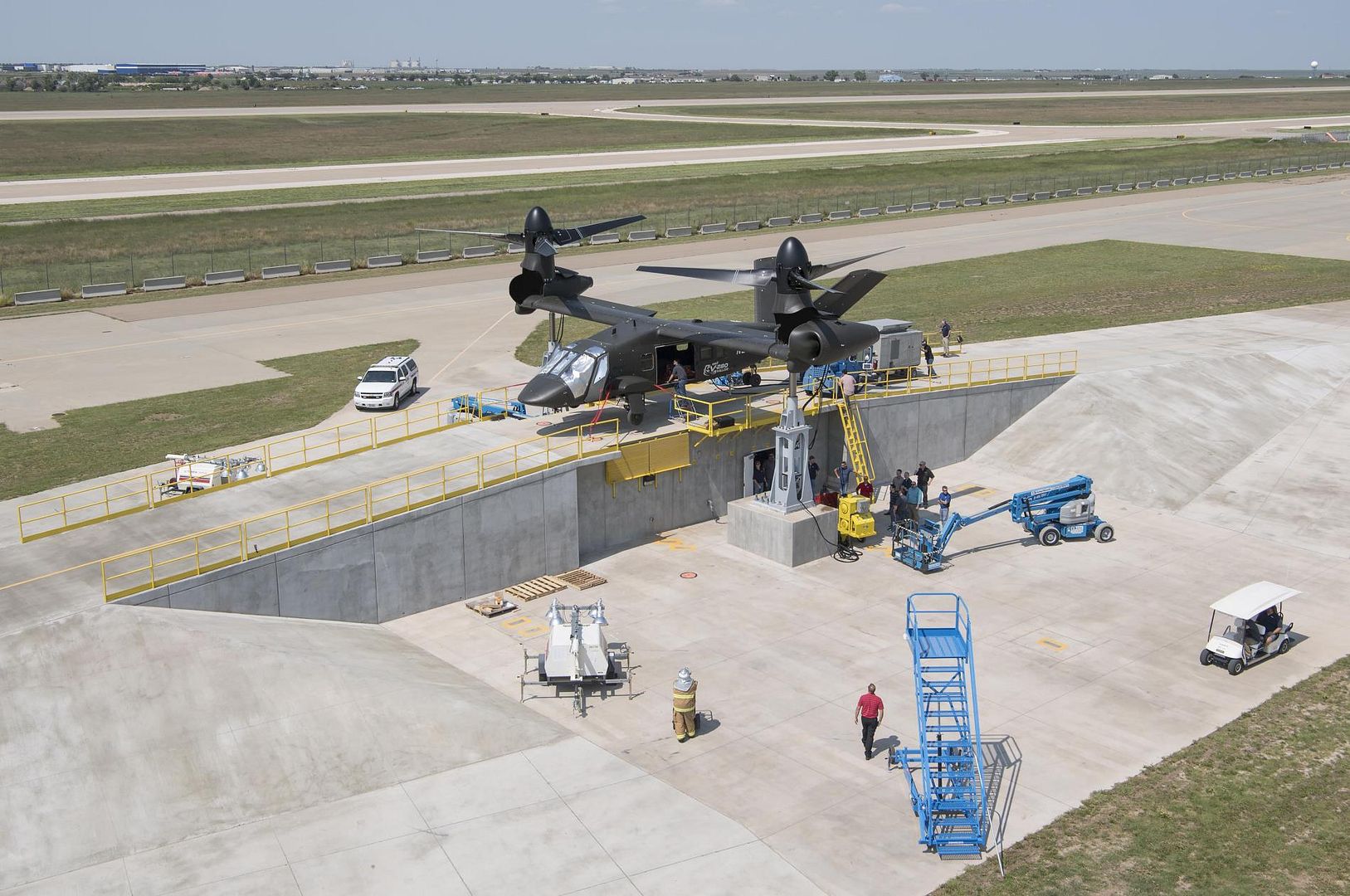
-
 Main AdminA C-40C aircraft with the 932nd Airlift Wing departs Sept 8, 2017 from Scott Air Force Base, Illinois, heading to Tyndall Air Force Base to pick up fellow service members ahead of approaching Hurricane Irma. The total force crew of active duty 54th Airlift Squadron and reservists of the 73rd Airlift Squadron featured pilots, flight attendants and flying crew chief aboard. (U.S. Air Force photo by Lt. Col. Stan Paregien)
Main AdminA C-40C aircraft with the 932nd Airlift Wing departs Sept 8, 2017 from Scott Air Force Base, Illinois, heading to Tyndall Air Force Base to pick up fellow service members ahead of approaching Hurricane Irma. The total force crew of active duty 54th Airlift Squadron and reservists of the 73rd Airlift Squadron featured pilots, flight attendants and flying crew chief aboard. (U.S. Air Force photo by Lt. Col. Stan Paregien)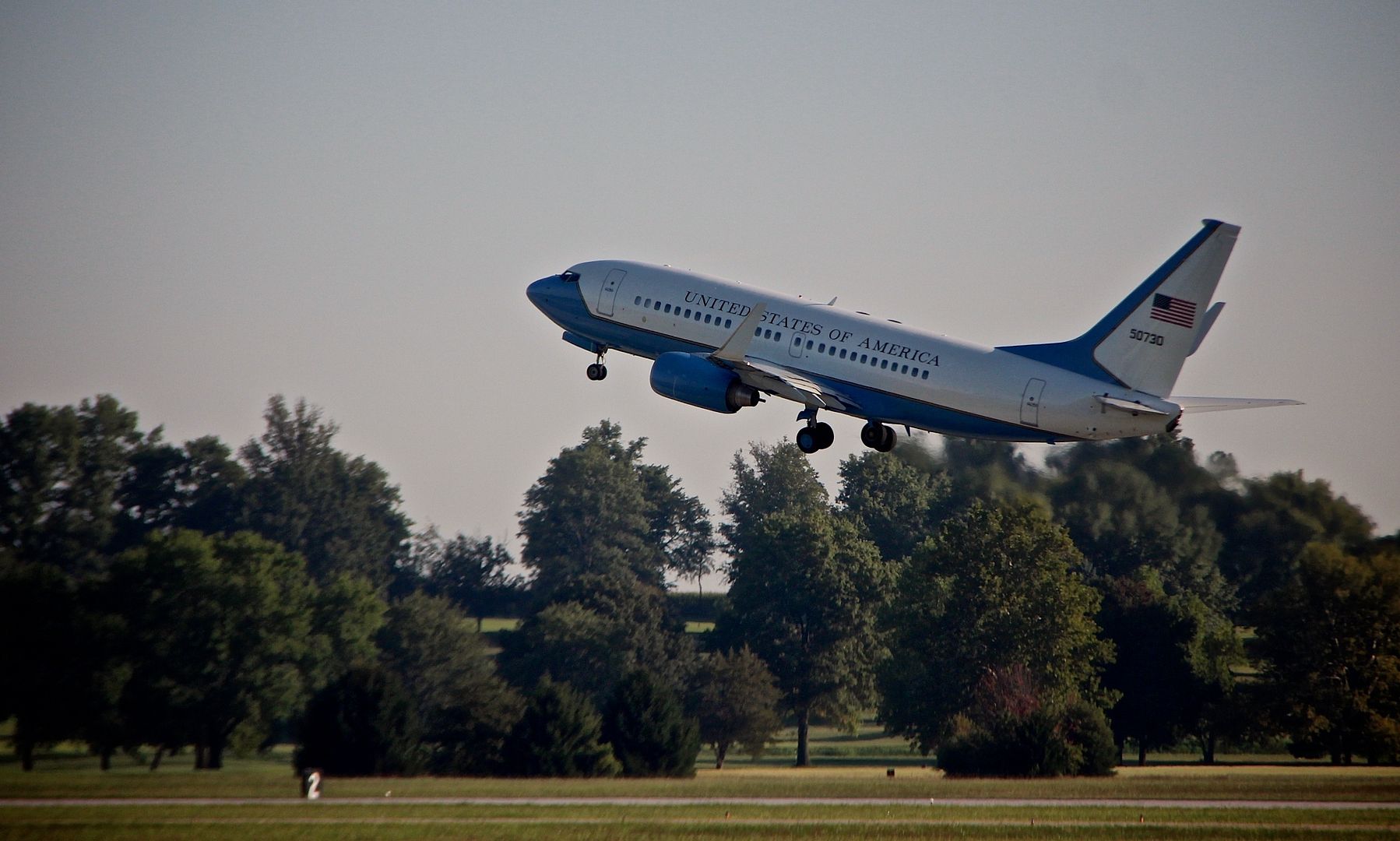
Capt. Eric Hickernell, 75th Fighter Squadron A-10C Thunderbolt II pilot, taxis en route to shelter during a displacement mission prior to Hurricane Irma, Sept. 8, 2017, at Moody Air Force Base, Ga. More than 20 A-10?s travelled to Columbus Air Force Base, Miss., while Team Moody assets will assists Federal Emergency Management Agency and other first responder agencies during the upcoming hurricane response efforts in the Southeast region. (U.S. Air Force photo by Senior Airman Greg Nash)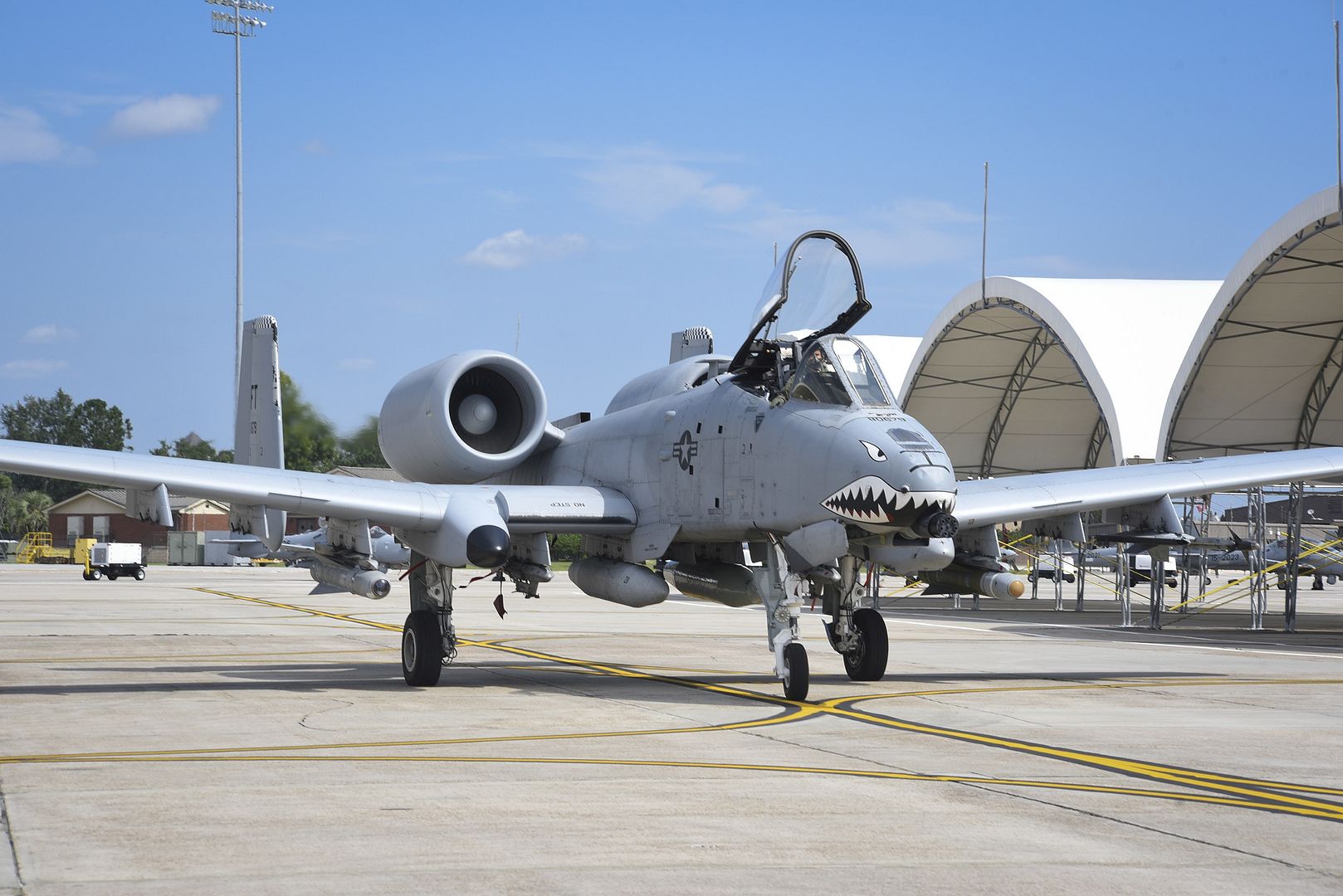
A U.S. Air Force F-22 Raptor assigned to Tyndall Air Force Base, Fla., takes off from the Tyndall flightline as part of an asset evacuation due to Hurricane Irma Sep. 8, 2017. Tyndall evacuated its F-22s, QF-16 Aerial Targets, T-38 Talons, E-9A Widgets and other aerial assets in preparation for Hurricane Irma. (U.S. Air Force photo by Senior Airman Sergio A. Gamboa/Released)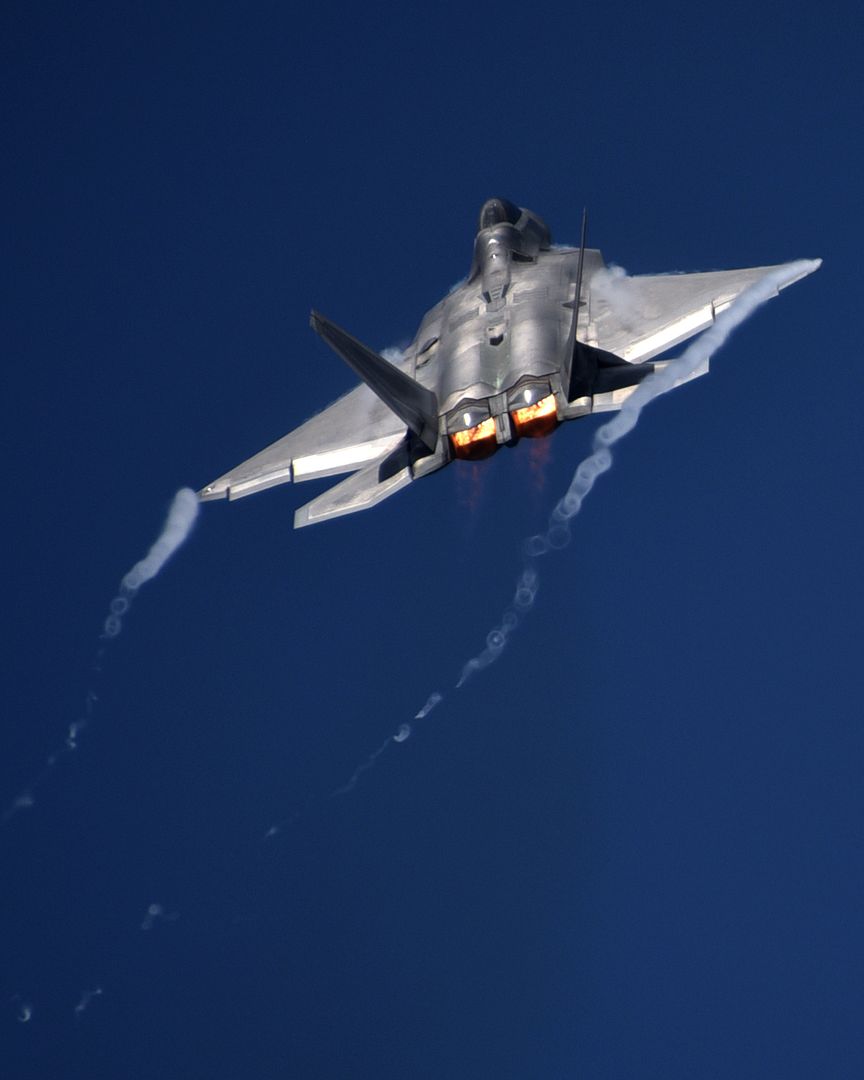
Three C-17 Globemaster III from Joint Base Charleston, S.C. arrive to Scott in preparation for Hurricane Irma, at Scott Air Force Base, Ill. Irma is a category five hurricane with winds up to 185 mph making it's way through the Antlantic Ocean. (U.S Air Force photo by Senior Airman Melissa Estevez)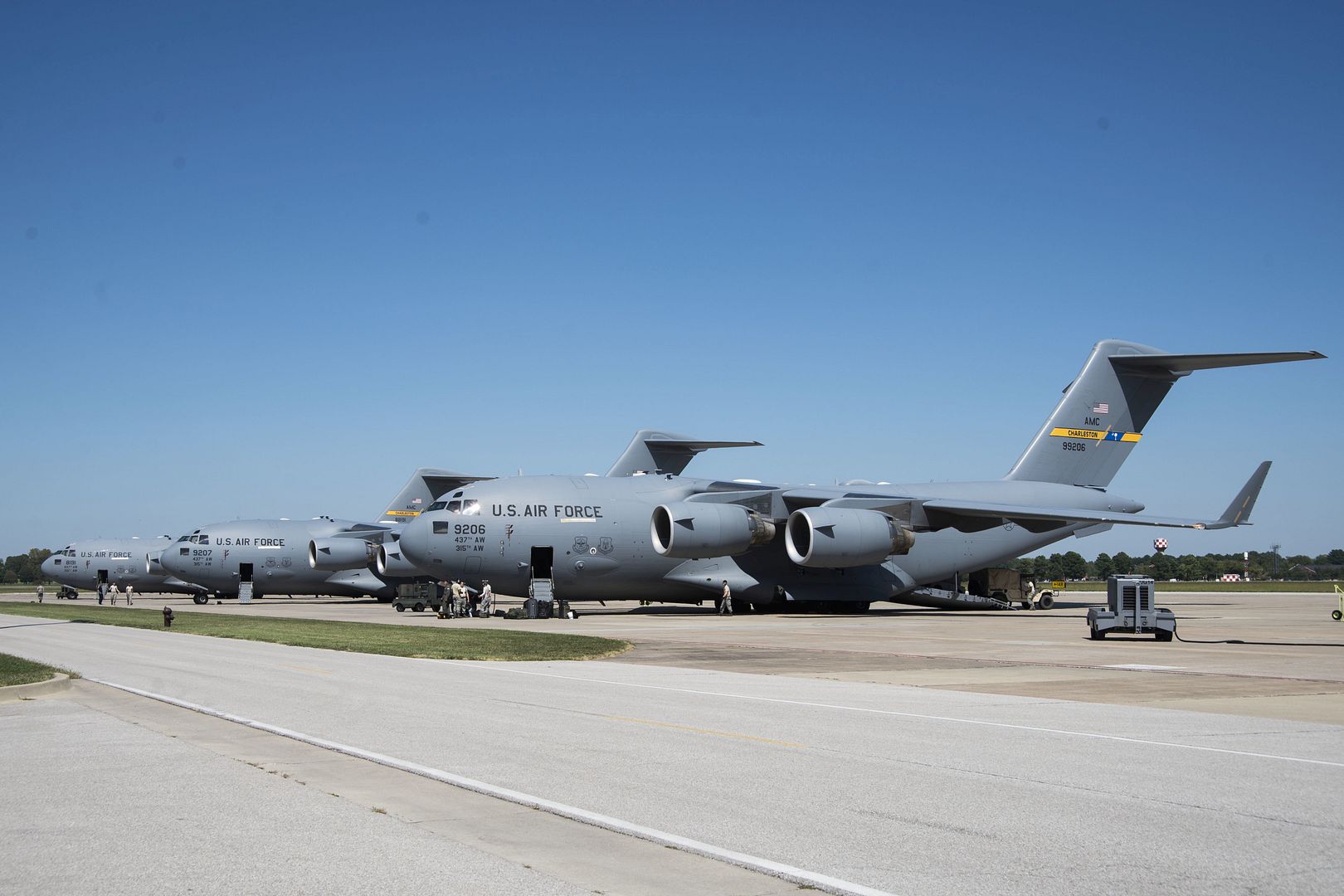
Two U.S. Marine Corps F/A-18 Hornets with VMFA-225 and a KC-130J Hercules with VMGR-352 fly over a river during a Marine Corps capabilites demonstration for Marine Week in Detroit, MI, Sept. 08, 2017. Marine Week Detroit is a chance to reconnect with our Marines, sailors, veterans and their families from different generations. (U.S. Marine Corps photo by Sgt. Gregory Boyd)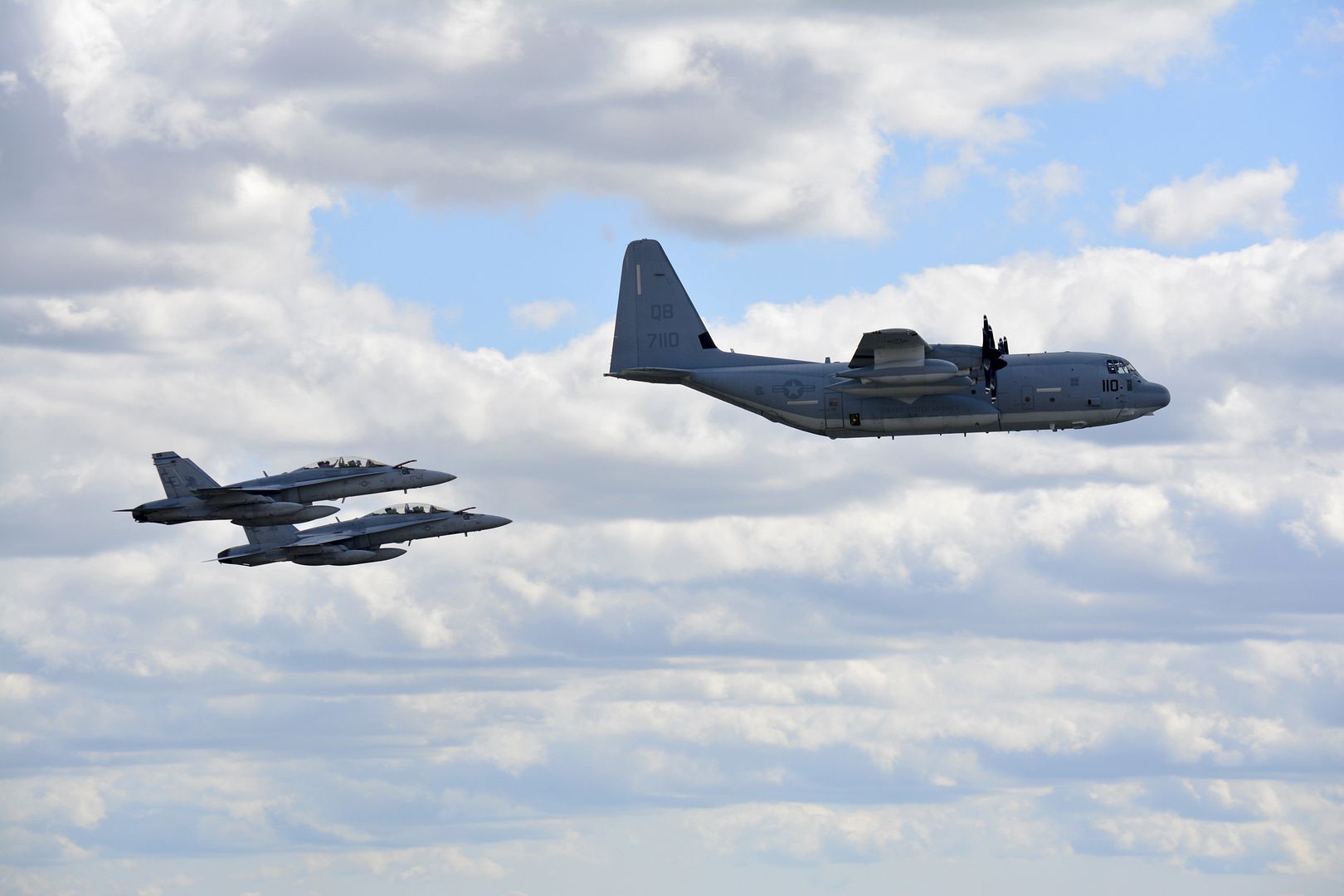
PACIFIC OCEAN (Sept. 8, 2017) An EA-18G Growler assigned to the Wizards of Electronic Attack Squadron (VAQ) 133 lands on the flight deck of USS John C. Stennis (CVN 74). John C. Stennis is underway conducting carrier qualifications and training for future operations after completing flight deck certification. (U.S. Navy photo by Mass Communication Specialist 3rd Class Cole C. Pielop/Released)
MEDITERRANEAN SEA (Sept. 6, 2017) An AV-8B Harrier piloted by Italian marine corps Capt. Daniele Calvi, assigned to the Grubaer Italian Naval Squadron, maneuvers on the flight deck of the Wasp-class amphibious assault ship USS Bataan (LHD 5). Bataan and its amphibious ready group are deployed to the U.S. 5th Fleet area of operations in support of maritime security operations to reassure allies and partners and preserve the freedom of navigation and the free flow of commerce in the region. (U.S. Navy photo by Mass Communication Specialist 3rd Class Evan Thompson/Released)
A U.S. Air Force B-1B Lancer assigned to 37th Expeditionary Bomb Squadron, deployed from Ellsworth Air Force Base, South Dakota, takes off from Andersen Air Force Base, Guam, to fly a bilateral mission with two Koku Jieitai (Japan Air Self-Defense Force) F-15s, Sept. 9, 2017. Participating in bilateral training enables the operational units to improve their combined capabilities and tactical skills, while also building bilateral confidence and strong working relationships. (U.S. Air Force Photo by Senior Airman Jacob Skovo)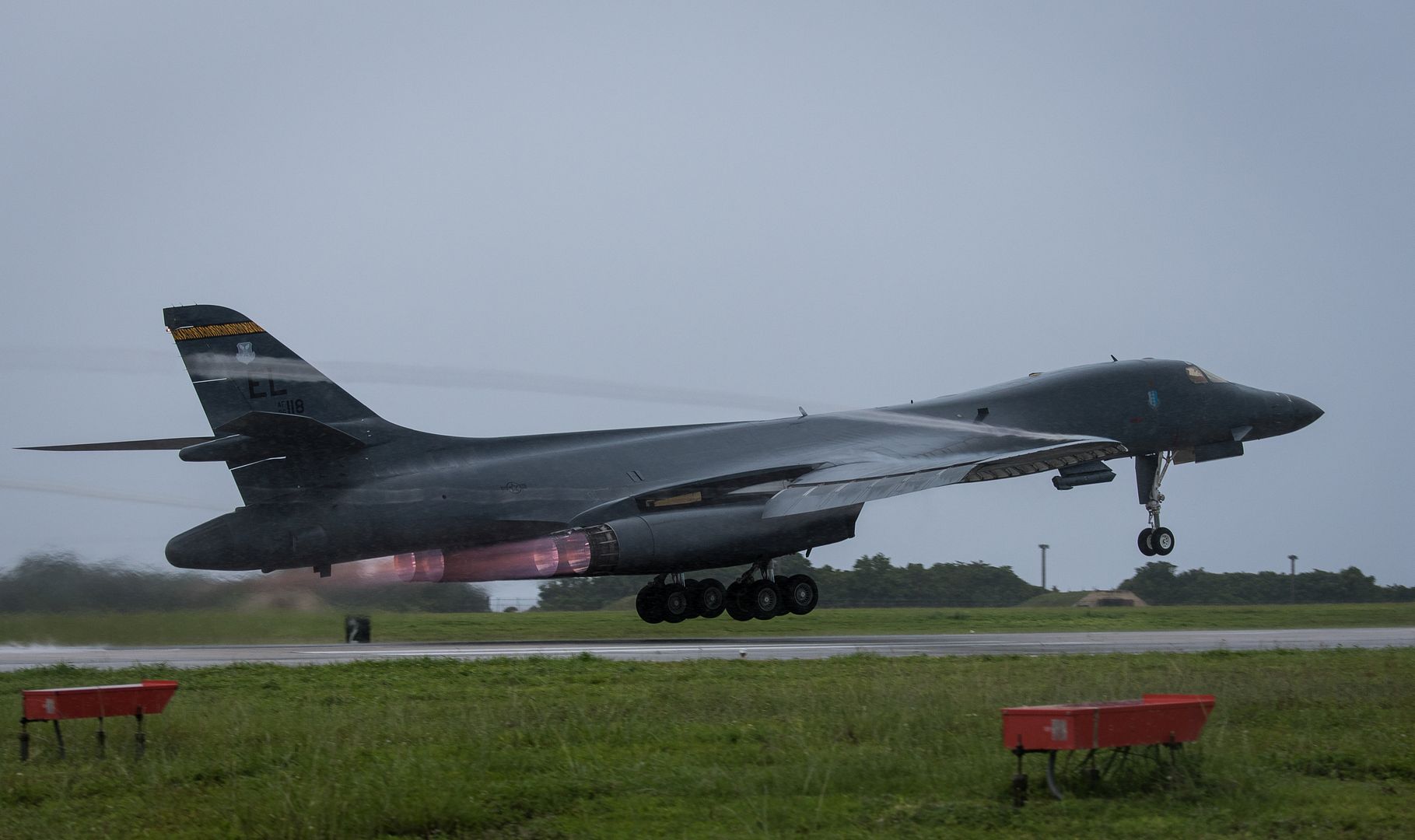
Two U.S. Air Force B-1B Lancers fly a bilateral mission with two Koku Jieitai (Japan Air Self-Defense Force) F-15s in the vicinity of the East China Sea, Sept. 9, 2017. Following the end of the operation, one B-1B split off to Misawa Air Base, Japan, to be a static display for the Misawa Air Festival, while the other B-1B returned to Andersen Air Force Base, Guam. The purpose of bilateral training is to foster increased interoperability between Japan and U.S. aircraft. Participating in bilateral training enables the operational units to improve their combined capabilities and tactical skills, while also building bilateral confidence and strong working relationships. (Courtesy Photo's)
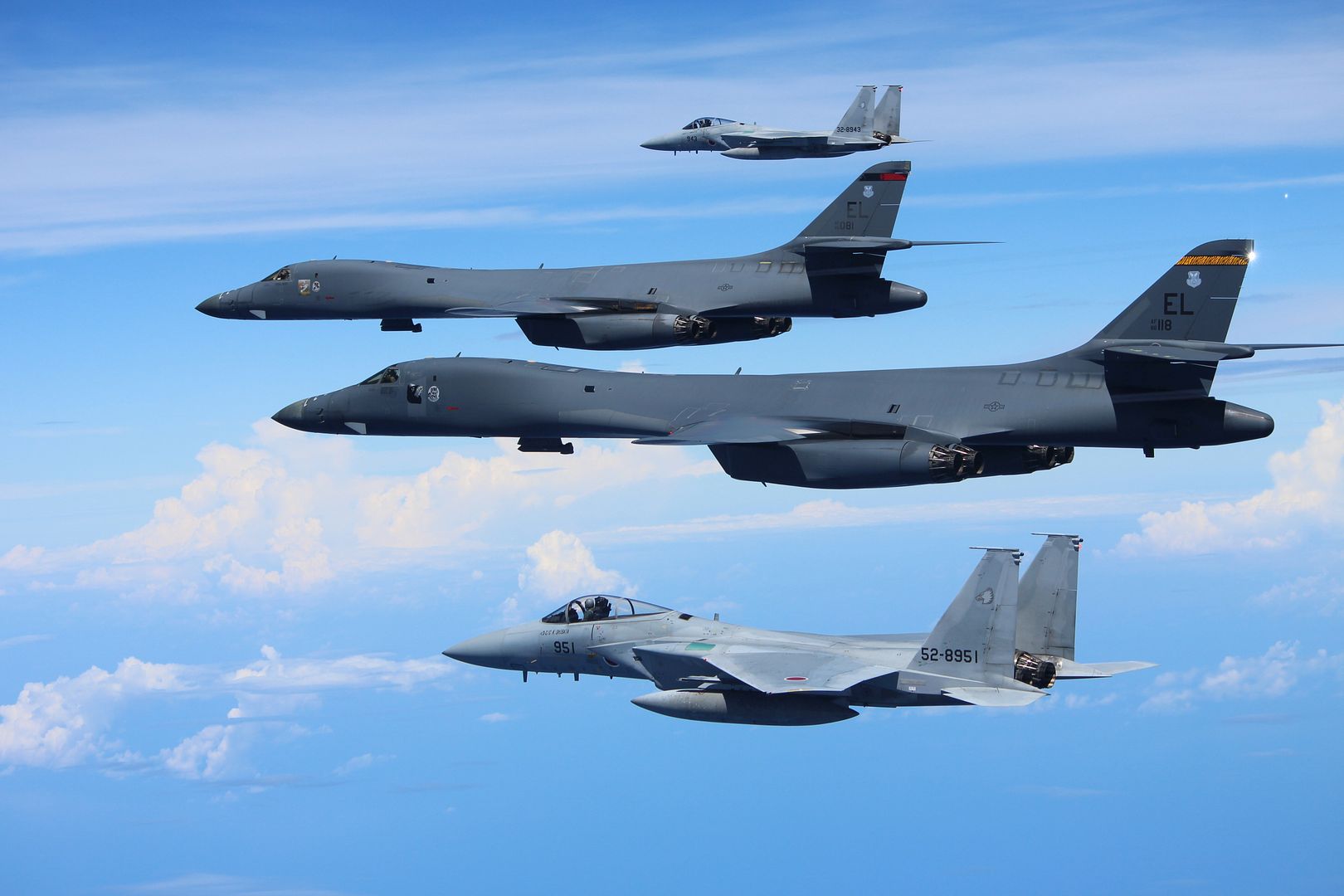
-
 Main AdminU.S. 5TH FLEET AREA OF OPERATIONS (Sept. 9, 2017)A MV-22 Osprey assigned to the ?Greyhawks? of Marine Medium Tiltrotor Squadron (VMM) 161 (Reinforced) lands on the flight deck of the amphibious assault ship USS America (LHA 6) after providing support for exercise Alligator Dagger 2017. Alligator Dagger is a dedicated, unilateral combat rehearsal led by Naval Amphibious Force, Task Force 51/5th Marine Expeditionary Brigade, in which combined Navy and Marine Corps units of the America Amphibious Ready Group and embarked 15th Marine Expeditionary Unit are to practice, rehearse and exercise integrated capabilities that are available to U.S. Central Command both afloat and ashore. (U.S. Navy photo by Mass Communication Specialist Seaman Vance Hand/Released)
Main AdminU.S. 5TH FLEET AREA OF OPERATIONS (Sept. 9, 2017)A MV-22 Osprey assigned to the ?Greyhawks? of Marine Medium Tiltrotor Squadron (VMM) 161 (Reinforced) lands on the flight deck of the amphibious assault ship USS America (LHA 6) after providing support for exercise Alligator Dagger 2017. Alligator Dagger is a dedicated, unilateral combat rehearsal led by Naval Amphibious Force, Task Force 51/5th Marine Expeditionary Brigade, in which combined Navy and Marine Corps units of the America Amphibious Ready Group and embarked 15th Marine Expeditionary Unit are to practice, rehearse and exercise integrated capabilities that are available to U.S. Central Command both afloat and ashore. (U.S. Navy photo by Mass Communication Specialist Seaman Vance Hand/Released)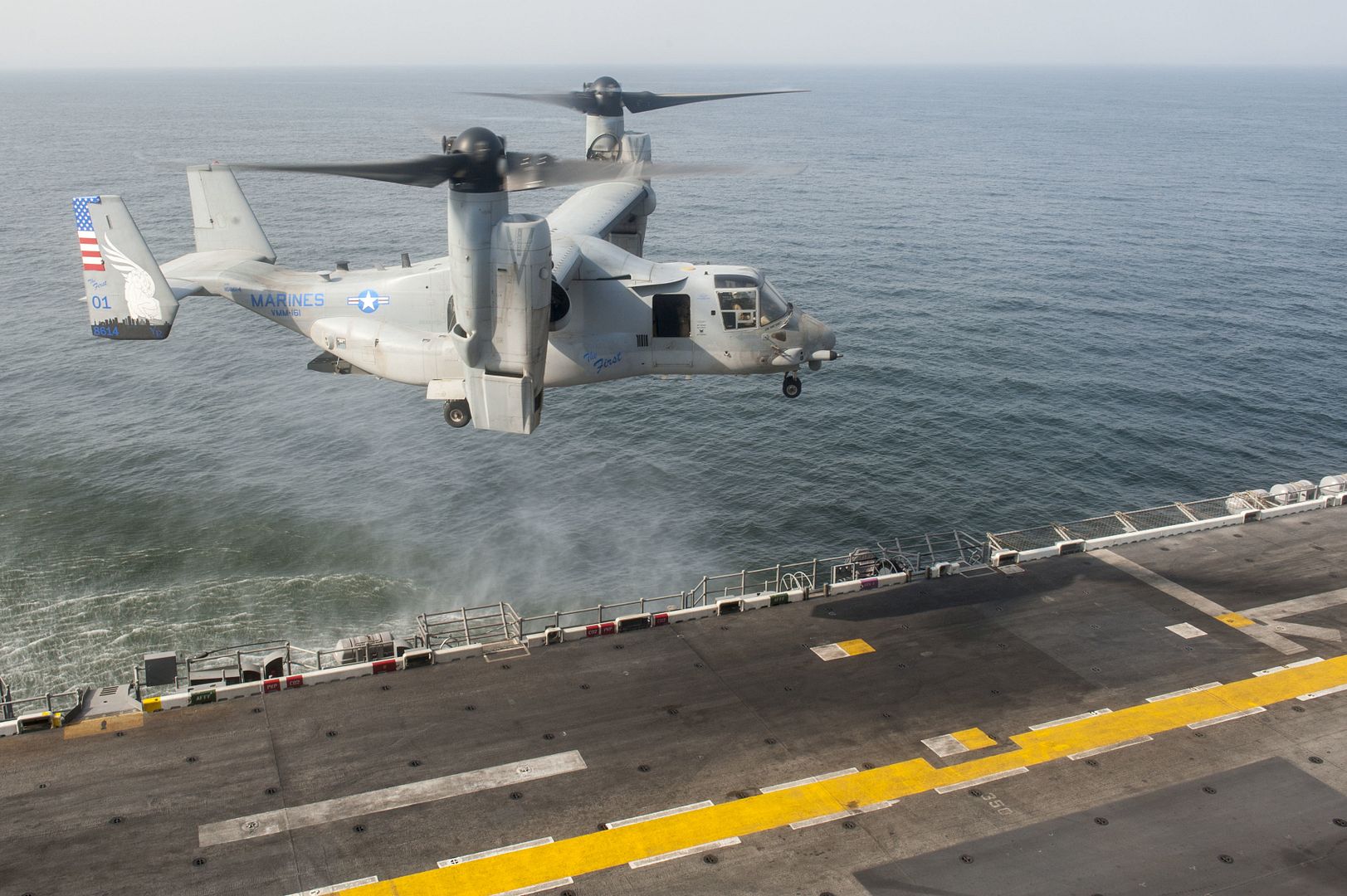
The A-10c fighter pilots of the 122nd Fighter Wing geared up for an early takeoff September 10 at Nellis Air Force Base, NV during the 2017 Green Flag-West air-land integration combat training exercise. (U.S. Air National Guard photo by SSgt Rana Franklin/released)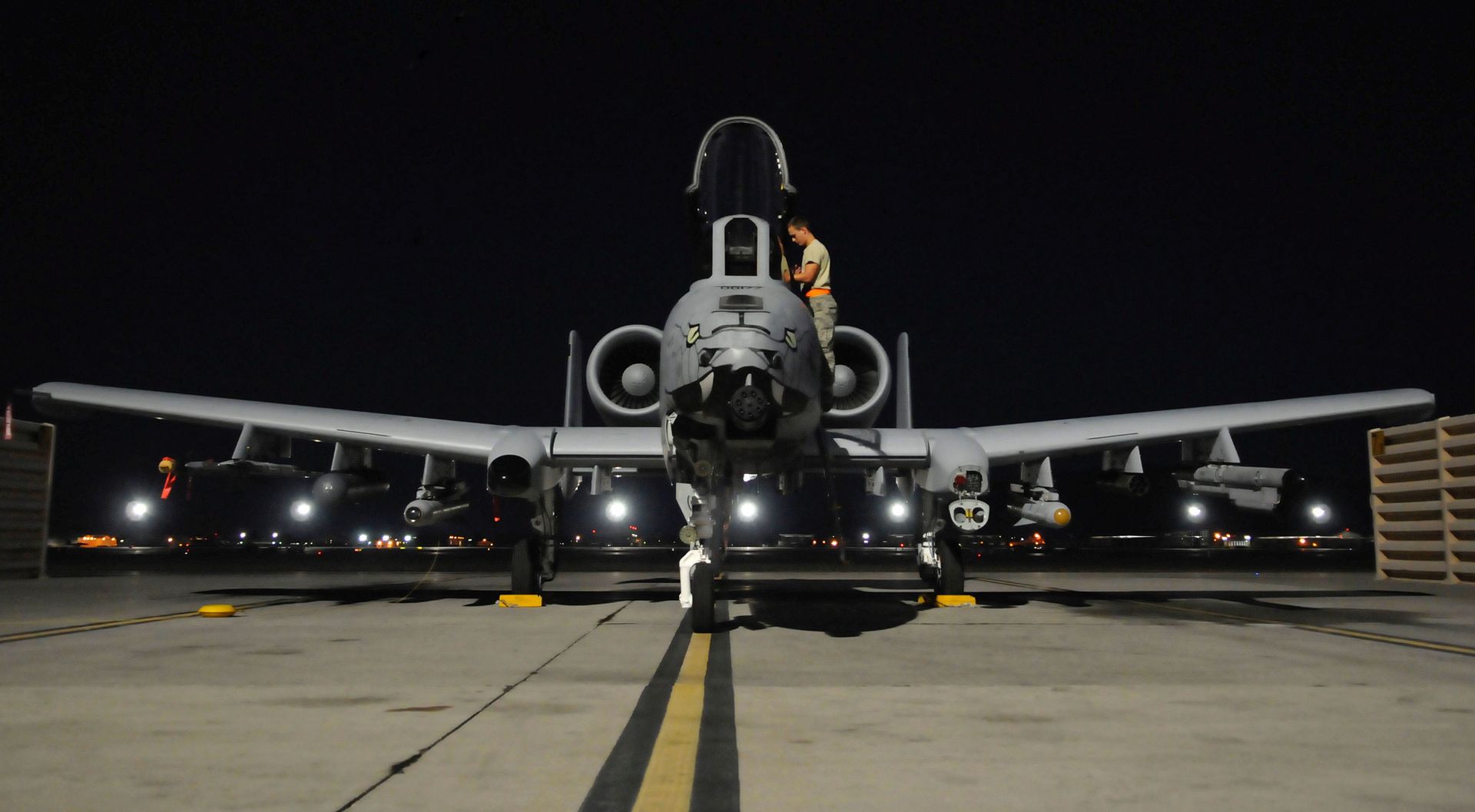
A C-130 Hercules from Bradley Air National Guard Base, East Granby, Conn., prepares for take-off September 9, 2017, from Bradley?s flight line. The aircraft was on a mission to deliver meals ready-to-eat to victims of Hurricane Irma in Puerto Rico. (U.S. Air Force photo by Airman 1st Class Sadie Hewes)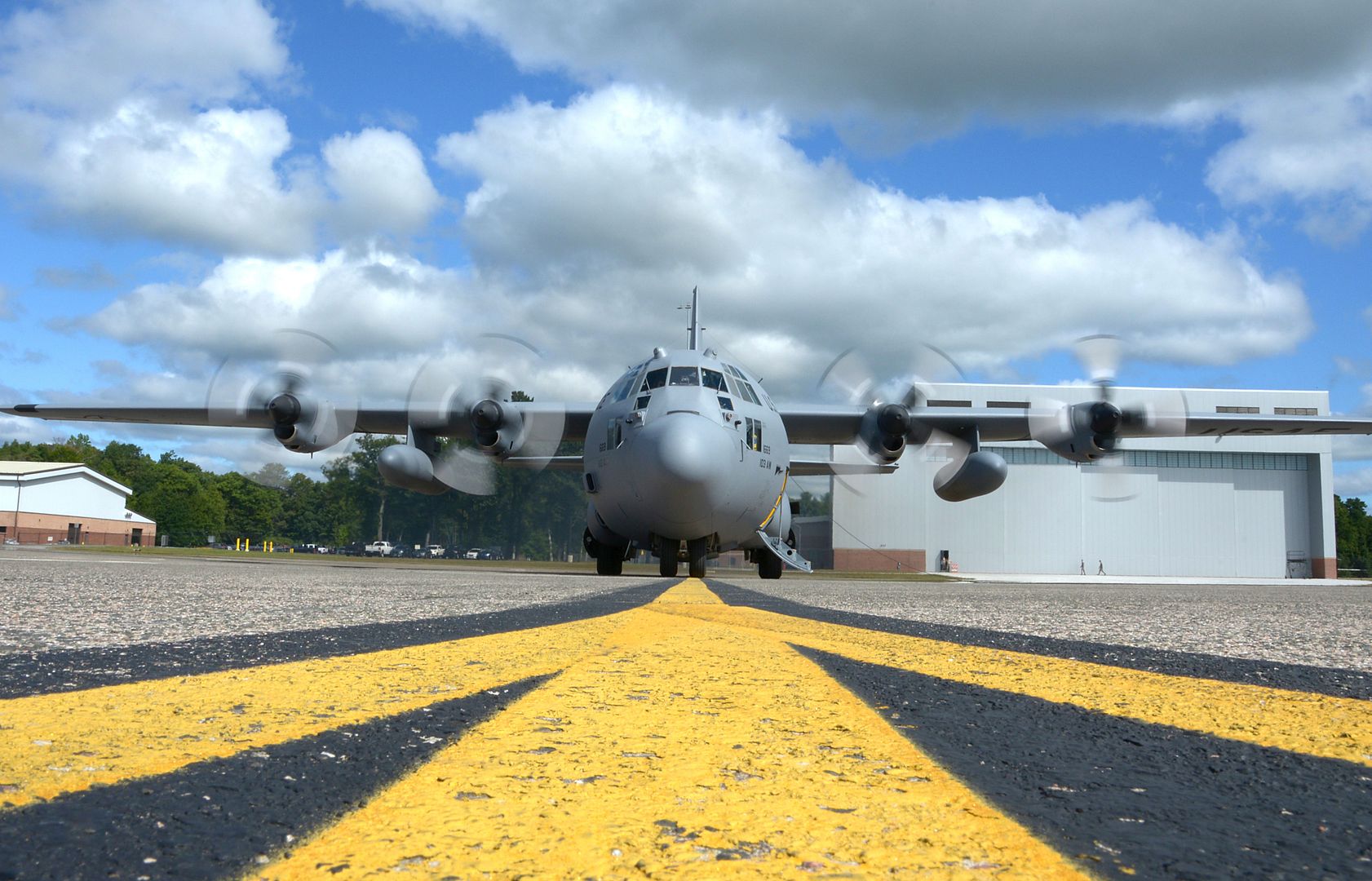
A C-17 Globemaster III, assigned to the Hawaii Air National Guard's 204th Airlift Squadron, returns to Joint Base Pearl Harbor-Hickam, Hawaii after a Hurricane Harvey relief mission on Sep. 10, 2017. The mission involved the tactical airdrop of generators, a mobile hospital and an ambulance among a long list of relief supplies. (U.S. Air National Guard photo by Senior Airman Robert Cabuco)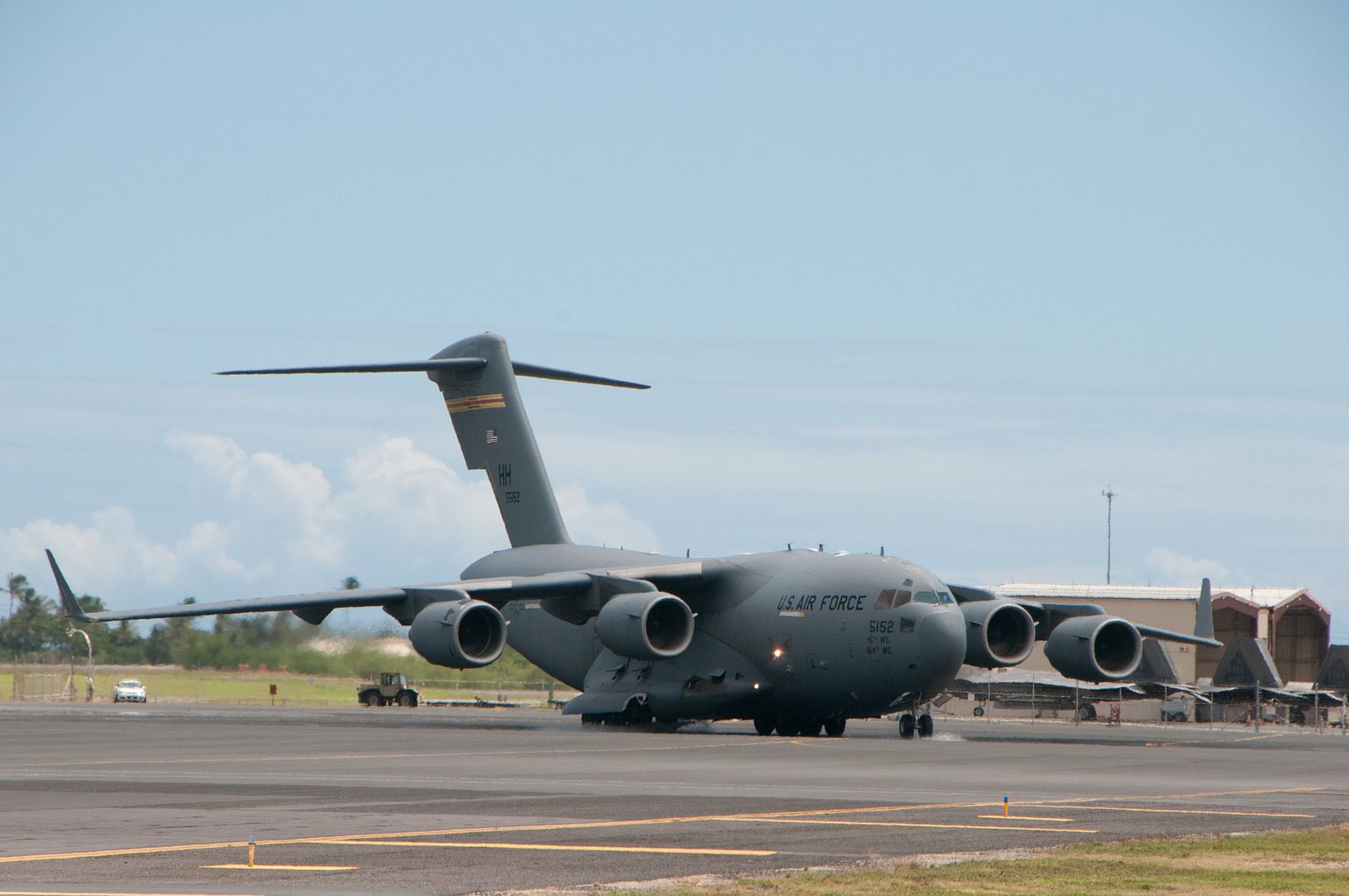
A Japan Air Self-Defense Force F-15J Eagle pilot maneuvers through the sky during Pacific Partners Air Festival at Misawa Air Base, Japan, Sept. 10, 2017. The F-15 Eagle is an all-weather, extremely maneuverable, tactical fighter designed to permit the Air Force to gain and maintain air supremacy over the battlefield. The air show was filled with aerial demonstrations, aircraft static displays and hands-on military equipment presentations. (U.S. Air Force photo by Airman 1st Class Sadie Colbert)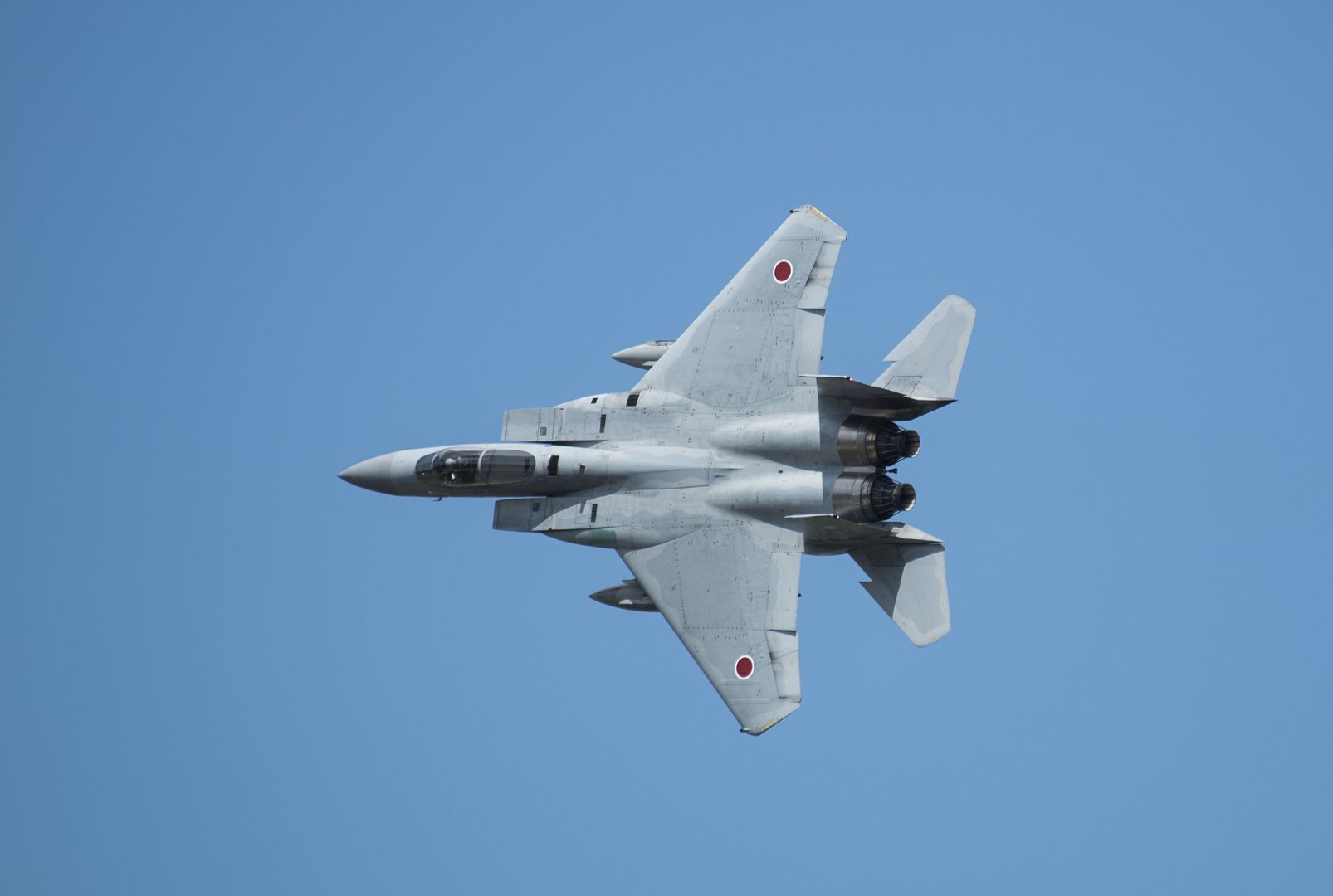
U.S. Air Force Maj. Richard Smeeding, Pacific Air Forces Demonstration Team pilot, performs an aerial manuever during the Pacific Partners Air Festival at Misawa Air Base, Japan, Sept. 10, 2017. Smeeding performed several maneuvers demonstrating the compact, multi-role fighter F-16?s combat capabilities. It is highly maneuverable and has proven itself in air-to-air combat and air-to-surface attack. It provides a relatively low-cost, high-performance weapon system for the United States and allied nations. (U.S. Air Force photo by Airman 1st Class Sadie Colbert)
A Royal Air Force C-130J Hercules transport aircraft has arrived in Barbados from RAF Brize Norton, carrying more than 6 tonnes of rations and water to support relief efforts in the Caribbean following Hurricanes Irma and Jose. The C-130J joins a fleet of RAF air mobility aircraft operating in the region under 38 Expeditionary Air Wing, including C-17 Globemaster, A400M Atlas and Voyager aircraft. Since 8 September, 38 EAW has supported the movement of 700 passengers into and around the Caribbean, and enabled the delivery of more than 70 tonnes of freight to British Overseas Territories affected by the hurricanes, in support of DFID - UK Department for International Development relief operations. Freight has included life-saving water filtration equipment and search and rescue gear for UK NGOs.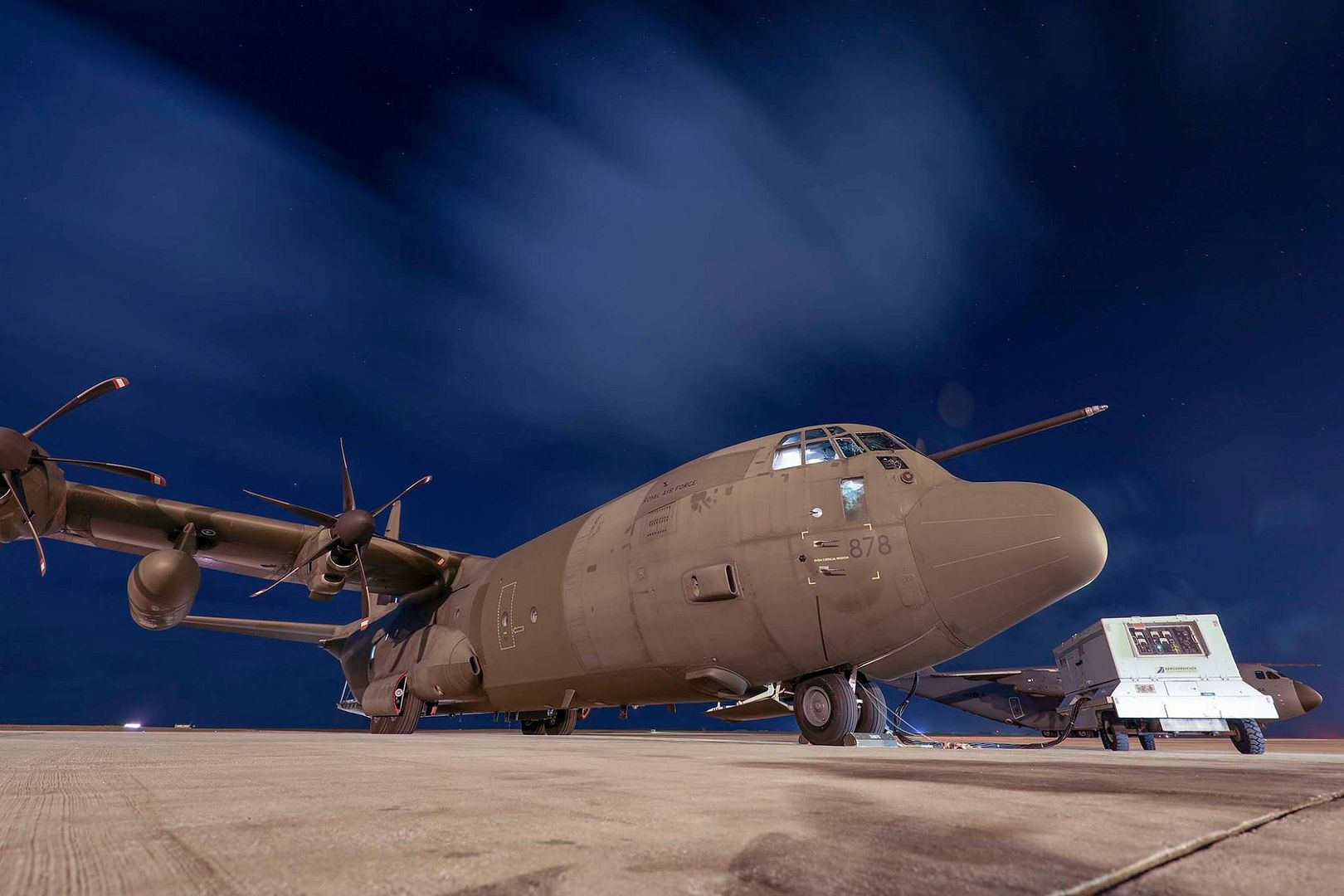
Photo's credit: Cpl Jimmy Wise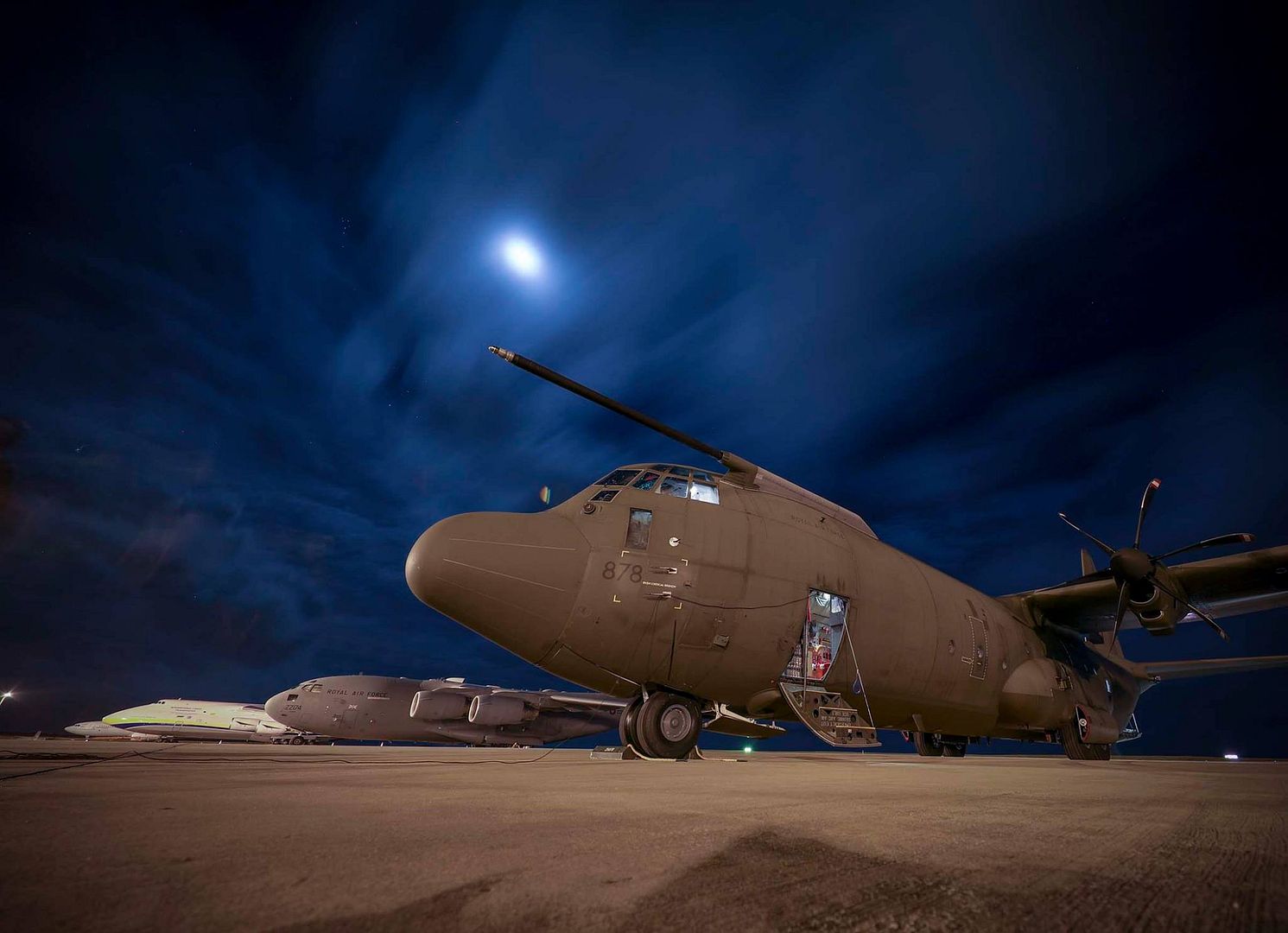
-
 Main AdminA C-17 Globemaster III from Joint Base Charleston, S.C., taxis on the tarmac at Travis Air Force Base, Calif., Sep. 11, 2017. The C-17 Globemaster III is delivering much needed supplies to areas devastated by Hurricane Irma. (U.S. Air Force photo by Louis Briscese)
Main AdminA C-17 Globemaster III from Joint Base Charleston, S.C., taxis on the tarmac at Travis Air Force Base, Calif., Sep. 11, 2017. The C-17 Globemaster III is delivering much needed supplies to areas devastated by Hurricane Irma. (U.S. Air Force photo by Louis Briscese)
A view out of an Air Force Reserve WC-130J Super Hercules of the 53rd Weather Reconnaissance Squadron, Keesler Air Force Base, Mississippi during a mission to fly through the eye of Hurricane Irma Sep. 10, 2017. The Air Force Reserve 53rd Weather Reconnaissance Squadron "Hurricane Hunters" fly WC-130J Super Hercules though the eye of active hurricanes to collect weather data using aircraft and externally dropped sensors to provide accurate weather data to the National Hurricane Center on approaching hurricanes. The Reserve Citizen Airmen provide 100 percent of the Air Force capability in low-level, real time data collection in Atlantic and Pacific Ocean tropical weather systems. (U.S. Air Force photo by Staff Kyle Brasier)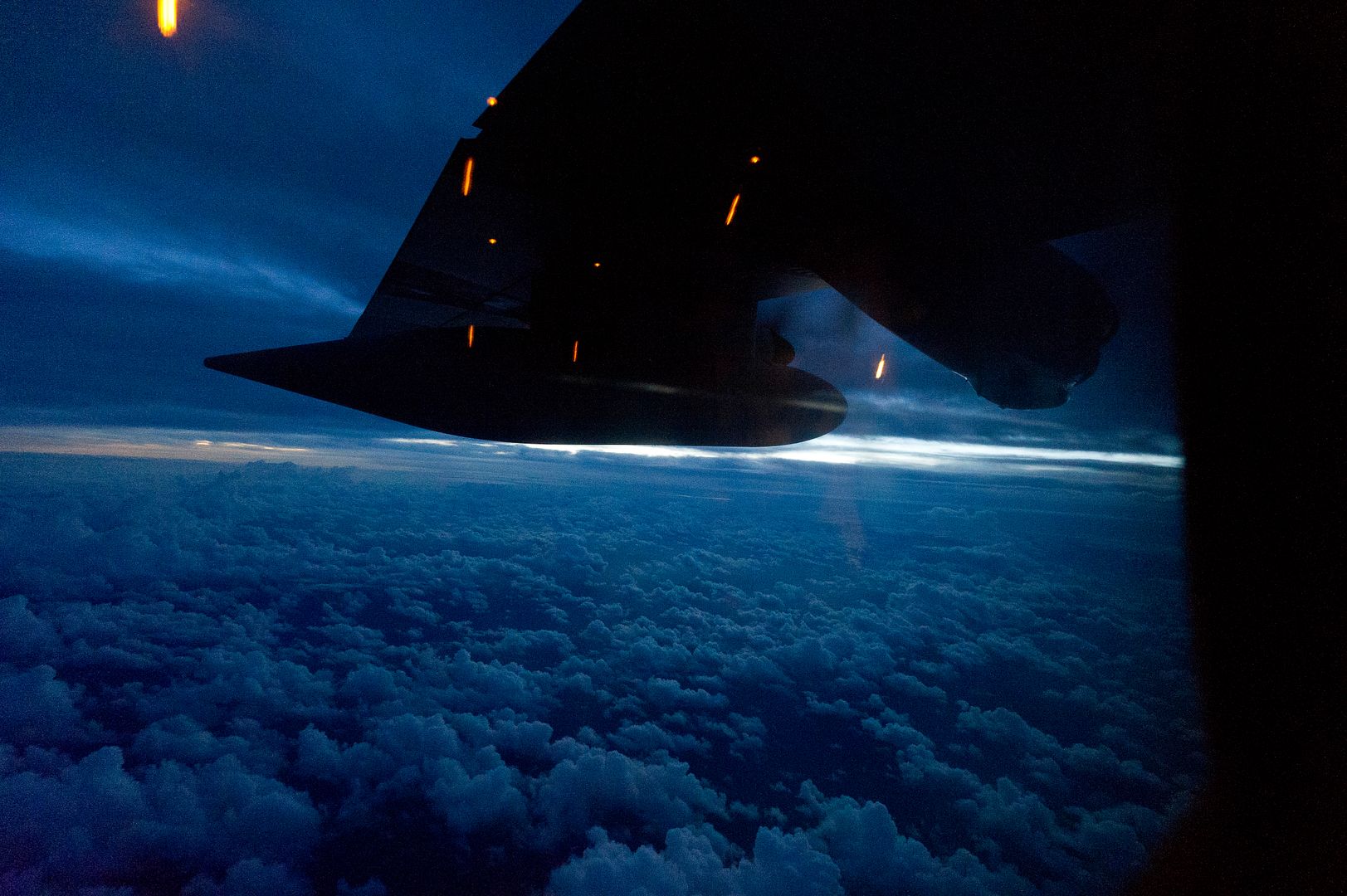
Airmen of the 52nd Fighter Wing conduct a pre-flight check on a F-16 Fighting Falcon at Krzesiny Air Base, Poland, Sept. 11, 2017. Aviation Rotation 17-4 focuses on maintaining joint readiness while building interoperability capabilities. Through strengthened relationships and engagements with our Allies, the United States and NATO demonstrate their shared commitment to a peaceful, stable and secure Europe. (U.S. Air Force photo by Staff Sgt. Jonathan Snyder)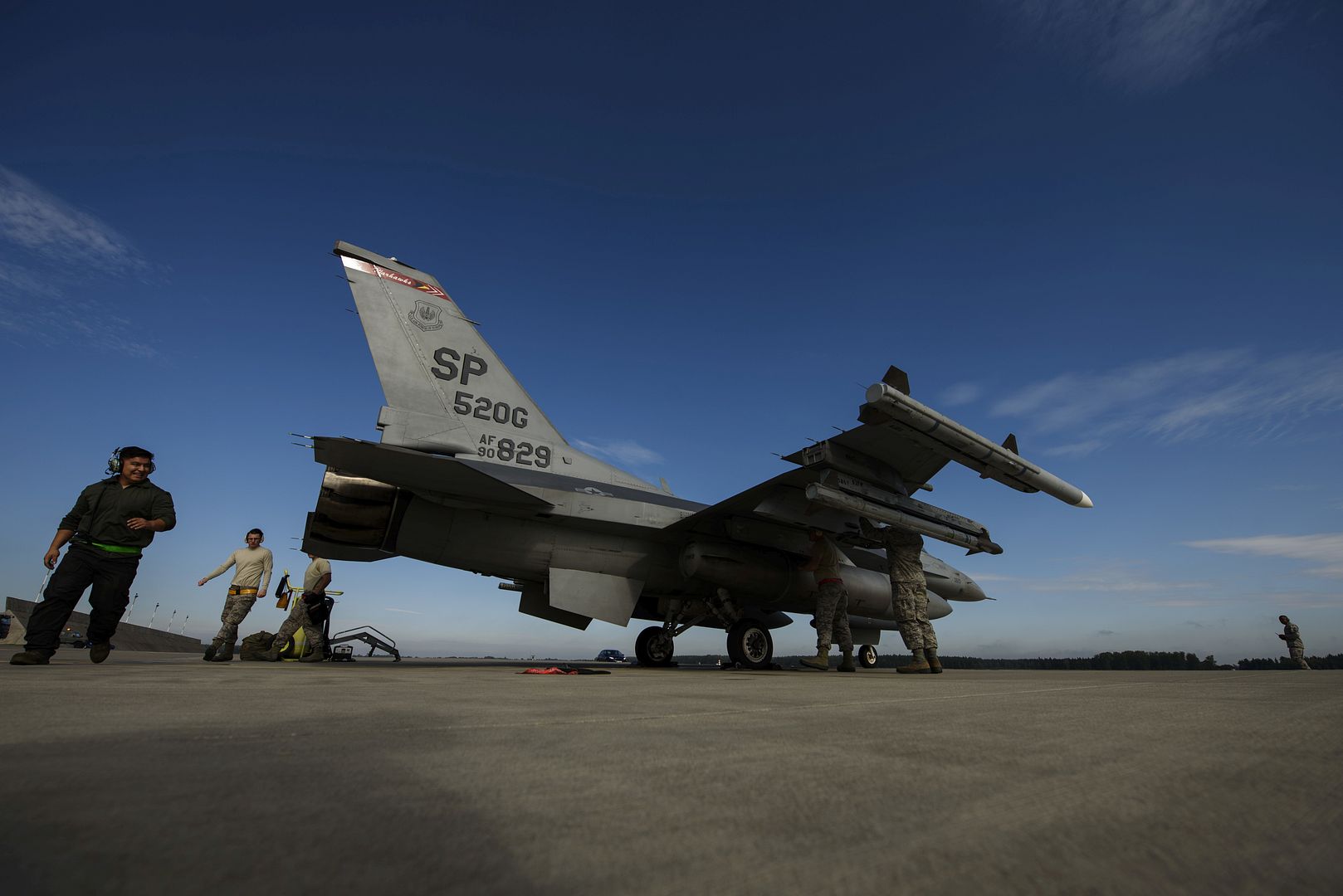
Senior Airman Joseph Clark, 52nd Aircraft Maintenance Squadron assistant dedicated crew chief, talks with the pilot during pre-flight check at Krzesiny Air Base, Poland, Sept. 11, 2017. Aviation Rotation 17-4 focuses on maintaining joint readiness while building interoperability capabilities. Through strengthened relationships and engagements with our Allies, the United States and NATO demonstrate their shared commitment to a peaceful, stable and secure Europe. (U.S. Air Force photo by Staff Sgt. Jonathan Snyder)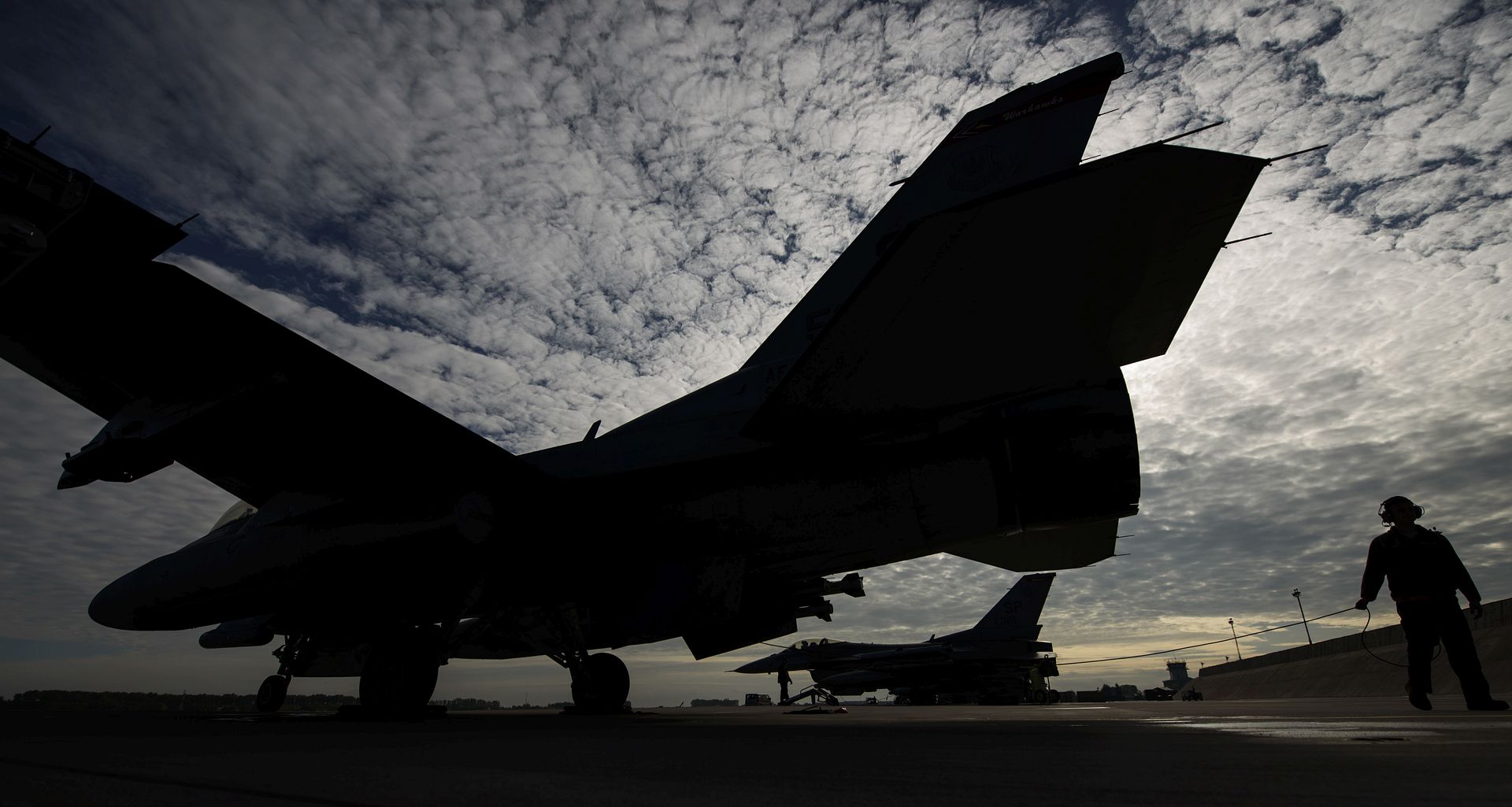
A U.S. Air Force F-15C Eagle launches for a sortie in support of the NATO Baltic Air Policing mission at Siauliai Air Base, Lithuania, Sept. 8. The 493rd Expeditionary Fighter Squadron has successfully intercepted and redirected two aircraft and conducted twenty sorties while protecting the skies in the Baltic region. (U.S. Air Force photo/ Tech. Sgt. Matthew Plew)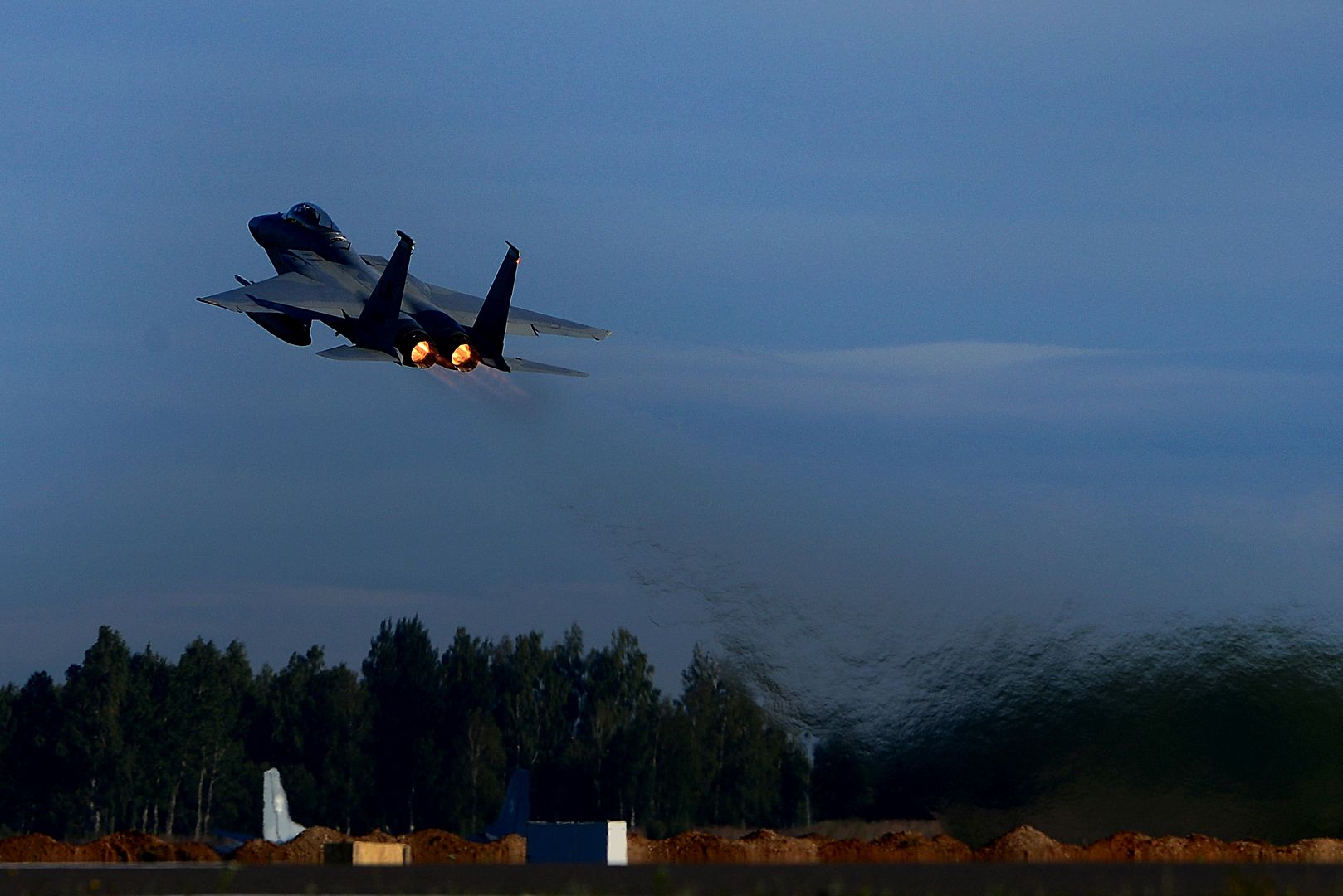
TINKER AIR FORCE BASE, Okla. -- Five E-8C Joint Surveillance Target Attack Radar System aircraft from the 116th Air Control Wing, Georgia Air National Guard, Robins Air Force Base, Georgia, evacuated to Tinker Air Force Base, Oklahoma, to escape the path of Hurricane Irma Sept. 9, 2017.
According to Col. Ato Crumbly, 116th Operations Group commander, the decision to send the aircraft to Tinker was ?to ensure that none of our aircraft sustained any weather damage from Hurricane Irma, or any severe thunderstorms or possible tornadoes that may spin up from the hurricane.?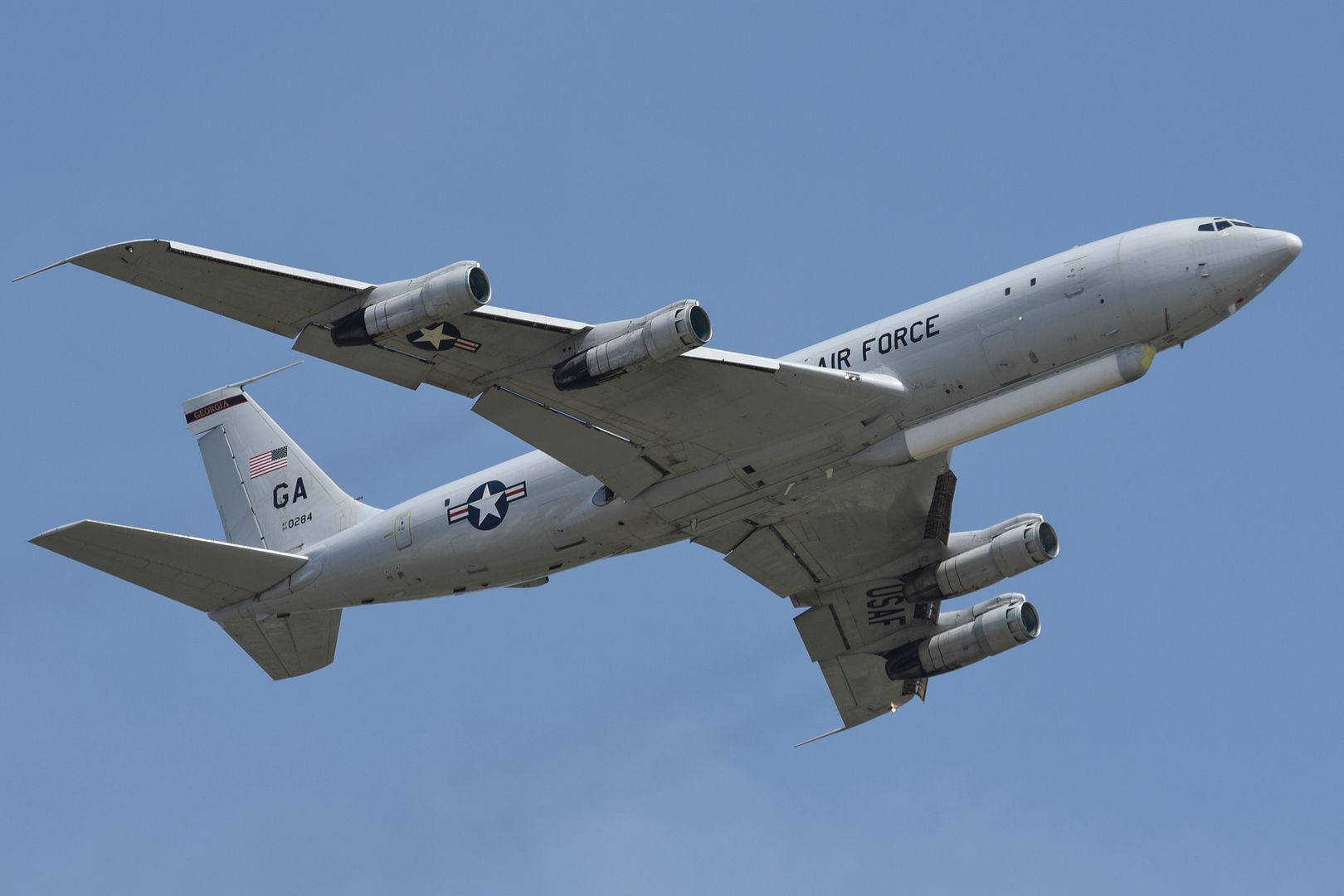
Plans call for the aircraft to remain at Tinker until Sept. 13.
(U.S. Air Force photo's by Greg L. Davis)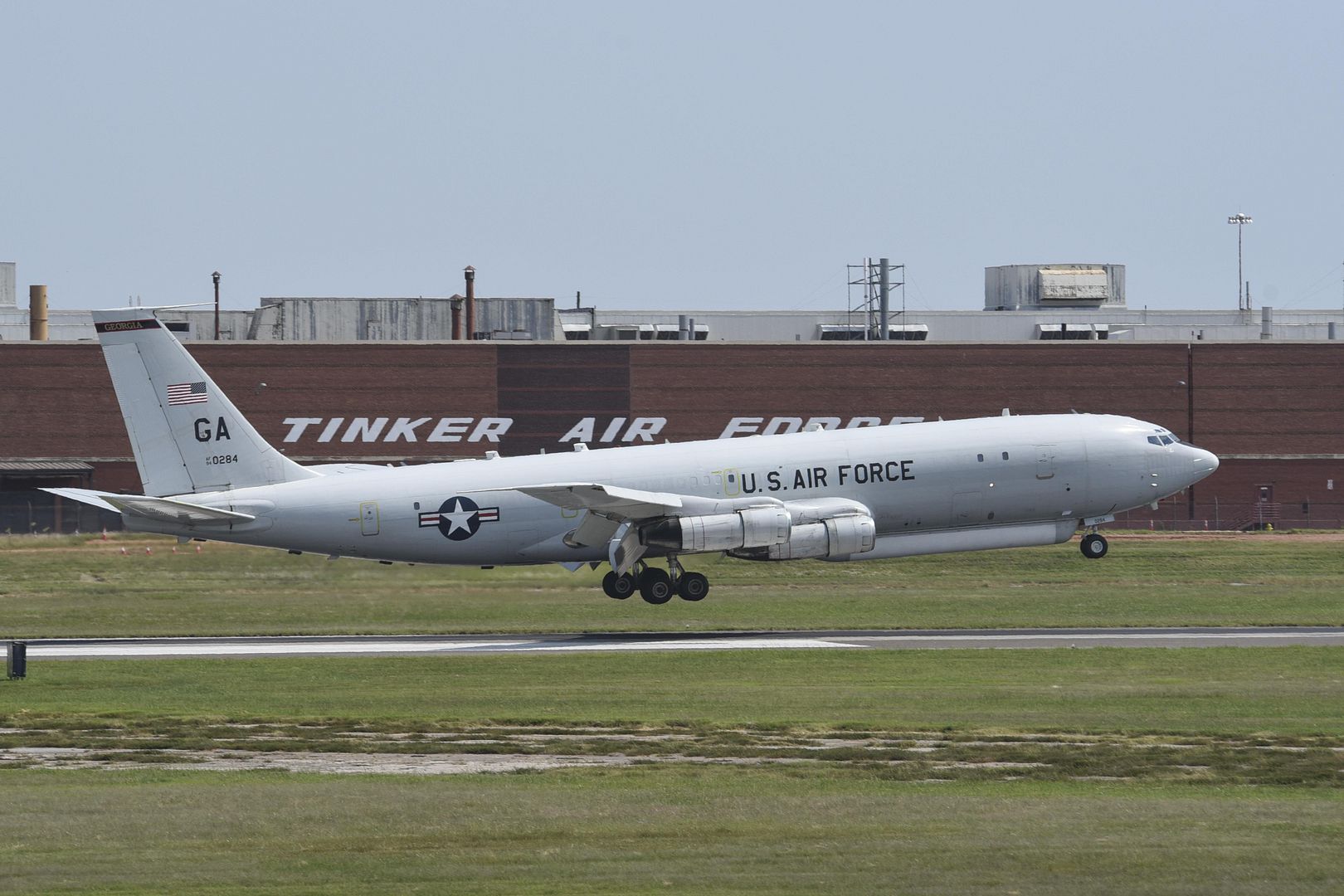
-
 Main AdminA U.S. Air Force C-17 Globemaster III on the flight line of Scott Air Force Base, Ill., before conducting a mission to St. Thomas, U.S. Virgin Islands in response of Hurricane Irma Sept. 11, 2017. C-17s from Charleston Air Force base relocated to Scott AFB to carry pallets of aid, equipment, and more than 100 personnel to respond to the areas affected by Hurricane Irma. (U.S. Air Force photo by Airman 1st Class Nicholas Dutton)
Main AdminA U.S. Air Force C-17 Globemaster III on the flight line of Scott Air Force Base, Ill., before conducting a mission to St. Thomas, U.S. Virgin Islands in response of Hurricane Irma Sept. 11, 2017. C-17s from Charleston Air Force base relocated to Scott AFB to carry pallets of aid, equipment, and more than 100 personnel to respond to the areas affected by Hurricane Irma. (U.S. Air Force photo by Airman 1st Class Nicholas Dutton)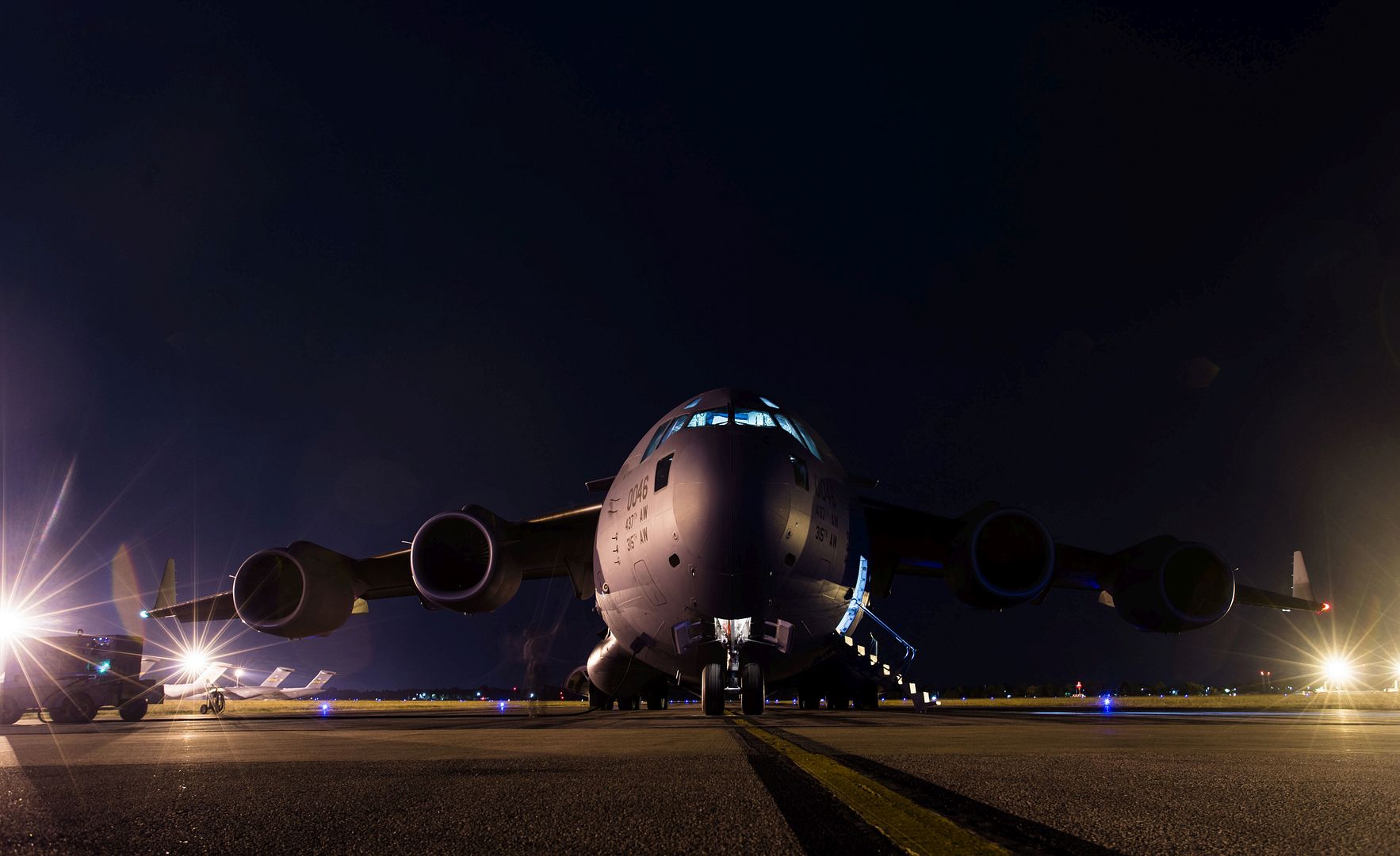
A C-130 Hercules assigned to the 36th Airlift Squadron flies over Yokota Air Base, Japan, during a routine sortie Sept. 12, 2017. The 36th AS regularly conducts training missions to remain proficient in the necessary skills to support any contingency. (U.S. Air Force photo by Yasuo Osakabe)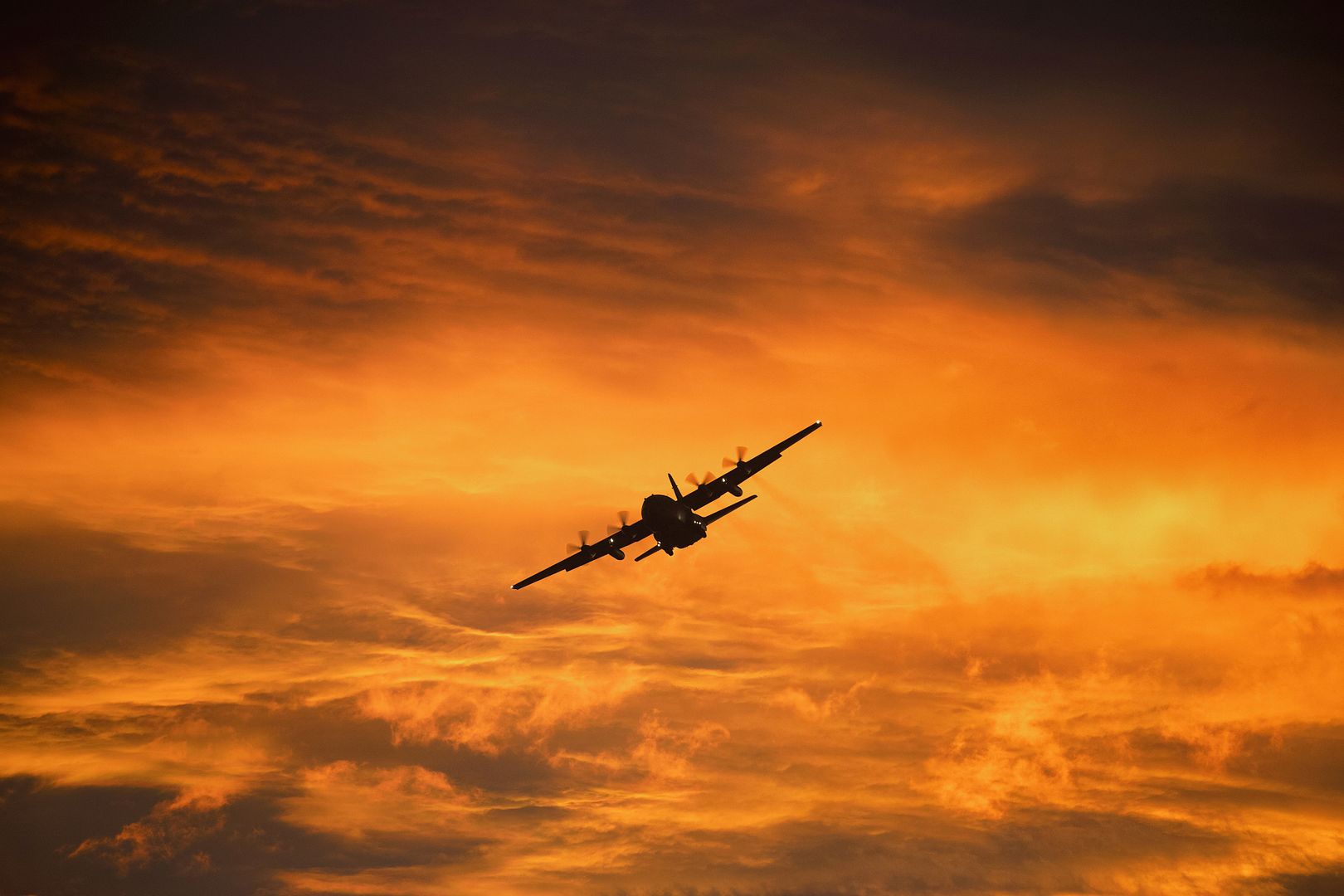
LONDON, September 12, 2017 ? Sikorsky, a Lockheed Martin company, today presented Bristow Helicopters Limited with the Sikorsky Winged-S Rescue Award in recognition of a recent life-saving mission in the North Atlantic. The award was accepted during the 2017 Defence and Security Equipment International exhibition.
Bristow Helicopters currently operates S-92 helicopters on behalf of the UK Maritime and Coastguard Agency (MCA) for the critical mission of search and rescue (SAR), following the award of the 10-year UK SAR contract by the Department for Transport in March 2013. Since April 2015, an estimated 4,500 search and rescue missions have been executed, many utilizing the UK SAR S-92 helicopters.
In May 2017, a Bristow crew operating an S-92 helicopter out of the HM Coastguard Prestwick SAR base rescued 22-year-old Matthew Bryce who was stranded at sea for 32 hours. Bryce ventured out from the west coast of Scotland to enjoy a day of surfing on a Sunday morning, later causing concern to his family when he did not return. Authorities were alerted the following day, and after an extensive multi-agency air and sea search lasting several hours, Bryce was found by the crew of the Prestwick S-92, call sign ?Rescue 999? drifting off the coast of Northern Ireland. During a mission lasting over six hours, the crew of Rescue 999 hoisted Bryce from the sea that Monday evening. He was safely transported to a Belfast hospital and later recovered.
The Prestwick SAR base is one of the busiest in the UK. The latest UK SAR helicopter statistics issued by the UK Department for Transport (DfT) show that in the latest quarter, April to June 2017, the Prestwick base was the third busiest base, responding to 79 taskings, and carrying out the second highest number of land taskings, with many in or near Loch Lomond and the Trossachs National Park.
?We have been successfully operating S-92 helicopters for more than ten years. The high reliability of our S-92 helicopter fleet throughout that time has been absolutely critical to our time-sensitive mission,? said Damien Oliver, Assistant Director, UK MCA Aviation.
?Bristow is proud to operate the S-92 helicopter to fulfill the UK Maritime and Coastguard Agency?s mission to save lives, and our team is honored to receive this recognition,? said Neil Ebberson, Project Manager, Bristow UK Search and Rescue. ?Sikorsky?s legacy in lifesaving, coupled with the latest technology of the S-92 helicopter, provides an outstanding solution for the high operational demands of our SAR business.?
Beginning in 1950, the Winged-S Rescue Award Program honors those who perform rescues flying a Sikorsky helicopter. Through this award, Sikorsky acknowledges the humanitarian efforts of pilots and crewmembers who put themselves in harm's way to save others, fulfilling Igor Sikorsky's vision of the helicopter.
Since 2004, Sikorsky has delivered more than 275 S-92 helicopters, predominantly to
operators serving the worldwide offshore oil and gas industry, and for civil search and rescue operations. Eleven nations fly the S-92 helicopter for their head of state missions. In May 2014, Sikorsky was selected to build the next U.S. Presidential Helicopter Fleet, the world?s most advanced executive transport helicopter, using the S-92 platform.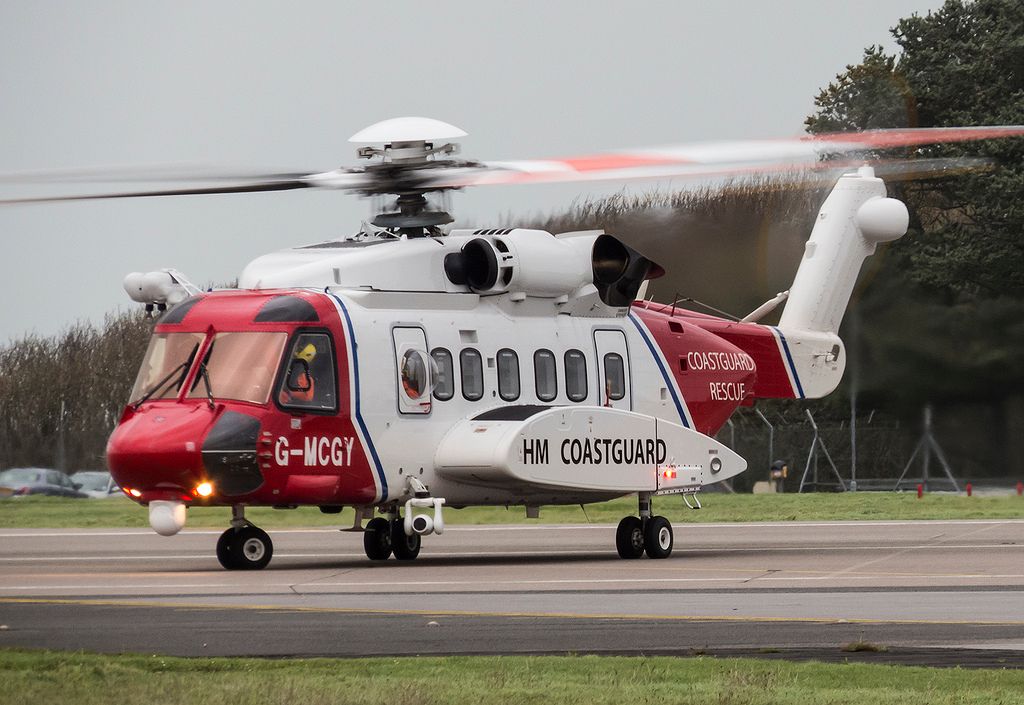
WASHINGTON, Sept. 12, 2017 /PRNewswire/ -- Boeing [NYSE: BA] and Malaysia Airlines Berhad (Malaysia Airlines) today signed a Memorandum of Understanding for 16 airplanes during a ceremony at the St. Regis Hotel in Washington D.C.
The signing was witnessed by Dato' Sri Mustapa bin Mohamed, Malaysian Minister of International Trade and Industry and in the presence of The Honorable Dato' Sri Muhammad Najib Bin Tun Abdul Razak, Prime Minister of Malaysia as well as members from the airline and Boeing.
The announcement includes eight 787-9 Dreamliners by converting eight of Malaysia Airlines' existing order of the Boeing 737 MAX aircraft and eight additional purchase rights of the 737 MAX 8s as well as Boeing's Global Fleet Care service to maintain the national carrier's current and future Boeing airplanes. Once finalized, the deal will be posted to Boeing's Orders and Deliveries website.
"Malaysia Airlines is proud to sign this MOU for the widebody Boeing 787-9 Dreamliners and additional 737 MAXs, building on our more than 40 years of partnership with Boeing," said Peter Bellew, managing director and chief executive officer of Malaysia Airlines. "New widebody aircraft are a key to making Malaysia Airlines a premium airline offering a five star product again. The extraordinary range of the 787-9 gives an ability to operate to any point in Europe and some USA destinations in the future from Kuala Lumpur. The MOU with Boeing on their Global Fleet Care program will allow the two companies to build a world class MRO for the 737 MAX, 787 and 737NG based on Malaysia's existing facilities in Kuala Lumpur."
Malaysia Airlines currently operates more than 50 Next-Generation 737s and has an additional 25 737 MAXs on order, including 10 for the new 737 MAX 10.
"Boeing offers the very best widebody and single aisle airplanes in the world and we are delighted Malaysia Airlines continues to put its trust and confidence in Boeing with this MOU for 16 Boeing airplanes," said Kevin McAllister, President and Chief Executive Officer, Boeing Commercial Airplanes. "The 787 and the 737 MAX will provide Malaysia Airlines with unmatched fuel efficiency, economics and a superior passenger experience as they continue to grow their business across Southeast Asia and beyond."
The 787 is a family of technologically advanced, super-efficient airplanes with new passenger-pleasing features and uses 25 percent less fuel and with 20 to 25 percent fewer emissions than the airplanes it replaces. The 737 MAX 10 will be the most profitable single-aisle airplane, offering the lowest seat costs ever. The 737 MAX family has been designed to offer customers exceptional performance, flexibility and efficiency, with lower per-seat costs and an extended range that will open up new destinations in the single-aisle market.
Boeing Global Fleet Care provides point solutions in the form of Engineering, Materials and Maintenance programs for air operators, accomplished through the use of decades of fleet data management, industry-leading technologies, and proprietary analytics and processes. Tailored to the individual airline, Boeing Global Fleet Care is a high-value, low-risk and efficient fleet maintenance operations solution that gives customers a competitive advantage in the marketplace.
About Malaysia Airlines
Malaysia Airlines is the national carrier of Malaysia, offering the best way to fly to, from and around Malaysia. Malaysia Airlines carries 40,000 guests daily on memorable journeys inspired by Malaysia's diverse richness. Malaysia Airlines embodies the incredible diversity of Malaysia, capturing its rich traditions, cultures, cuisines and warm hospitality on board, while opening up more of Malaysia's destinations than any other airline.
Since September 2015, the airline has been owned and operated by Malaysia Airlines Berhad. Via our alliance with oneworld?, Malaysia Airlines offers superior connectivity with seamless journeys to 1,000 destinations across 150 plus countries, and access to over 650 airport lounges worldwide. Up to 90 destinations will be serviced across Asia, Africa, the Americas and the Middle East via a new codeshare partnership with Emirates, signed in early 2016. For more information, please visit http://www.malaysiaairlines.com.
About The Boeing Company
Boeing is the world's largest aerospace company and leading manufacturer of commercial jetliners and defense, space and security systems and also provides numerous commercial airline and military support services. Boeing has been the premier manufacturer of commercial jetliners for more than 40 years and with its long tradition of aerospace leadership and innovation, continues to expand its product line and services to meet emerging customer needs. Boeing provides products and support services to customers in 150 countries and is one of the largest U.S. exporters in terms of sales. With corporate offices in Chicago, Boeing employs approximately 145,000 people across the United States and in more than 65 countries. For more information, visit www.boeing.com.
Post a reply
- Go to Previous topic
- Go to Next topic
- Go to Welcome
- Go to Introduce Yourself
- Go to General Discussion
- Go to Screenshots, Images and Videos
- Go to Off topic
- Go to Works in Progress
- Go to Skinning Tips / Tutorials
- Go to Skin Requests
- Go to IJAAF Library
- Go to Luftwaffe Library
- Go to RAF Library
- Go to USAAF / USN Library
- Go to Misc Library
- Go to The Ops Room
- Go to Made in Germany
- Go to Campaigns and Missions
- Go to Works in Progress
- Go to Juri's Air-Raid Shelter
- Go to Campaigns and Missions
- Go to Works in Progress
- Go to Skinpacks
- Go to External Projects Discussion
- Go to Books & Resources
